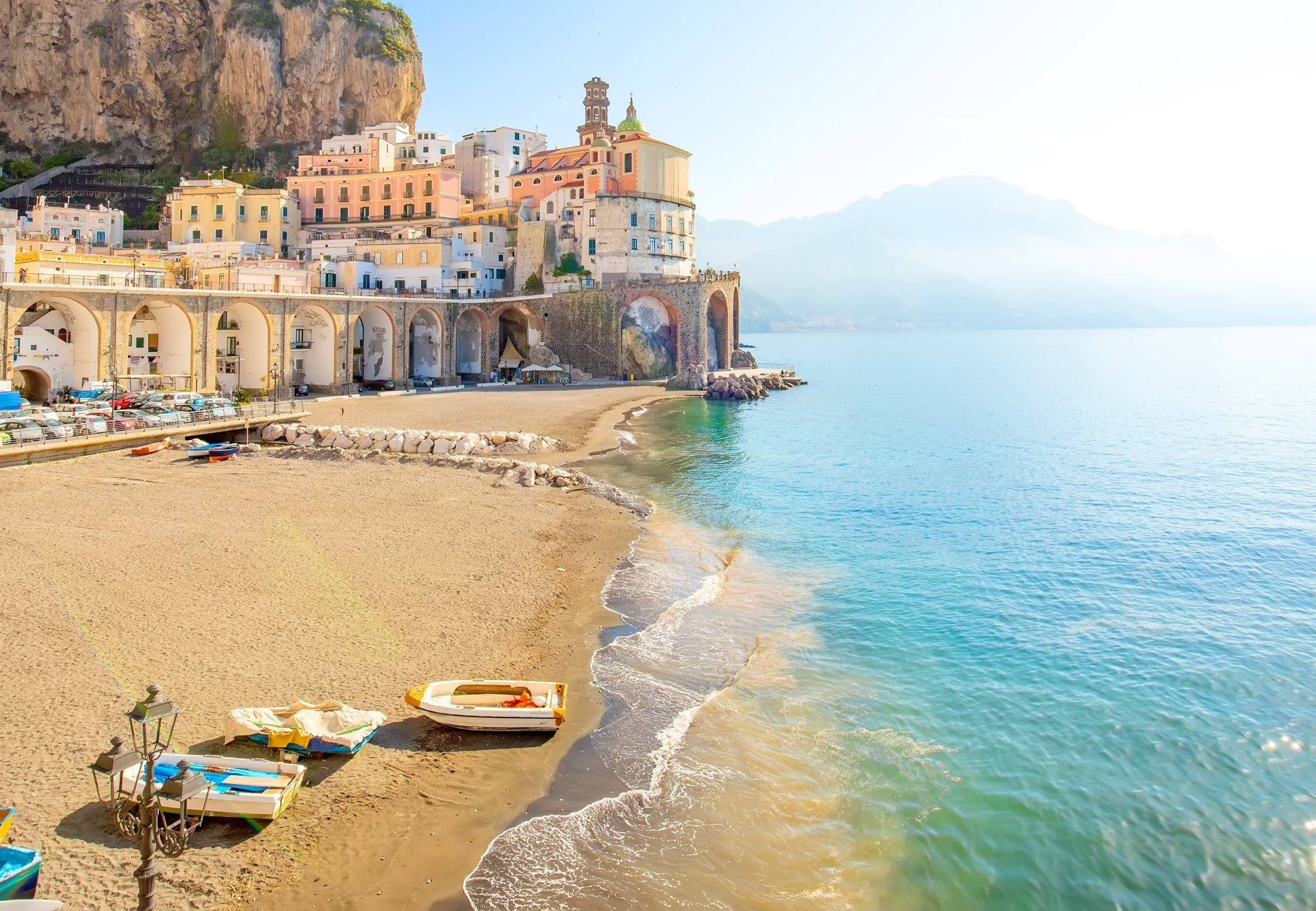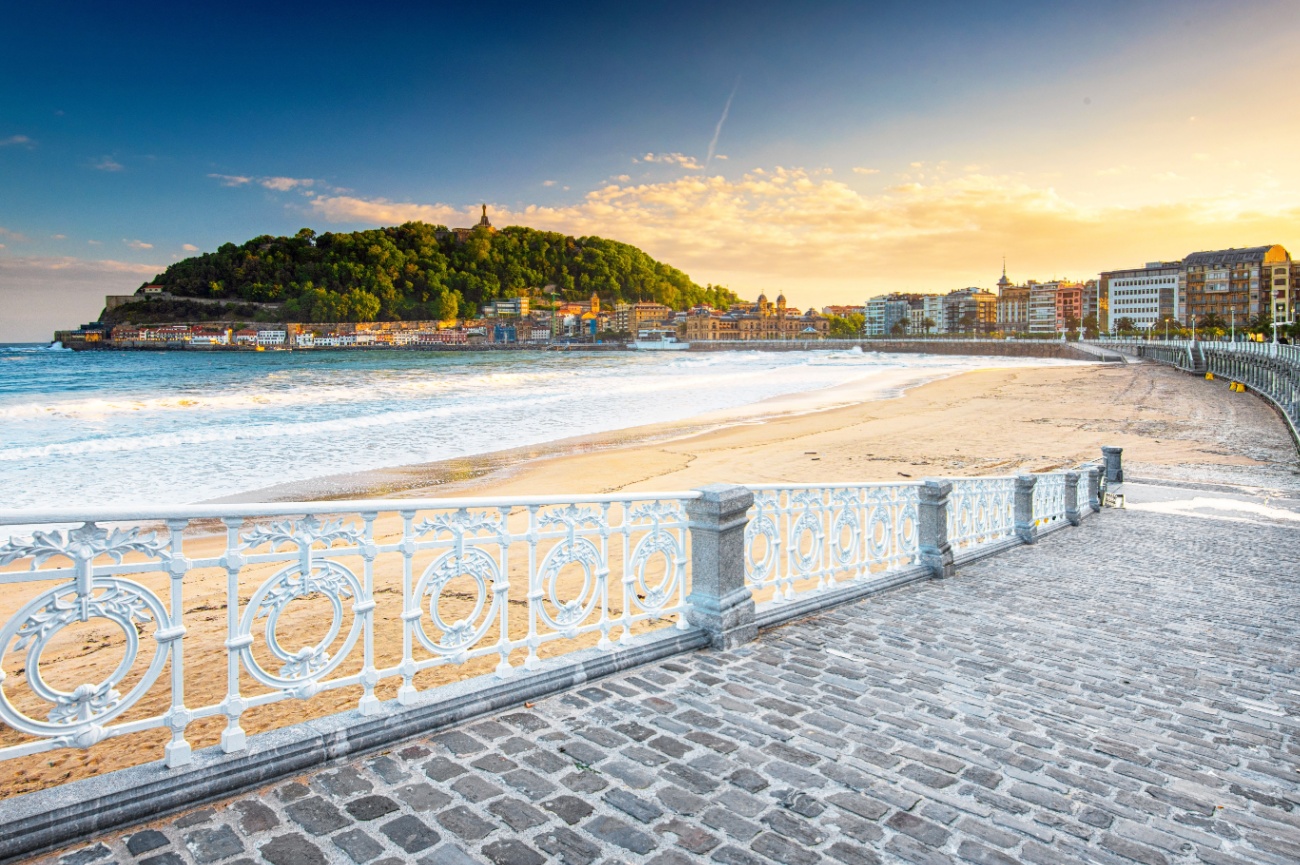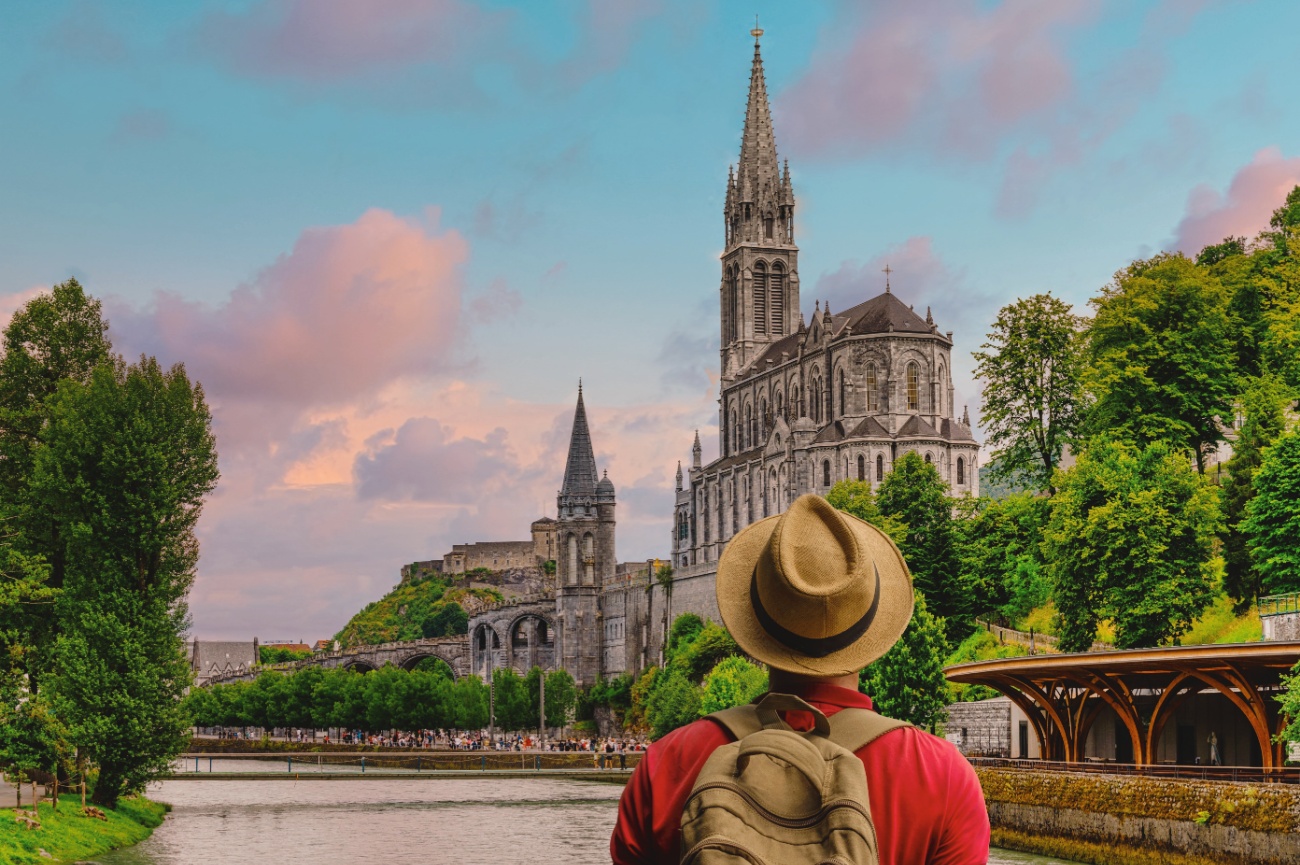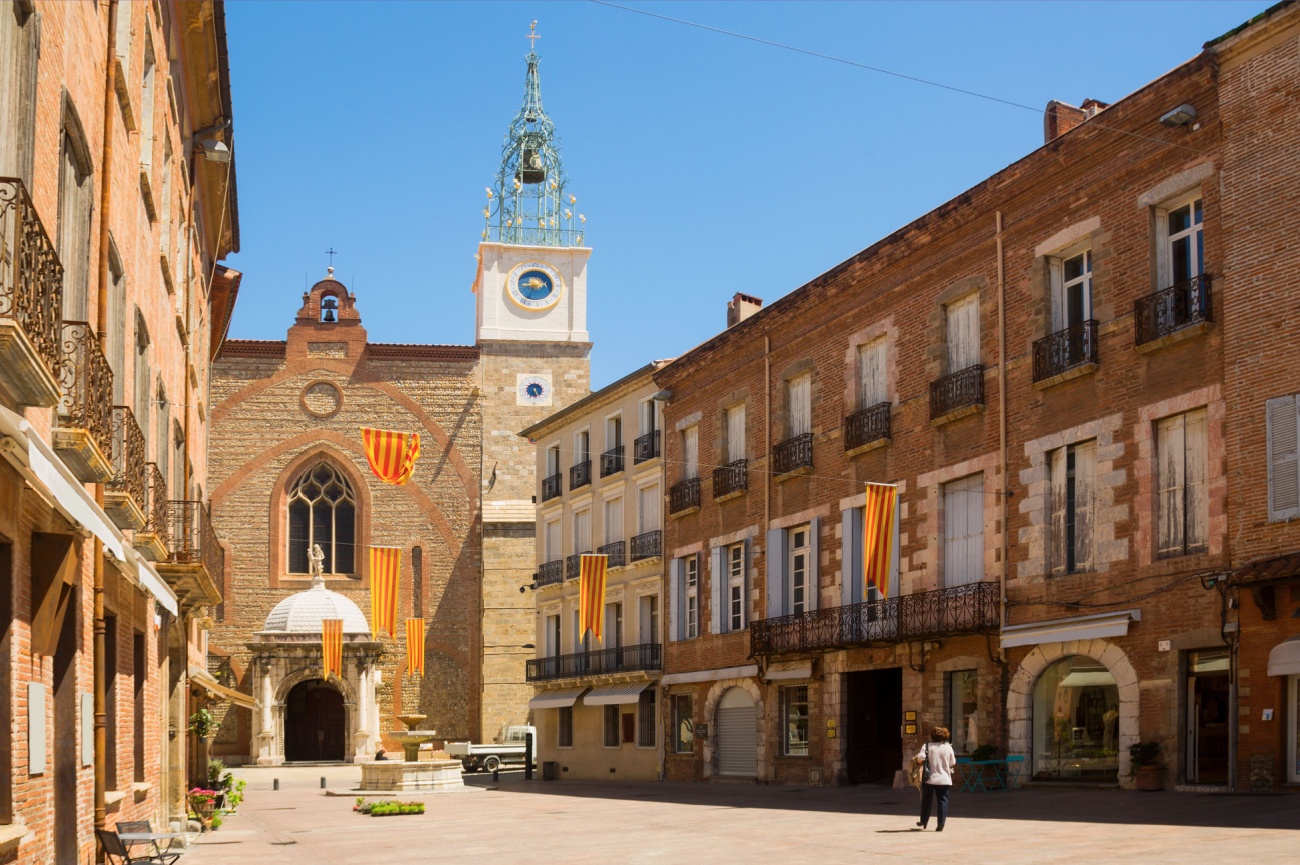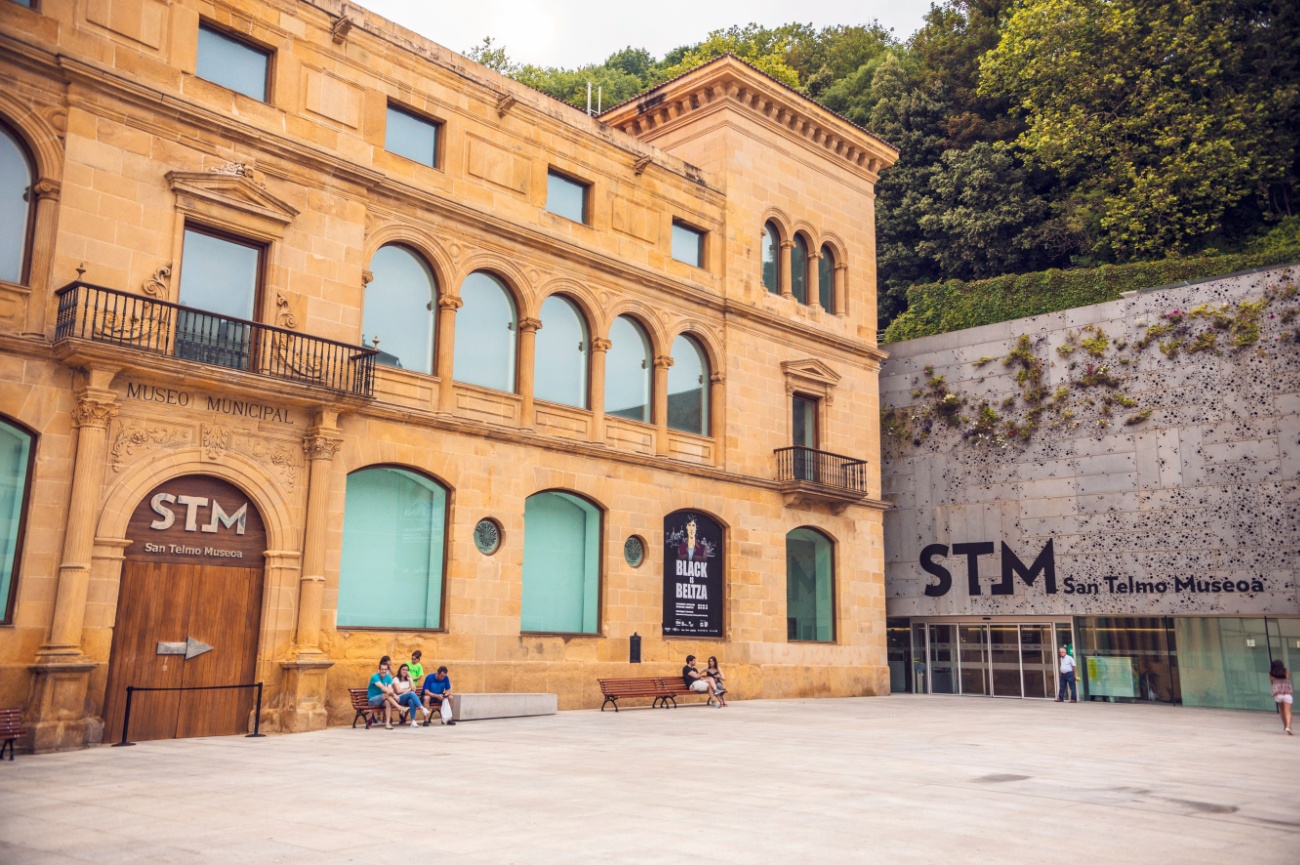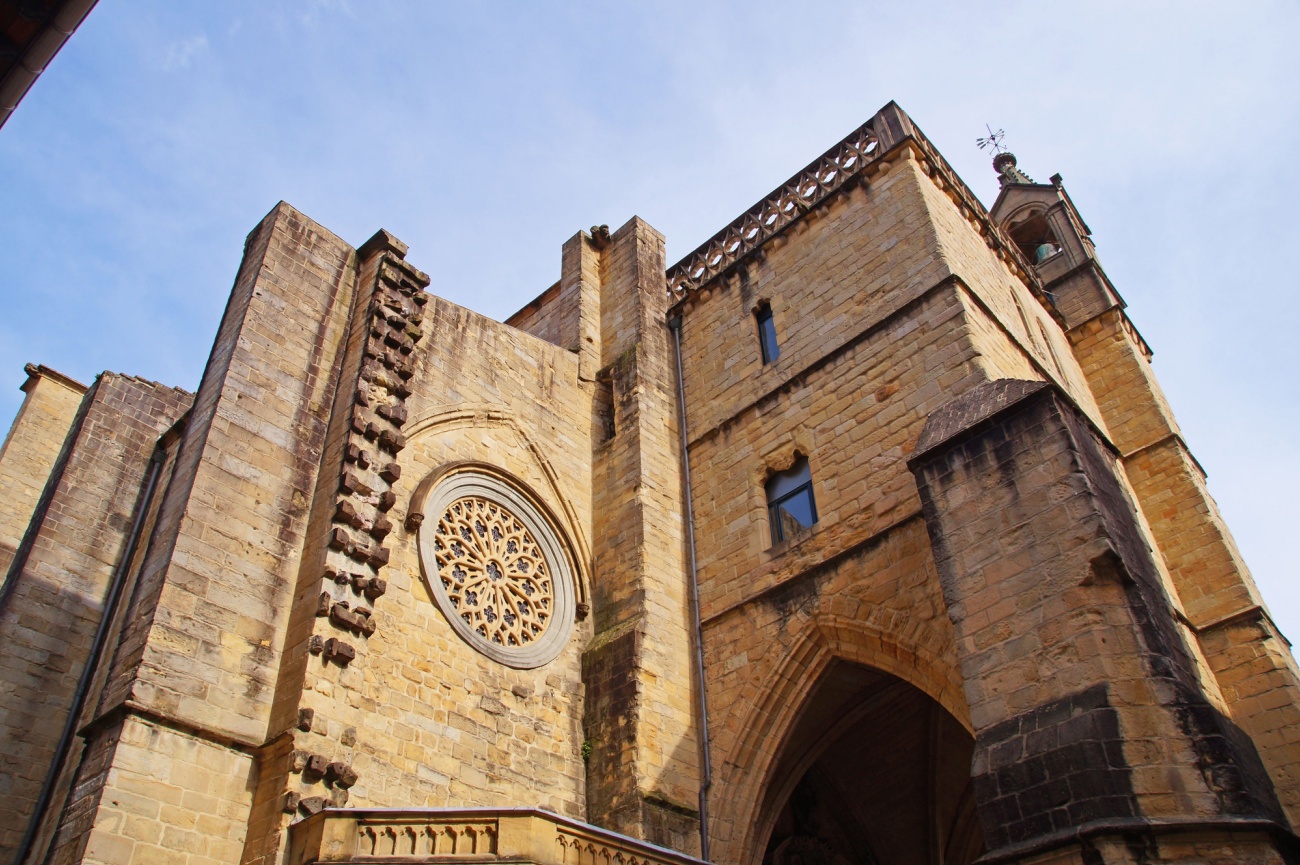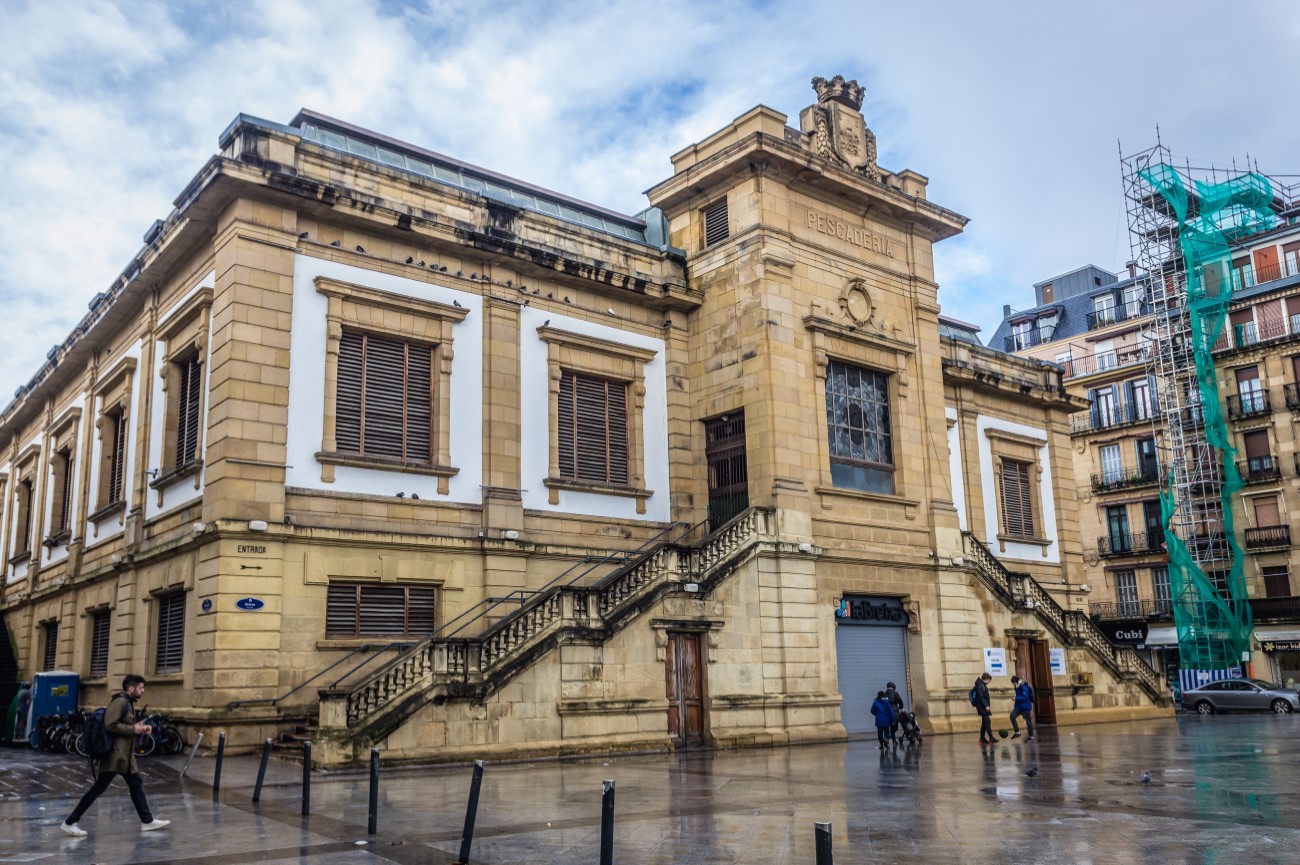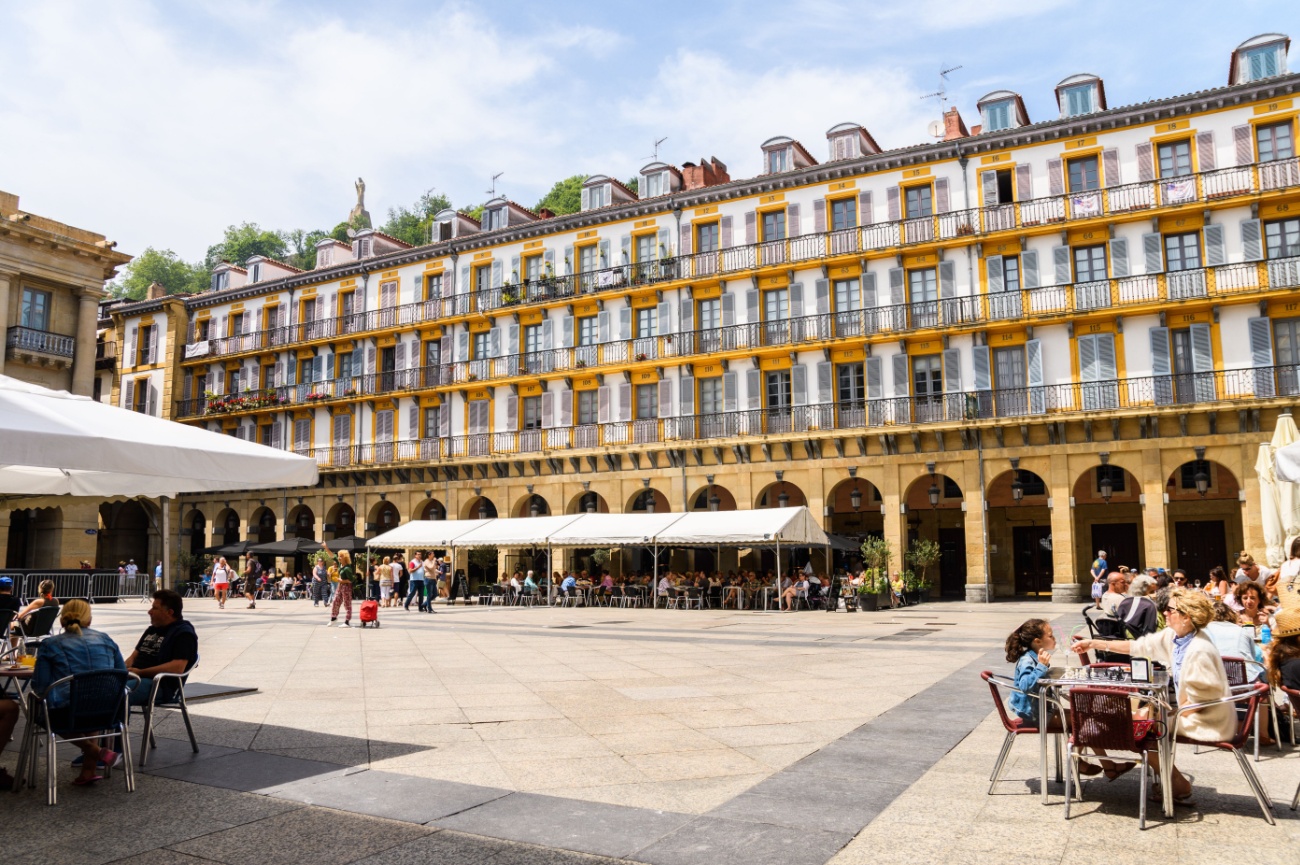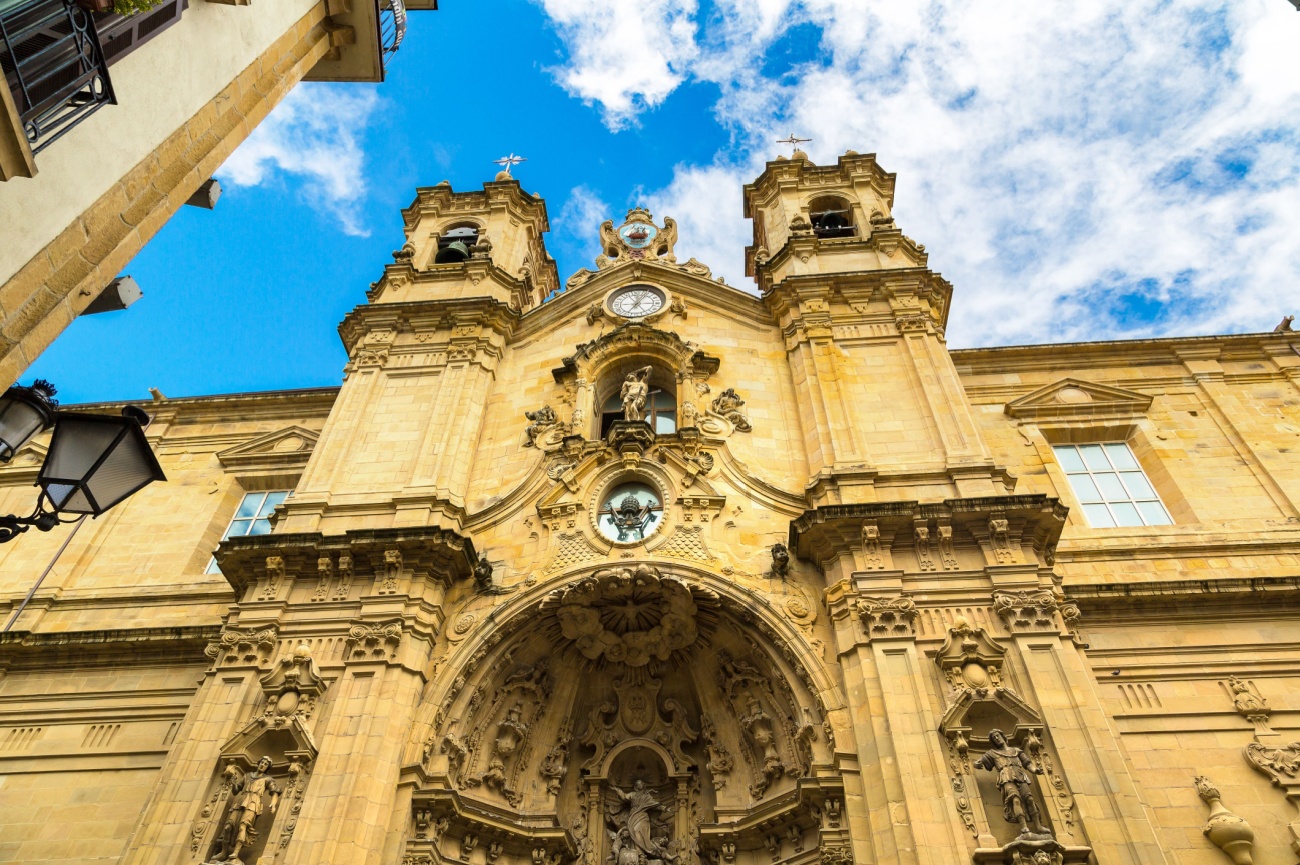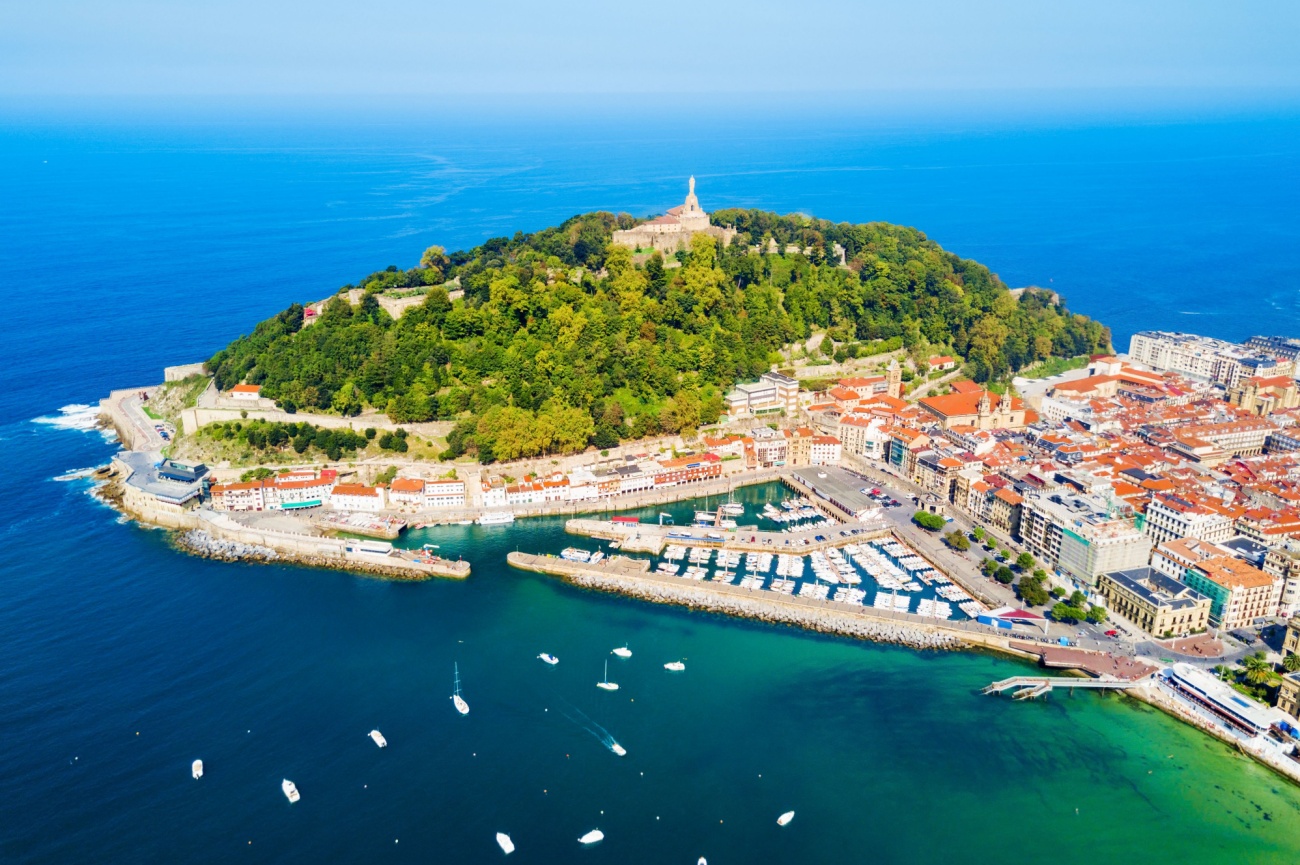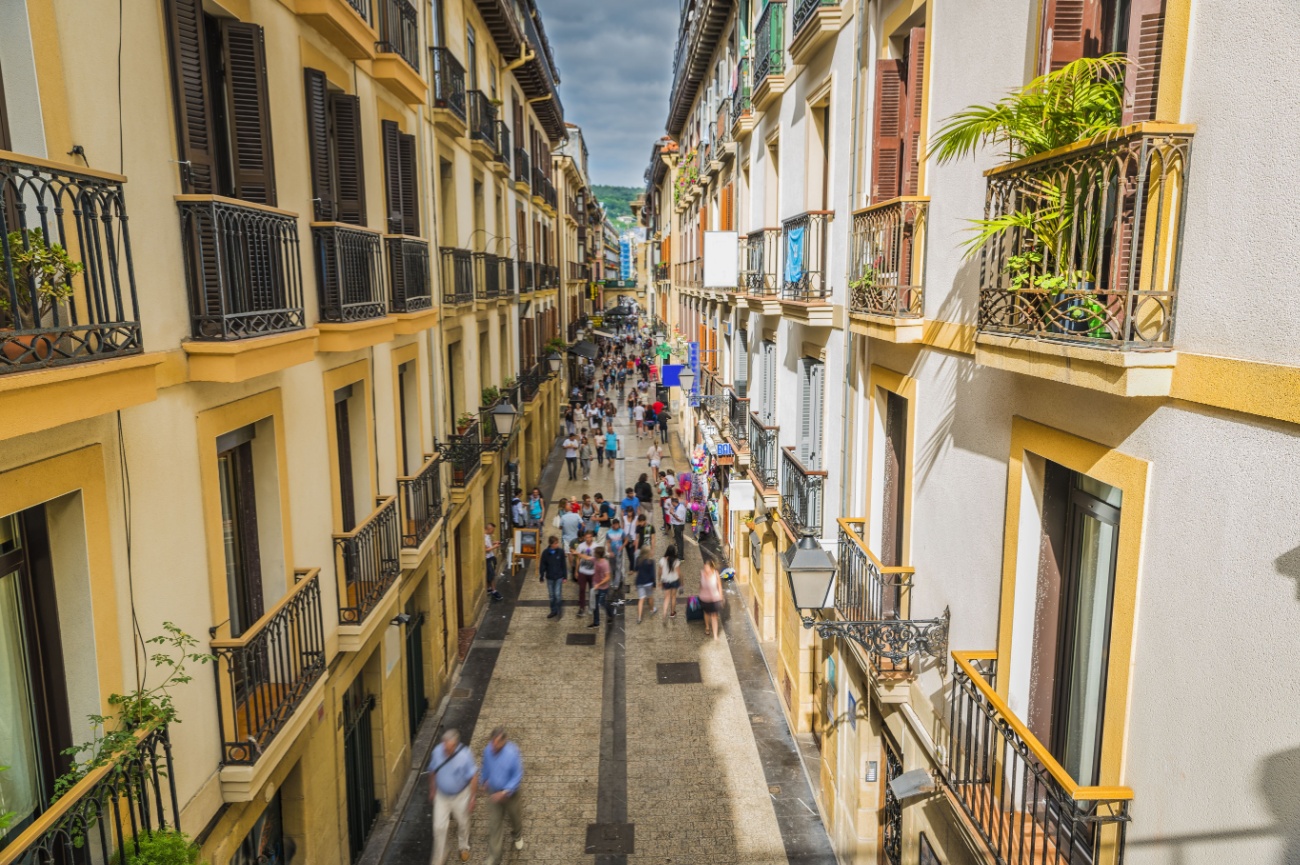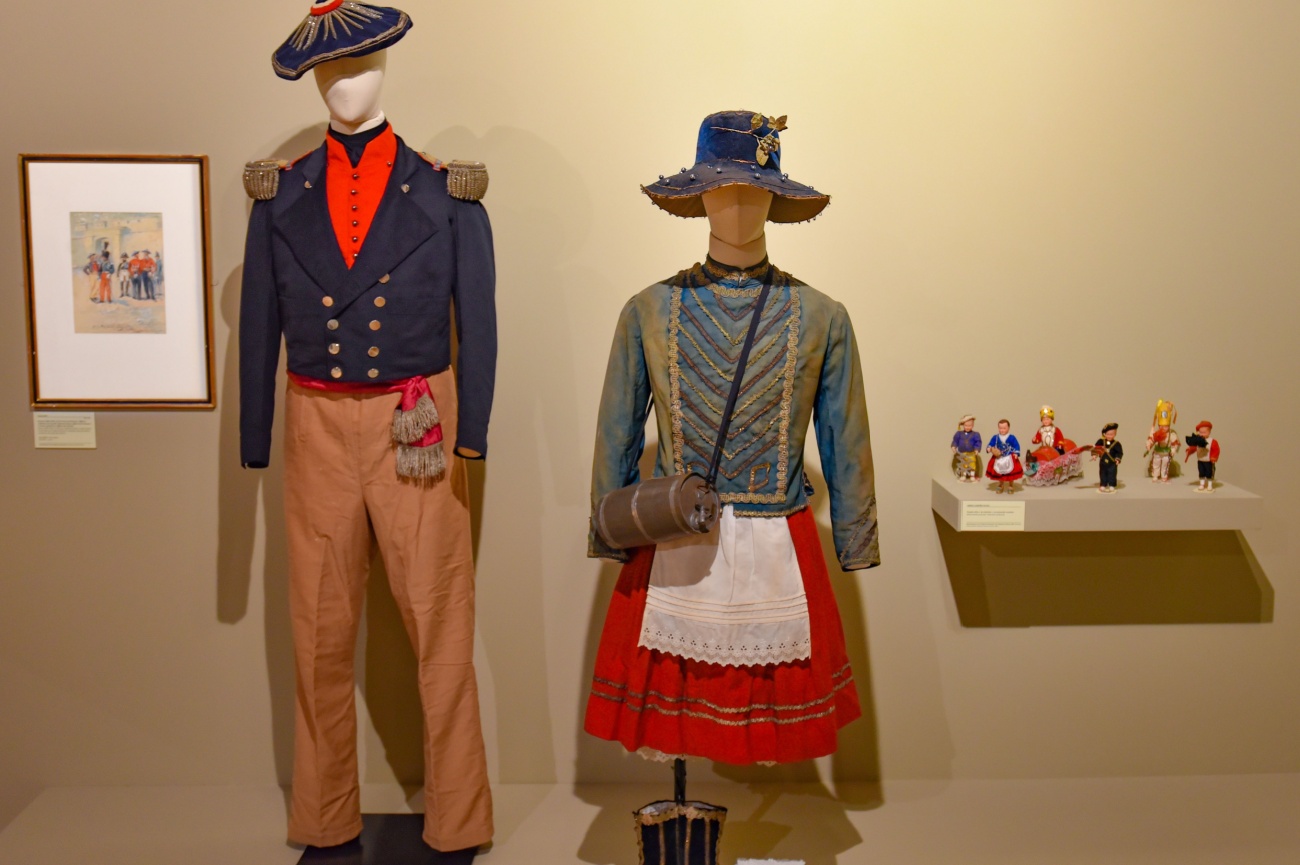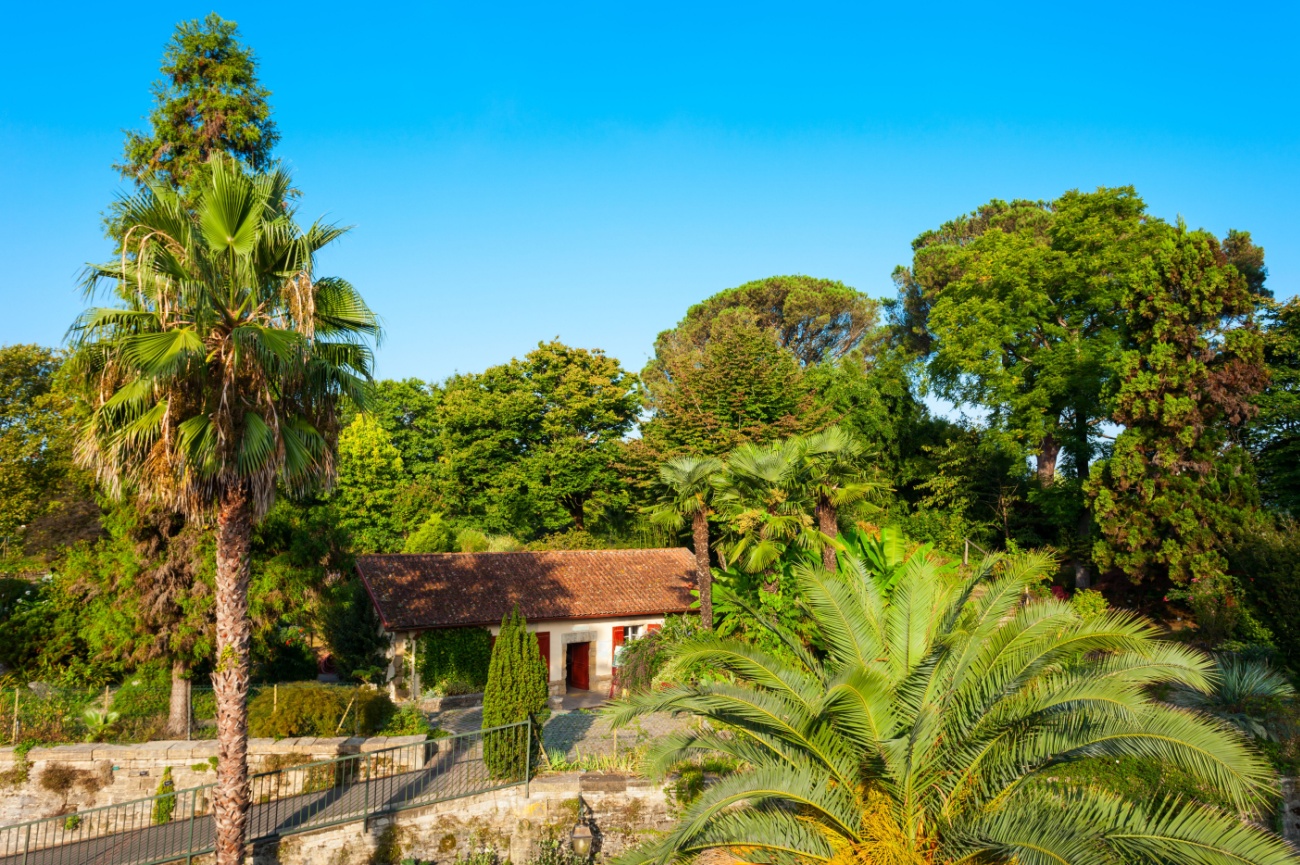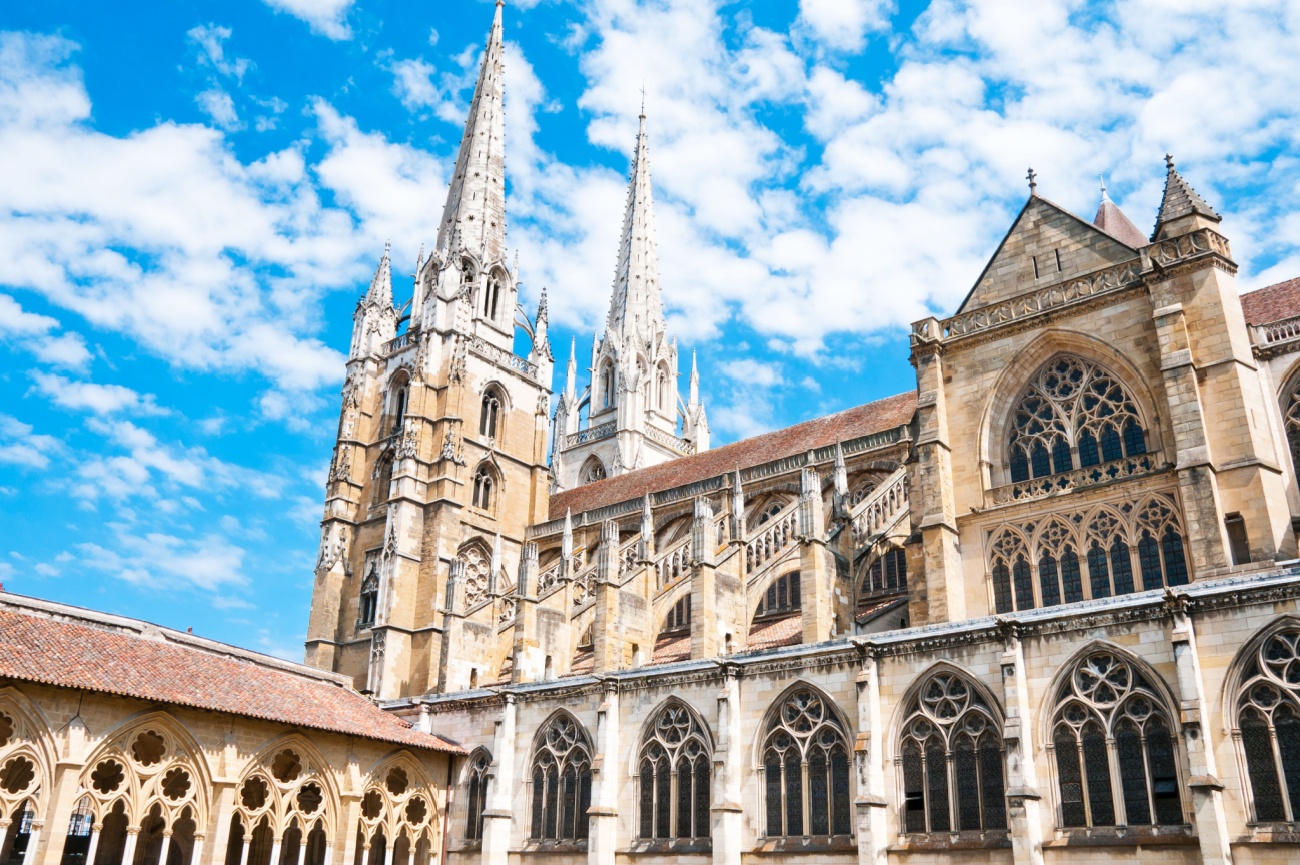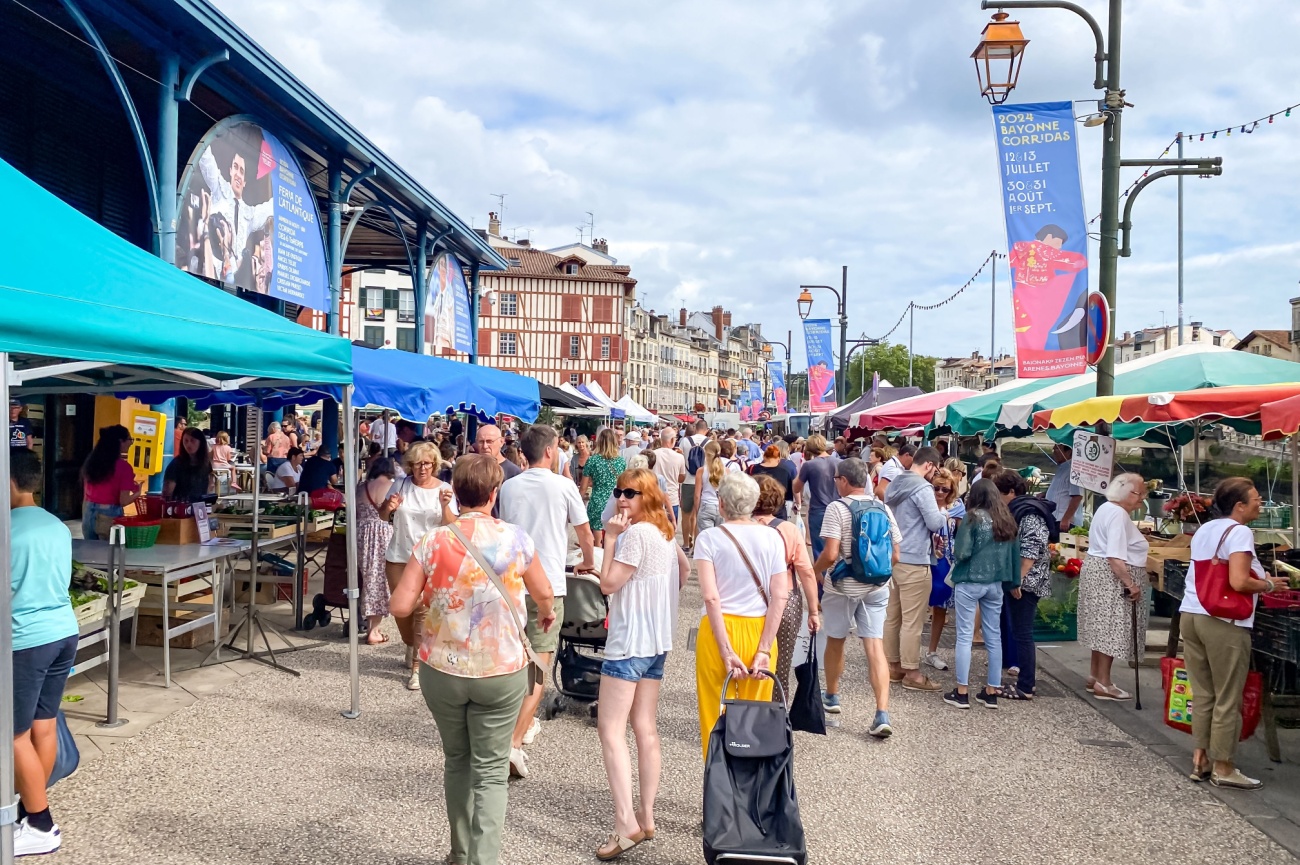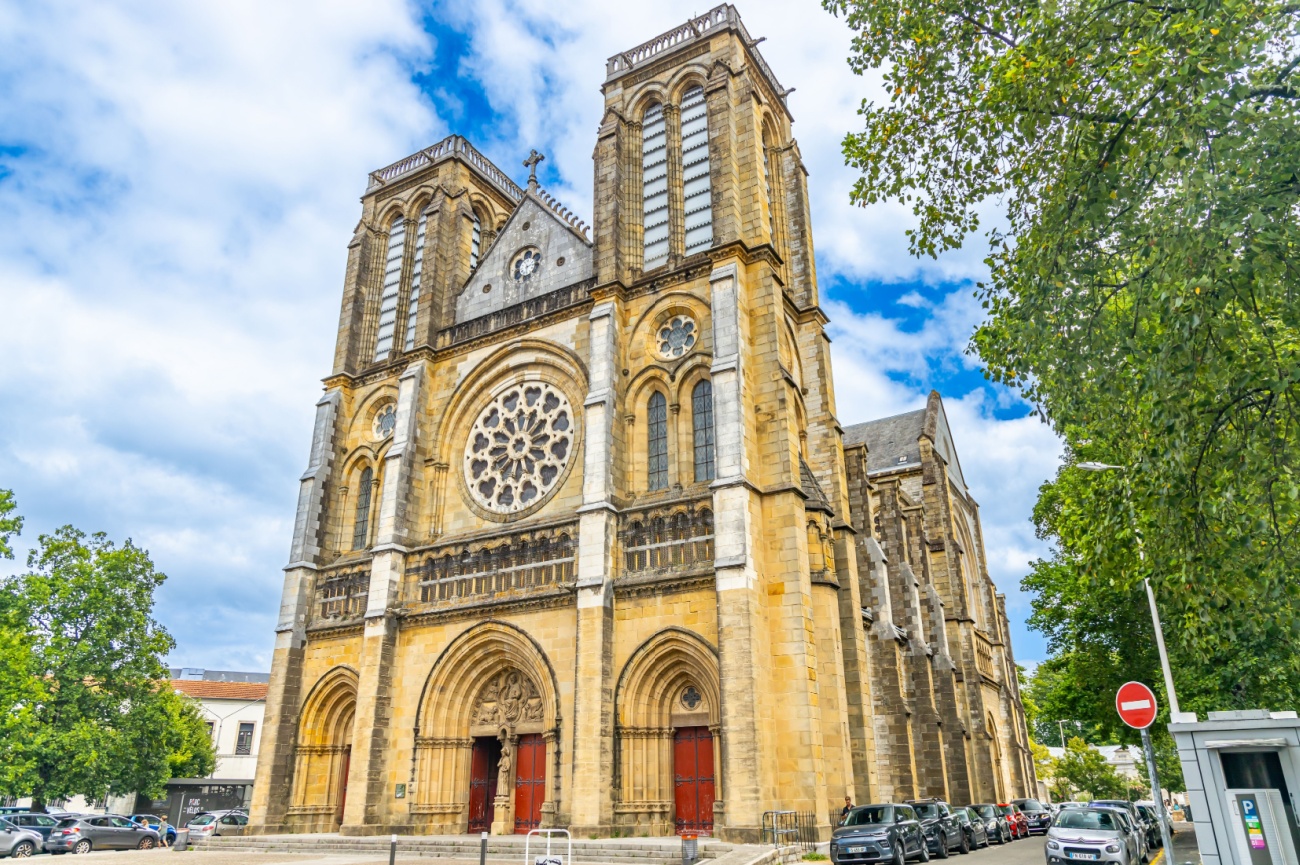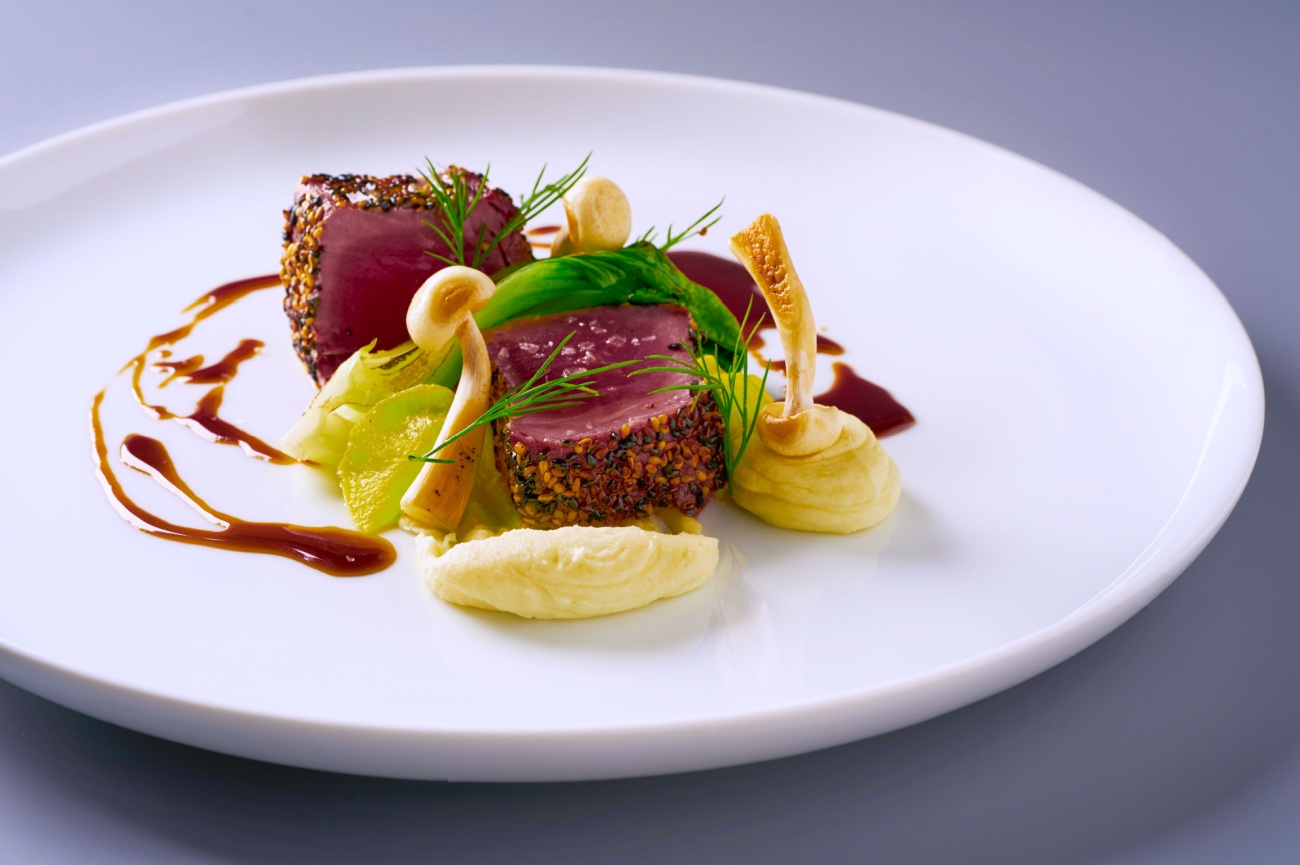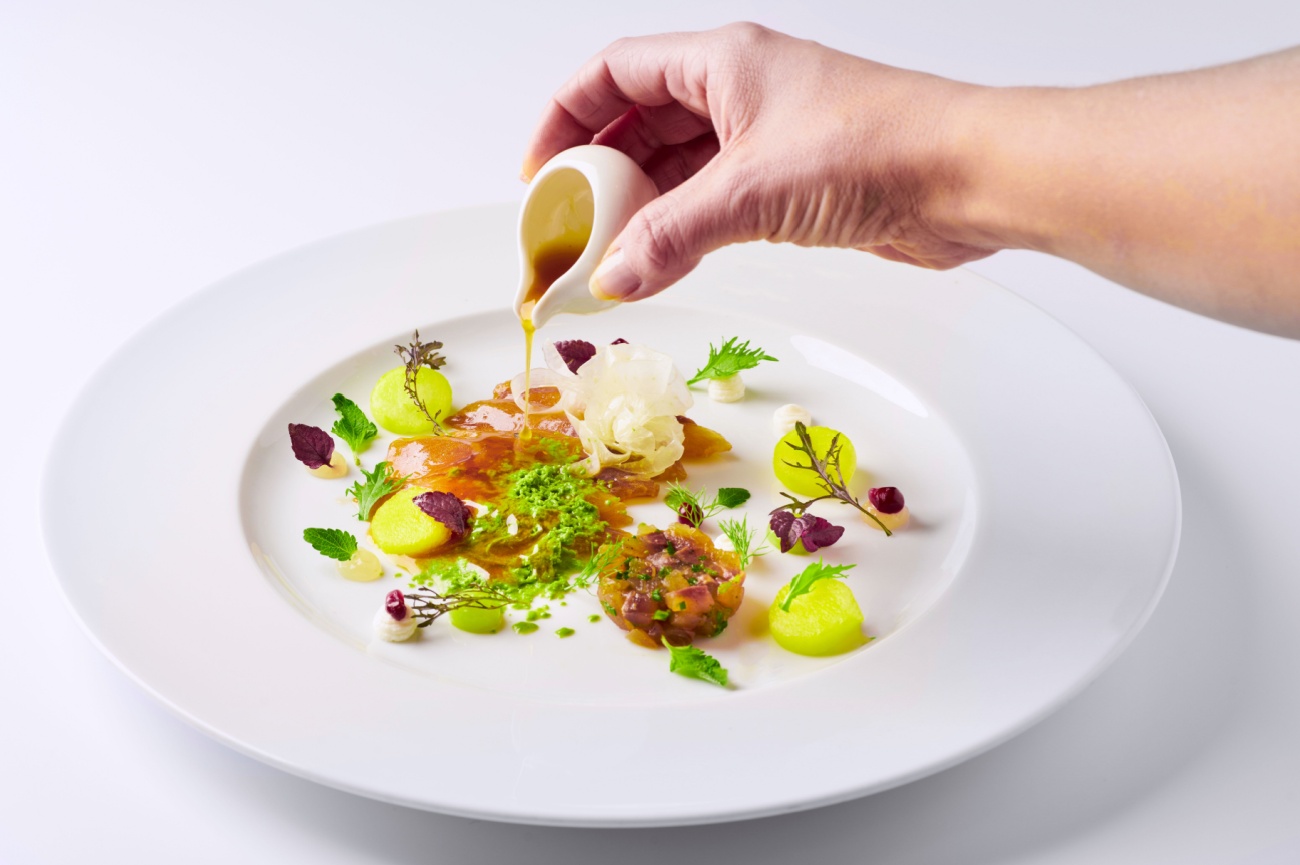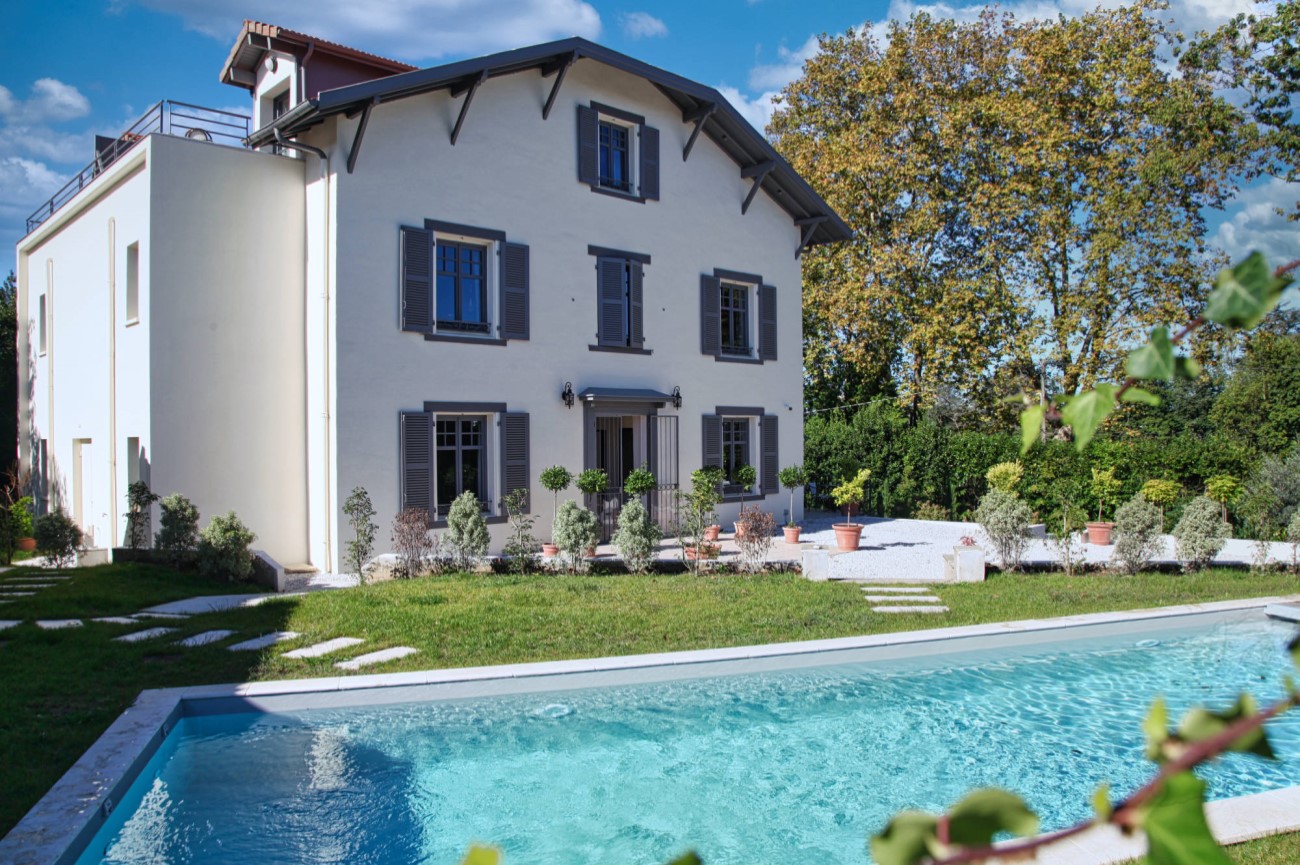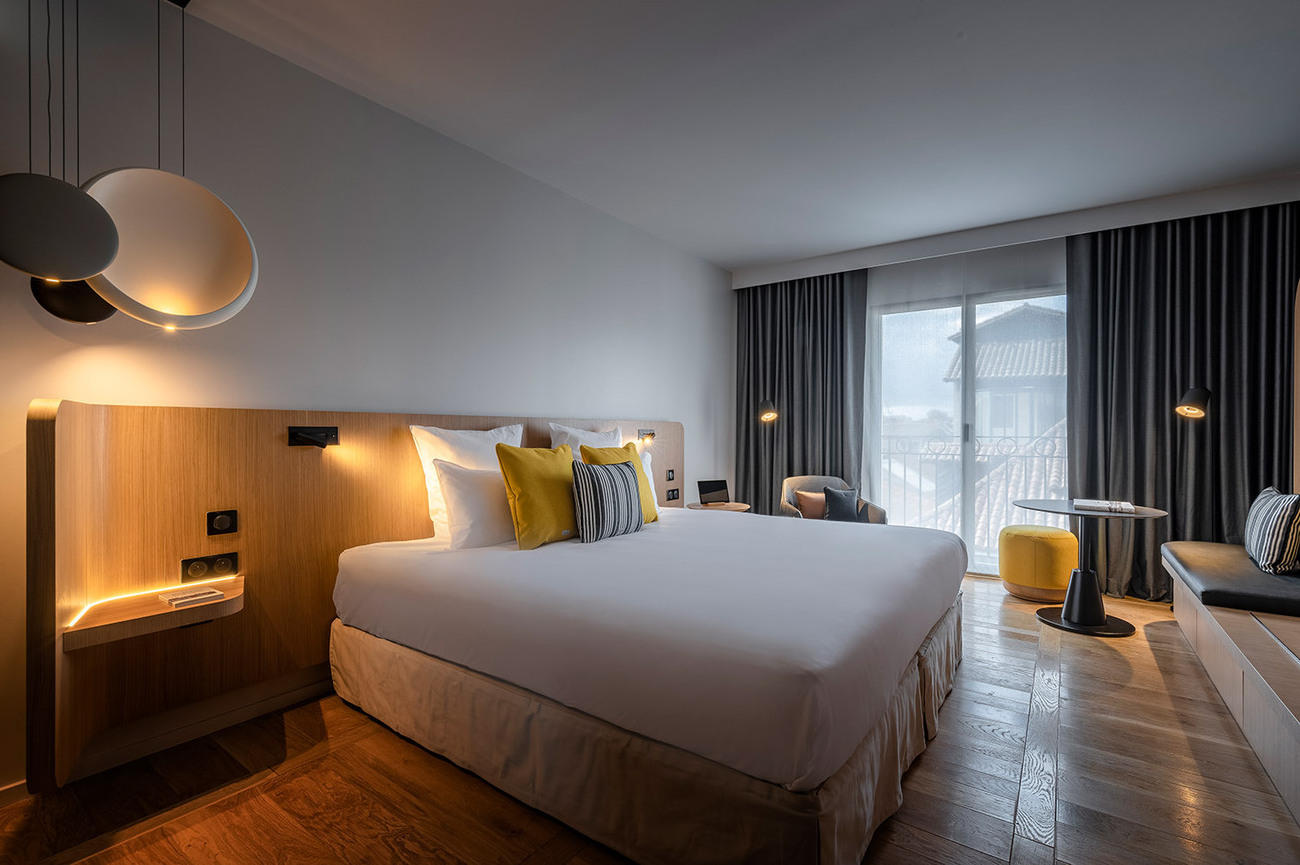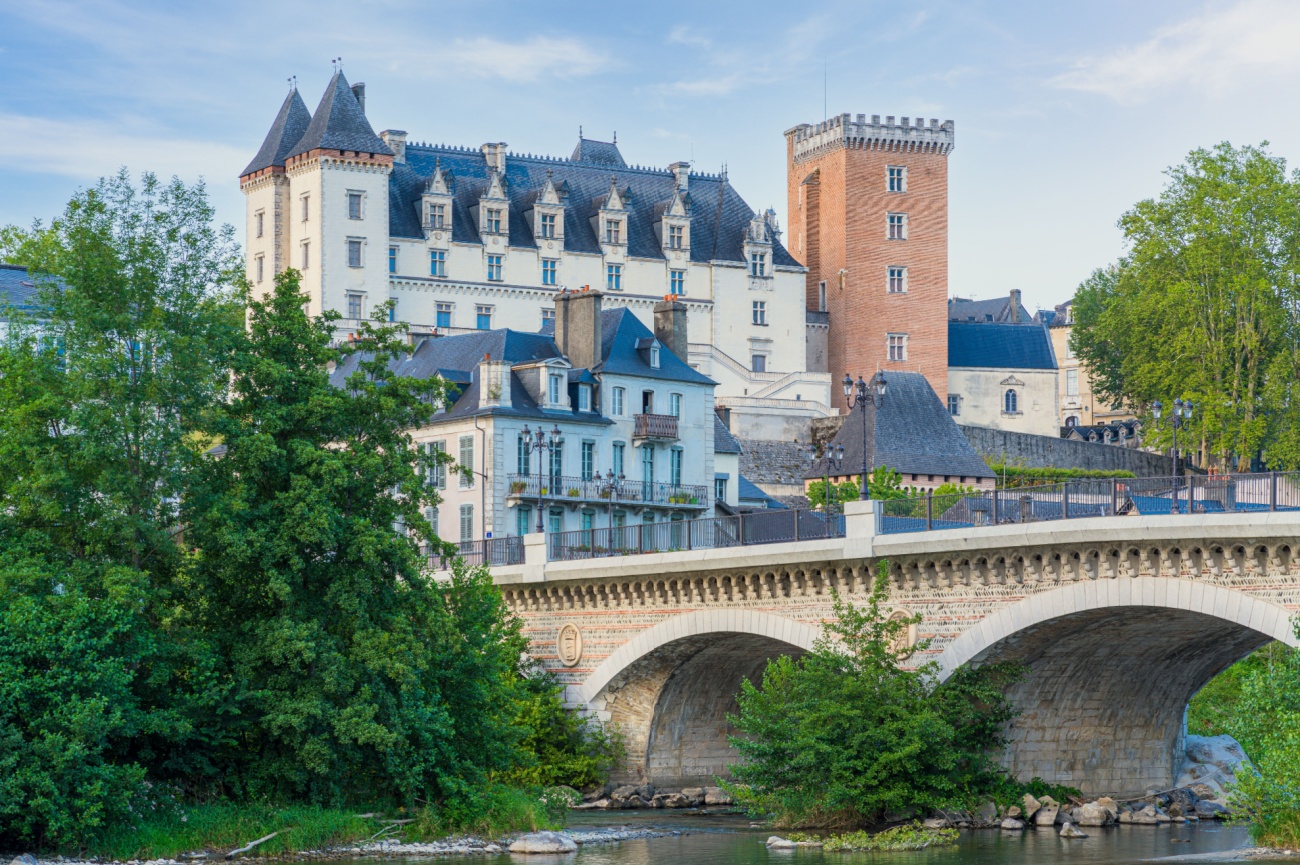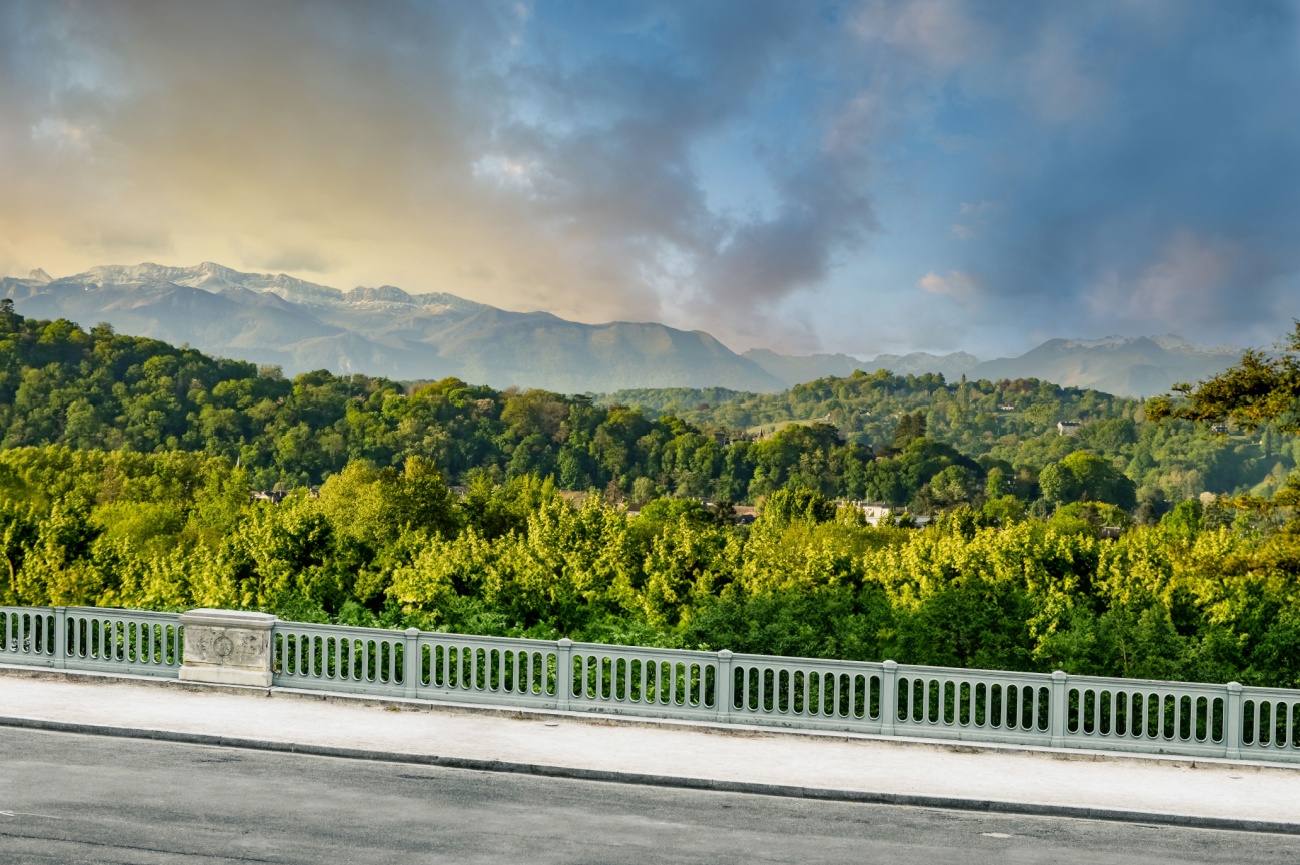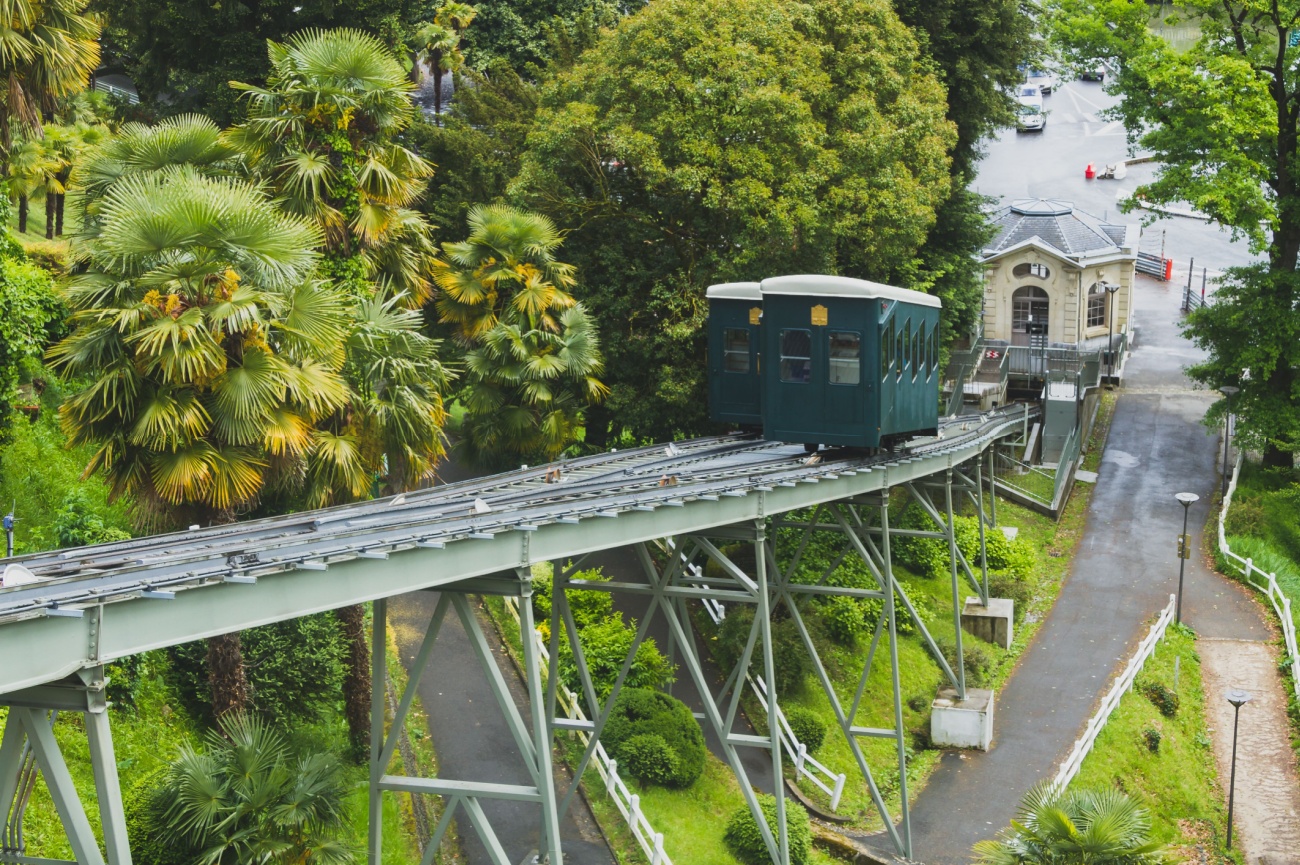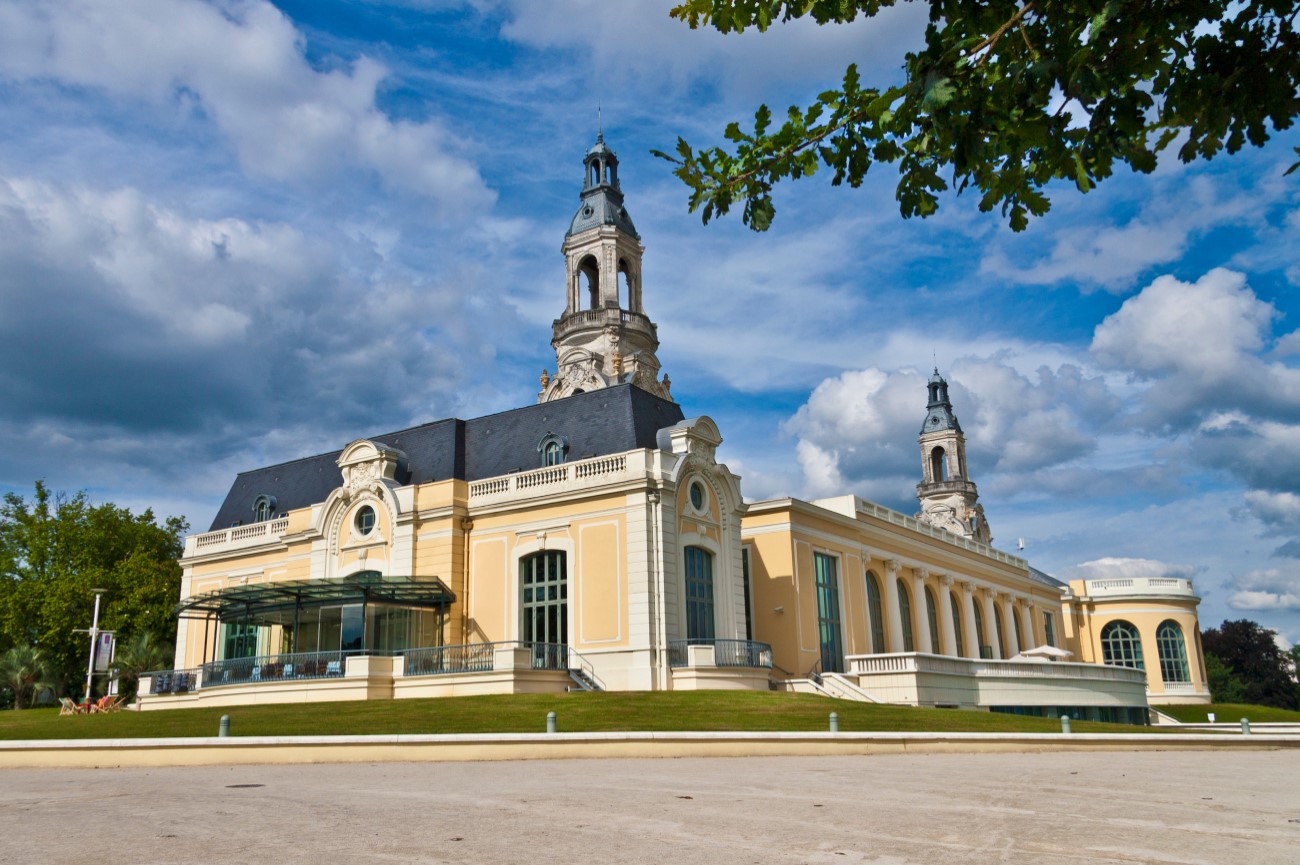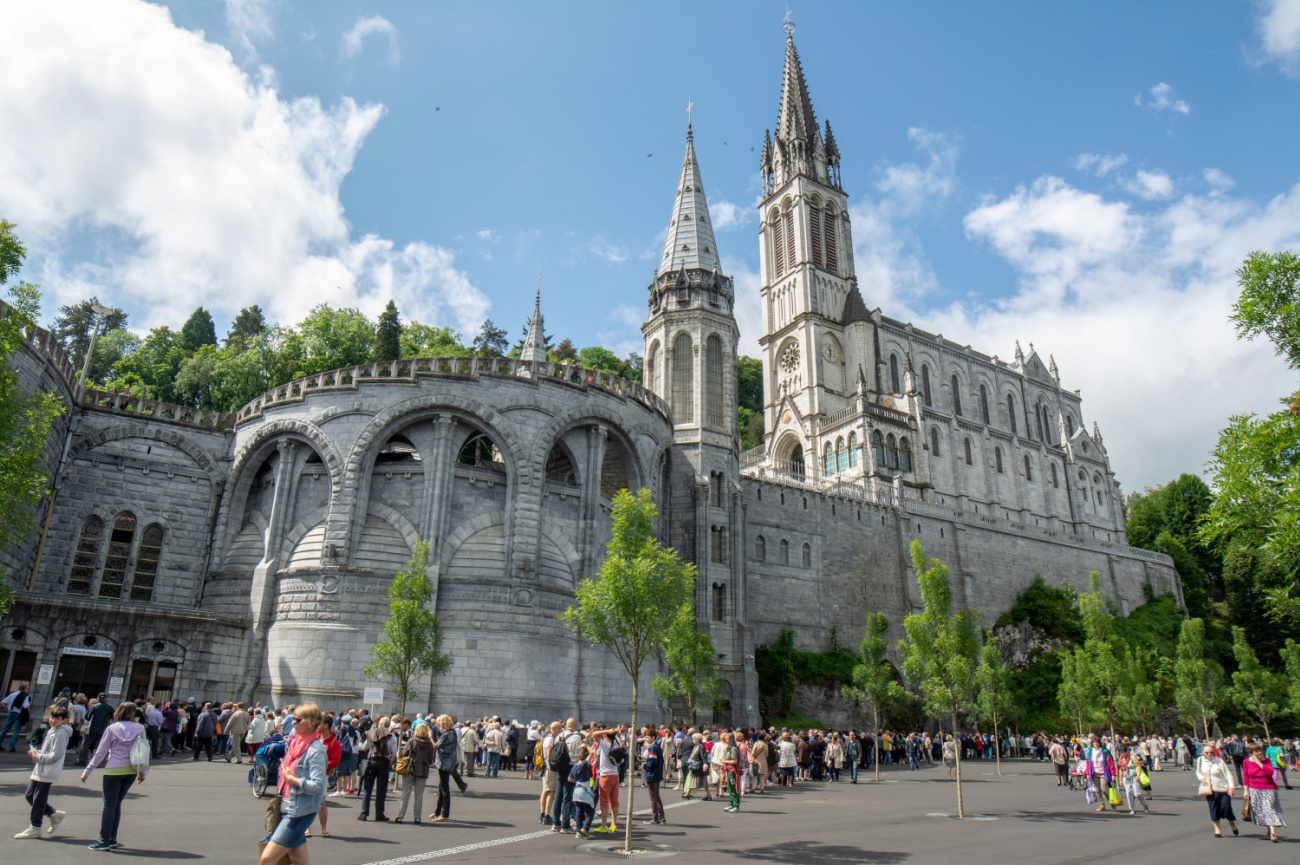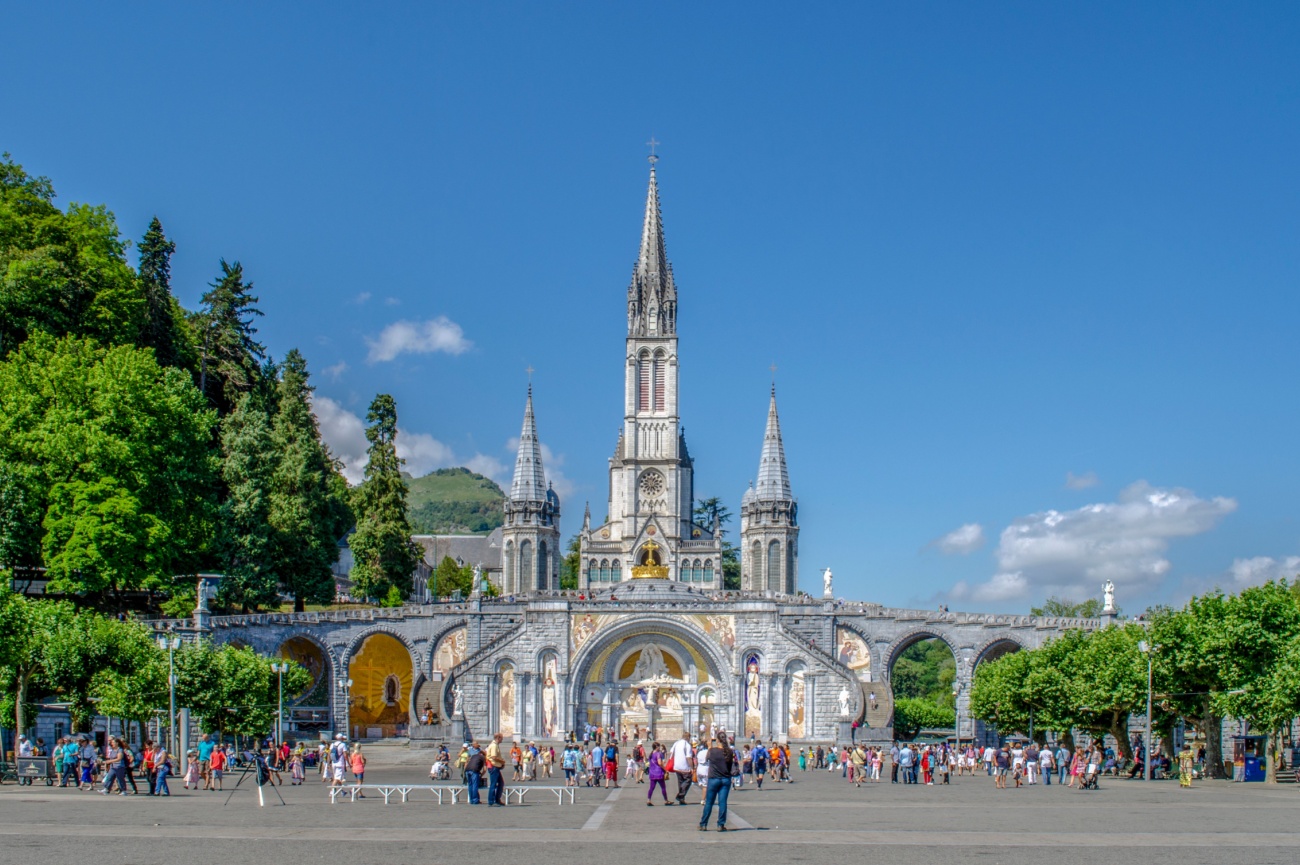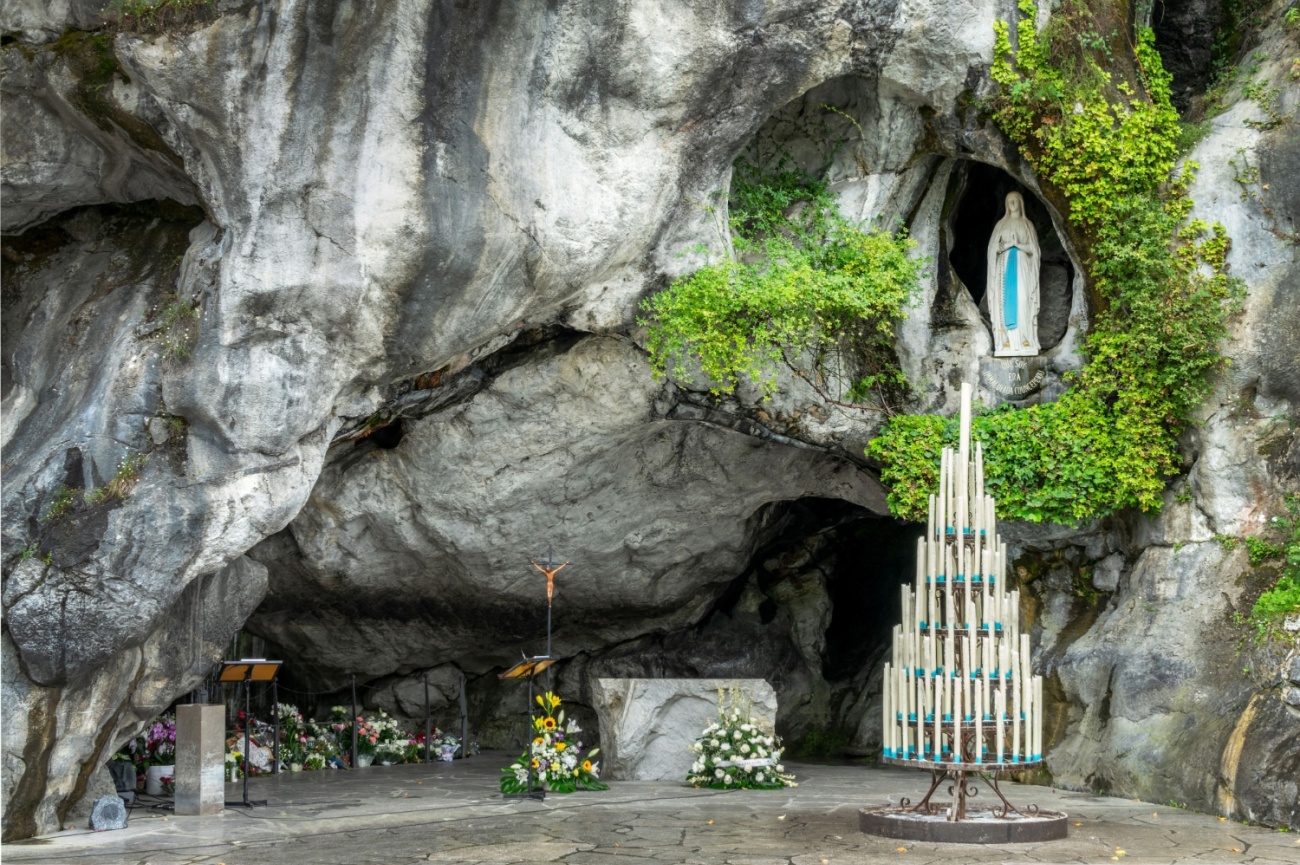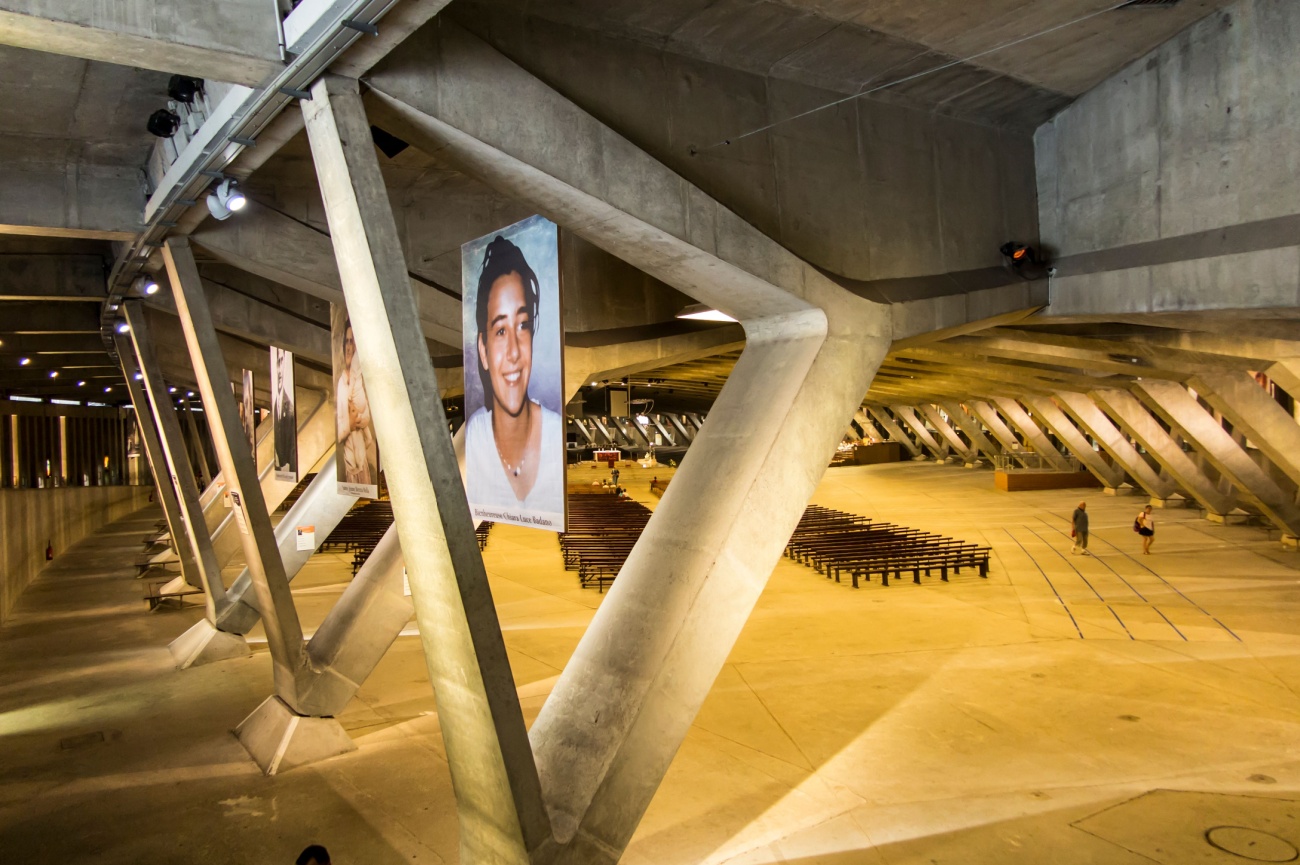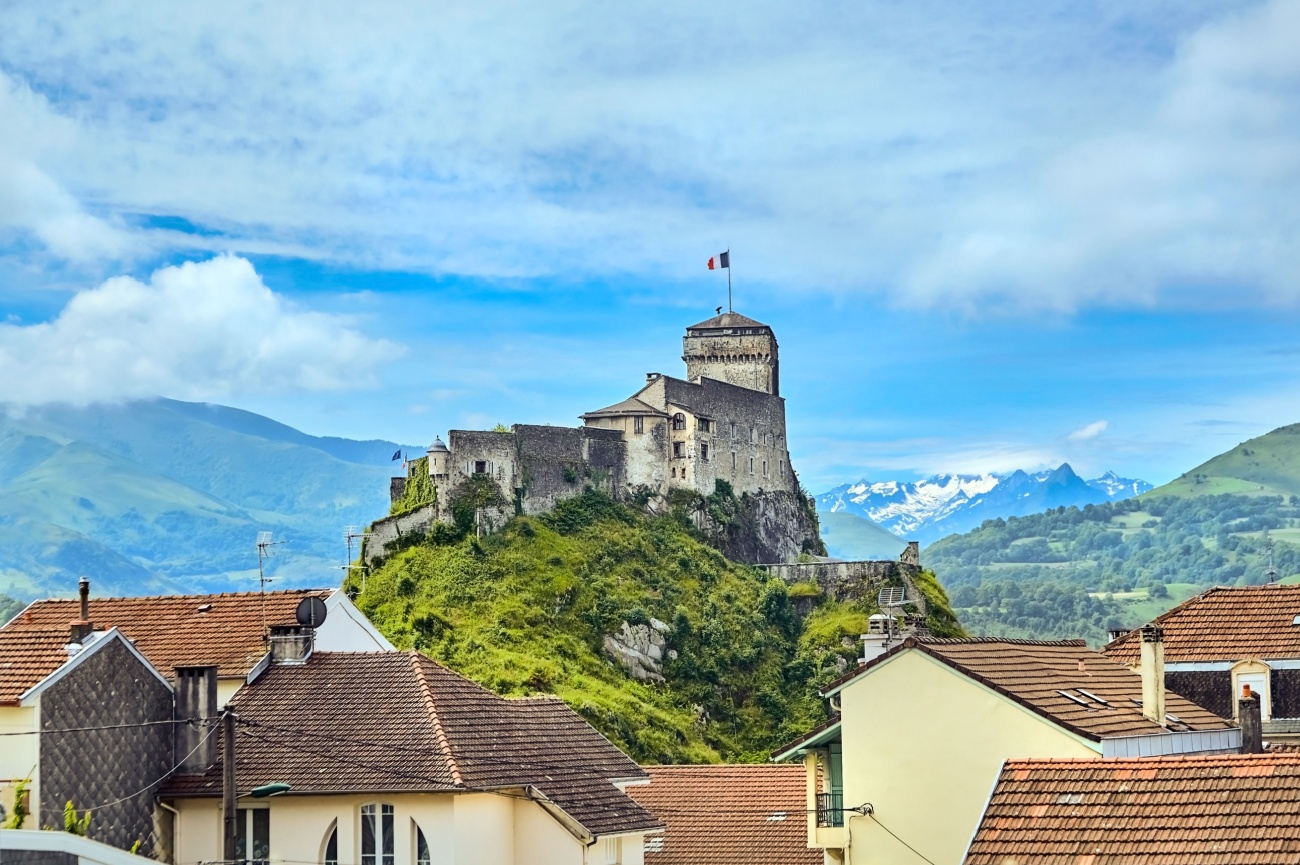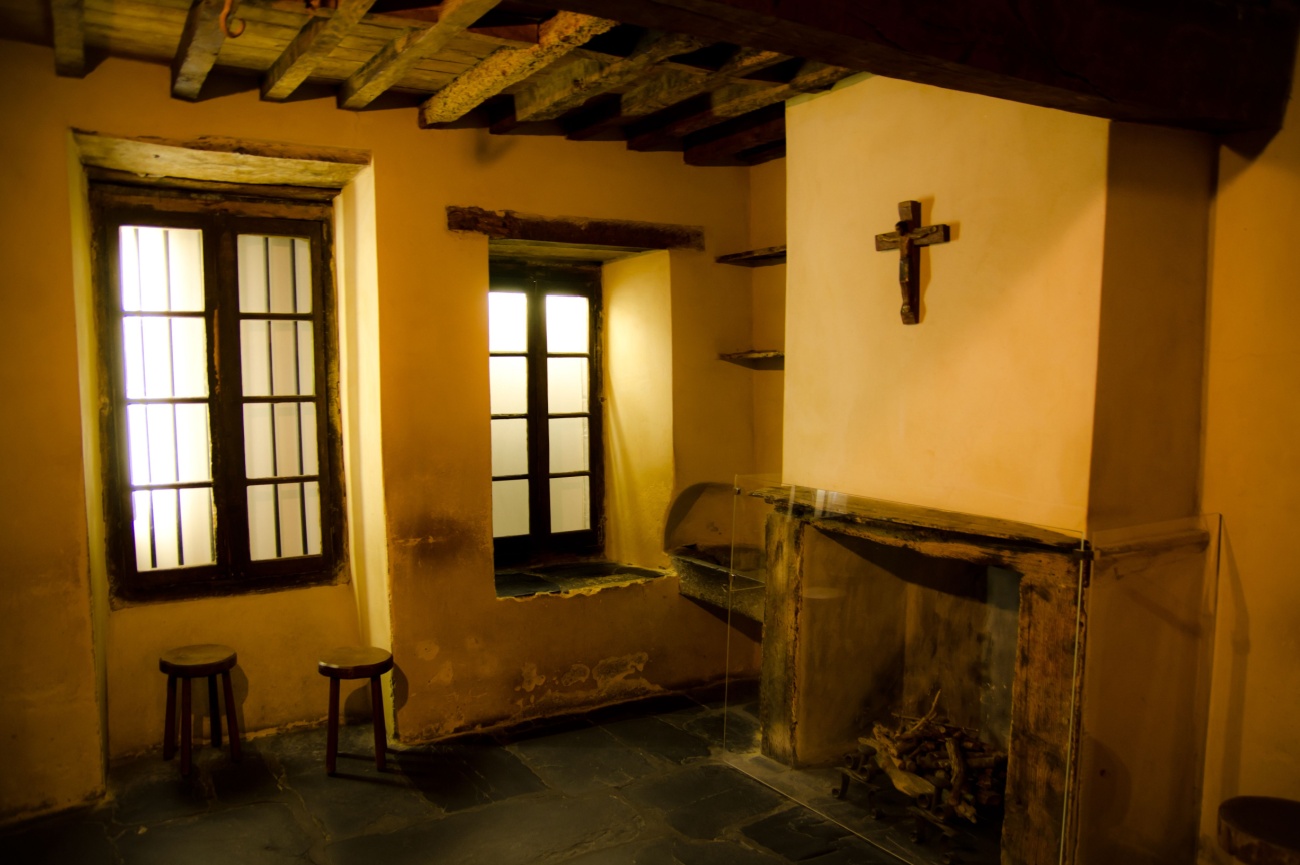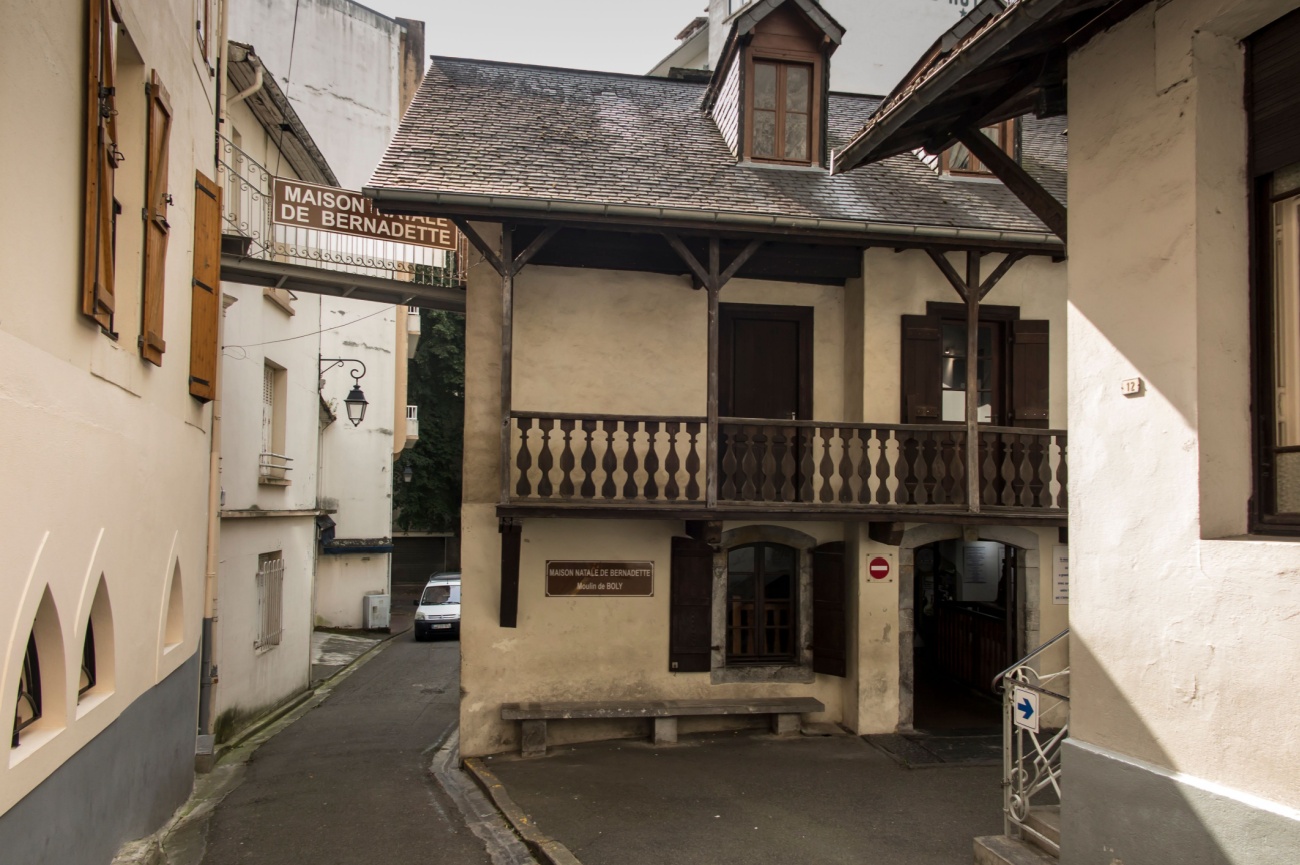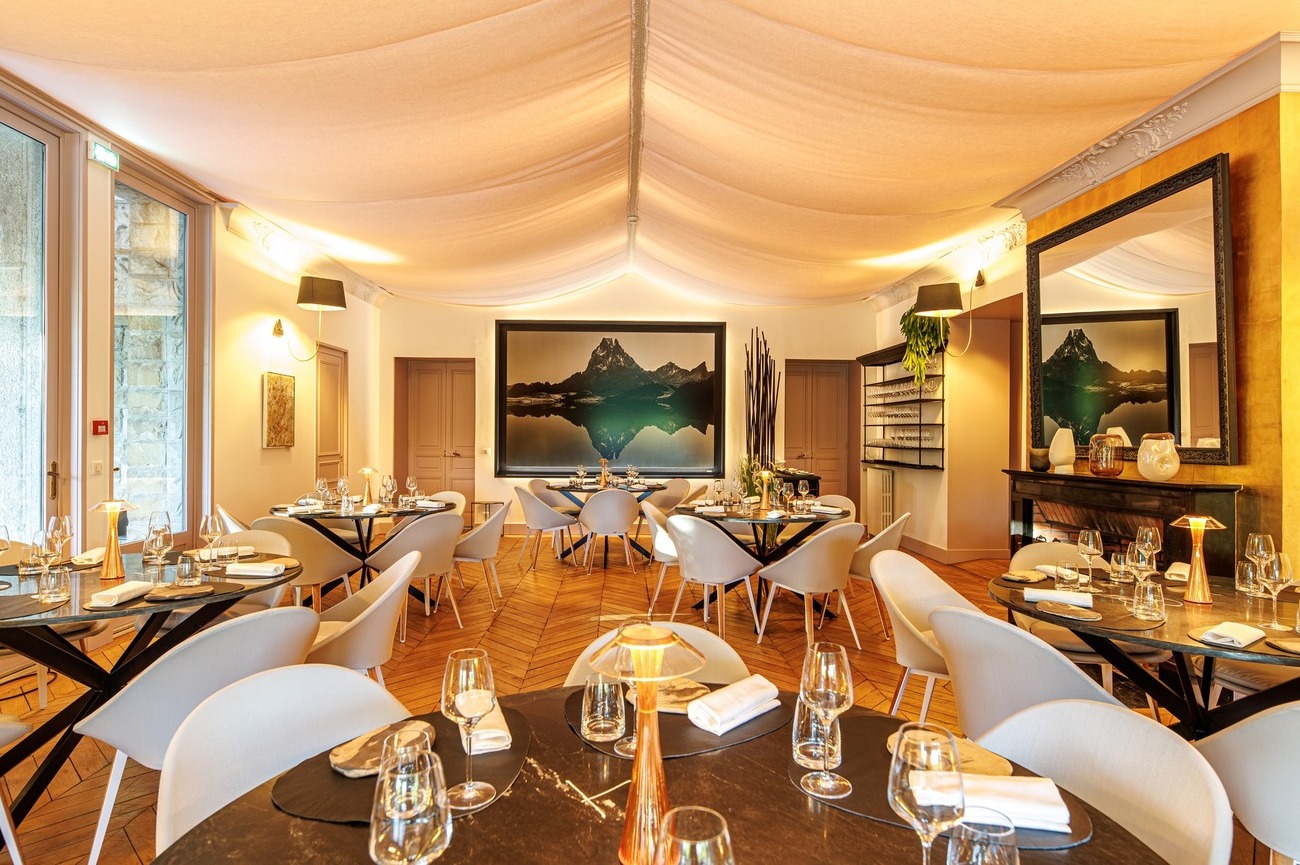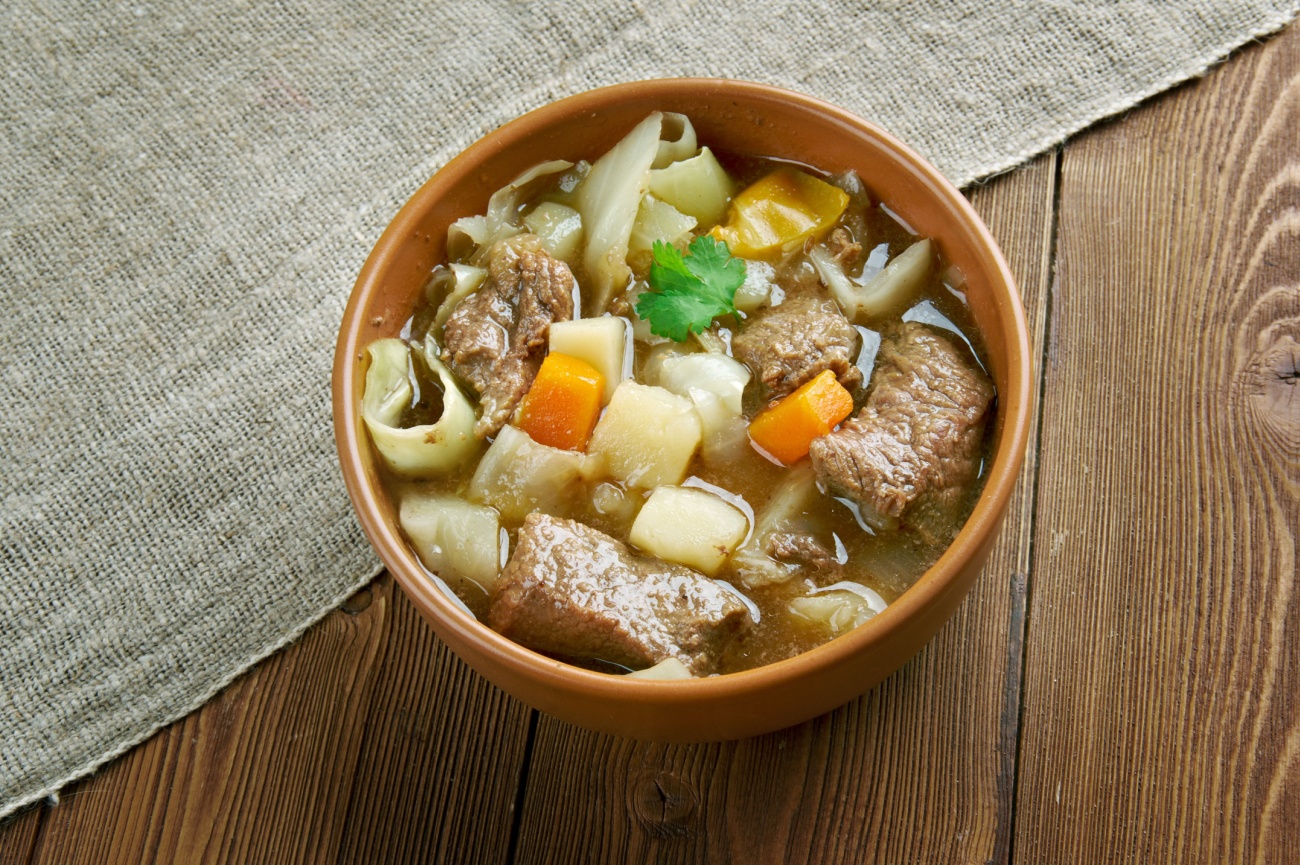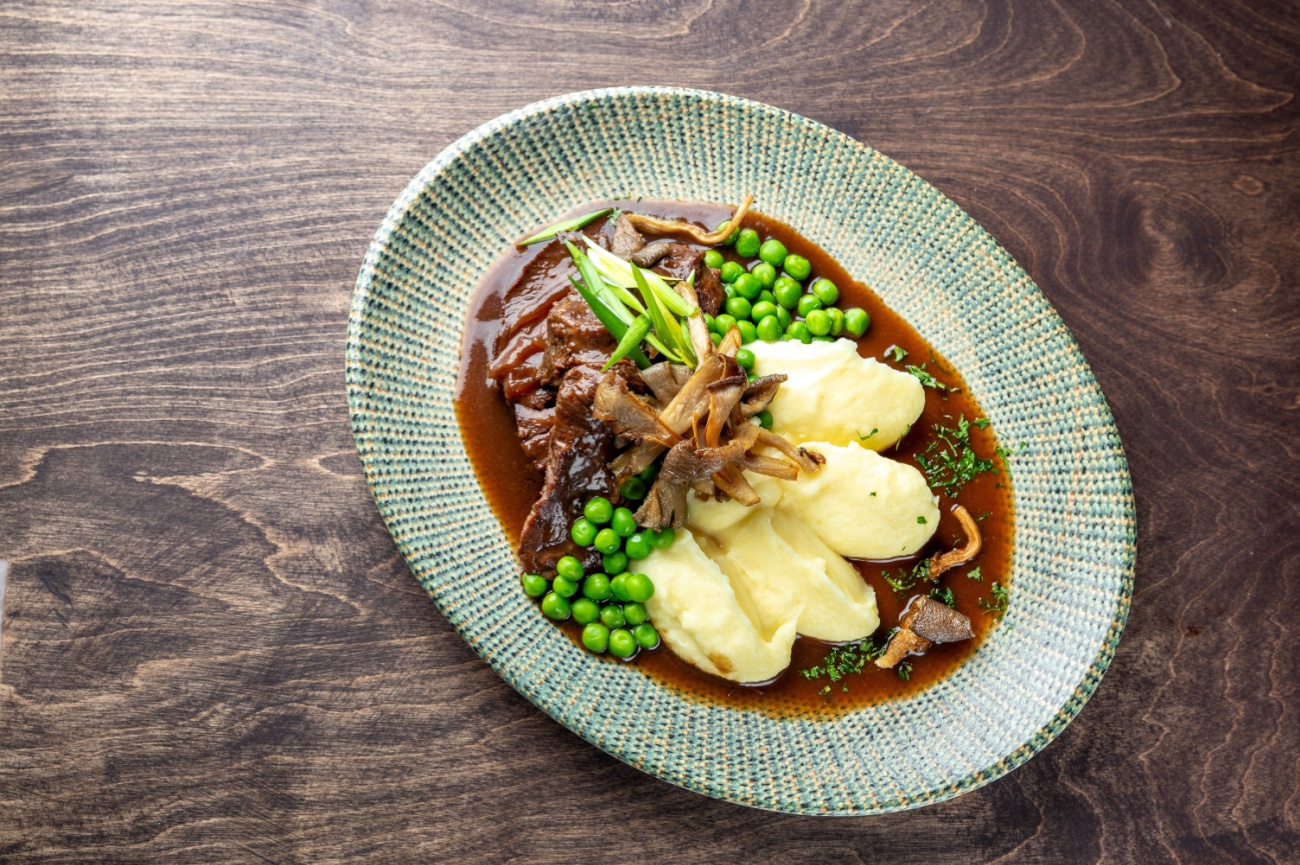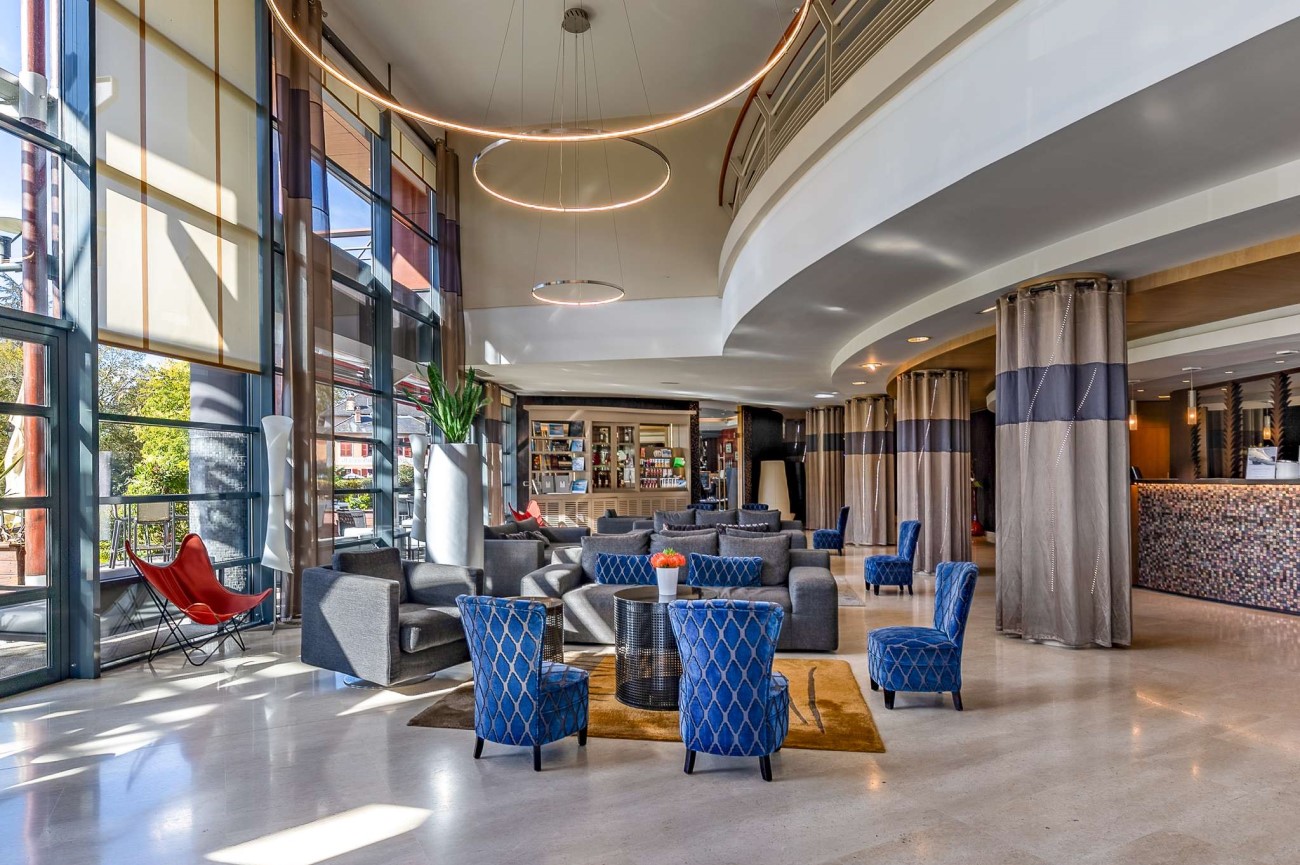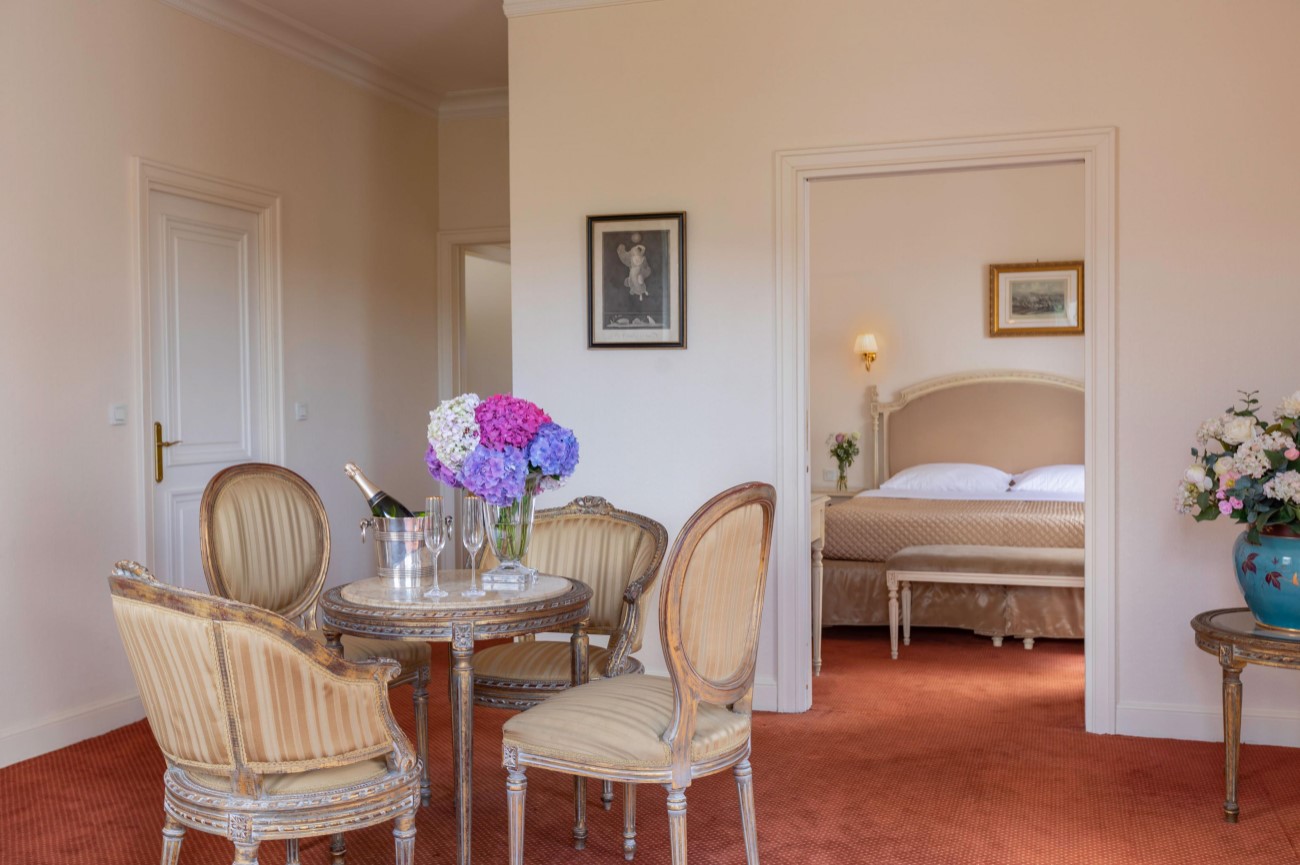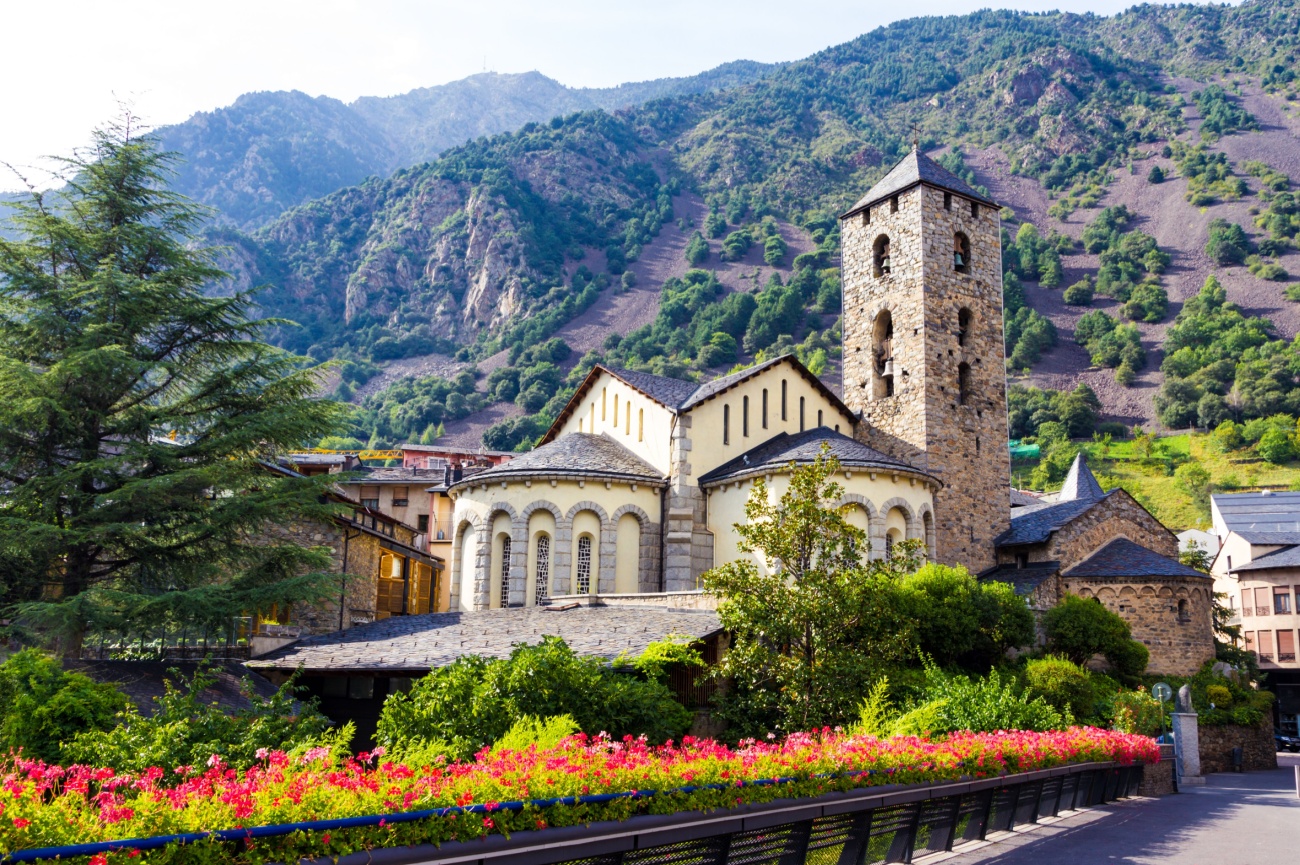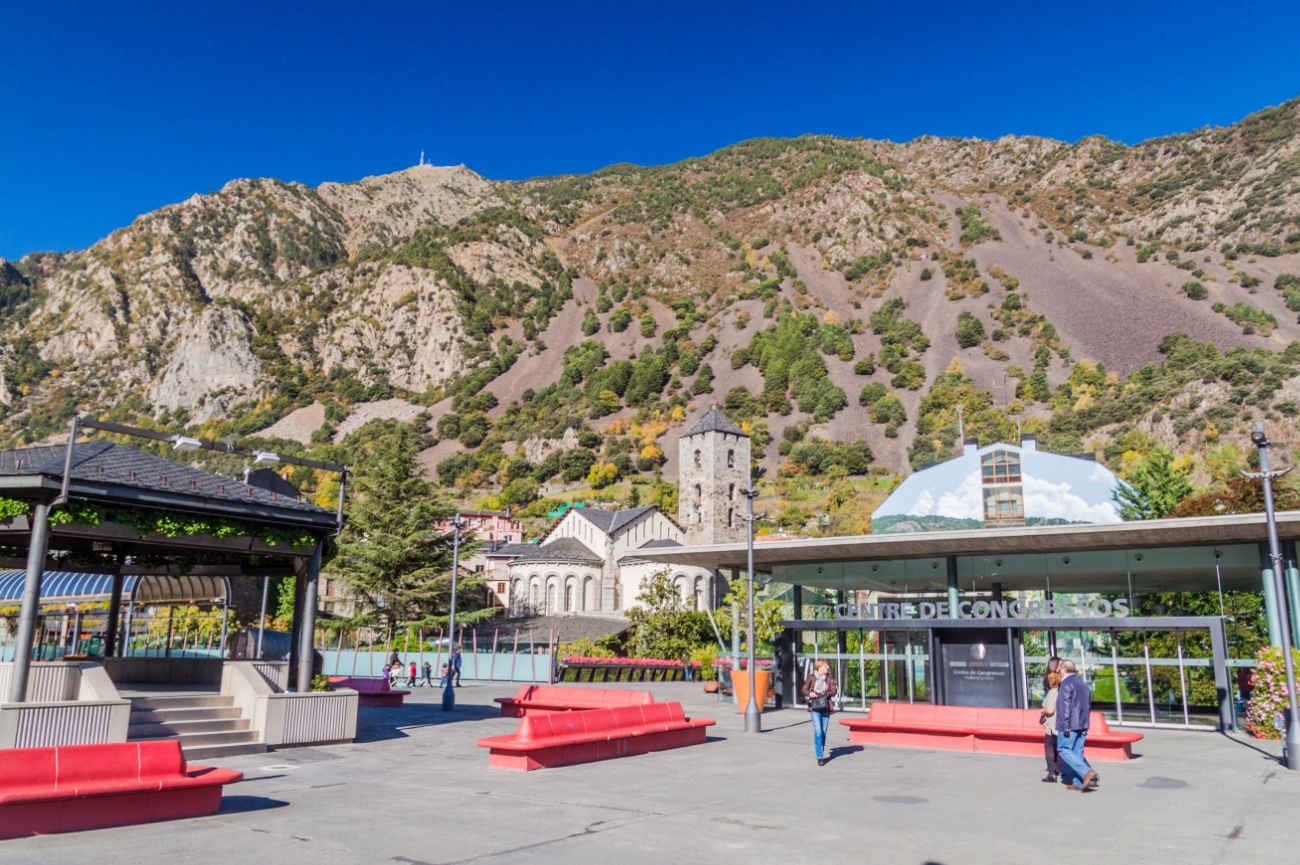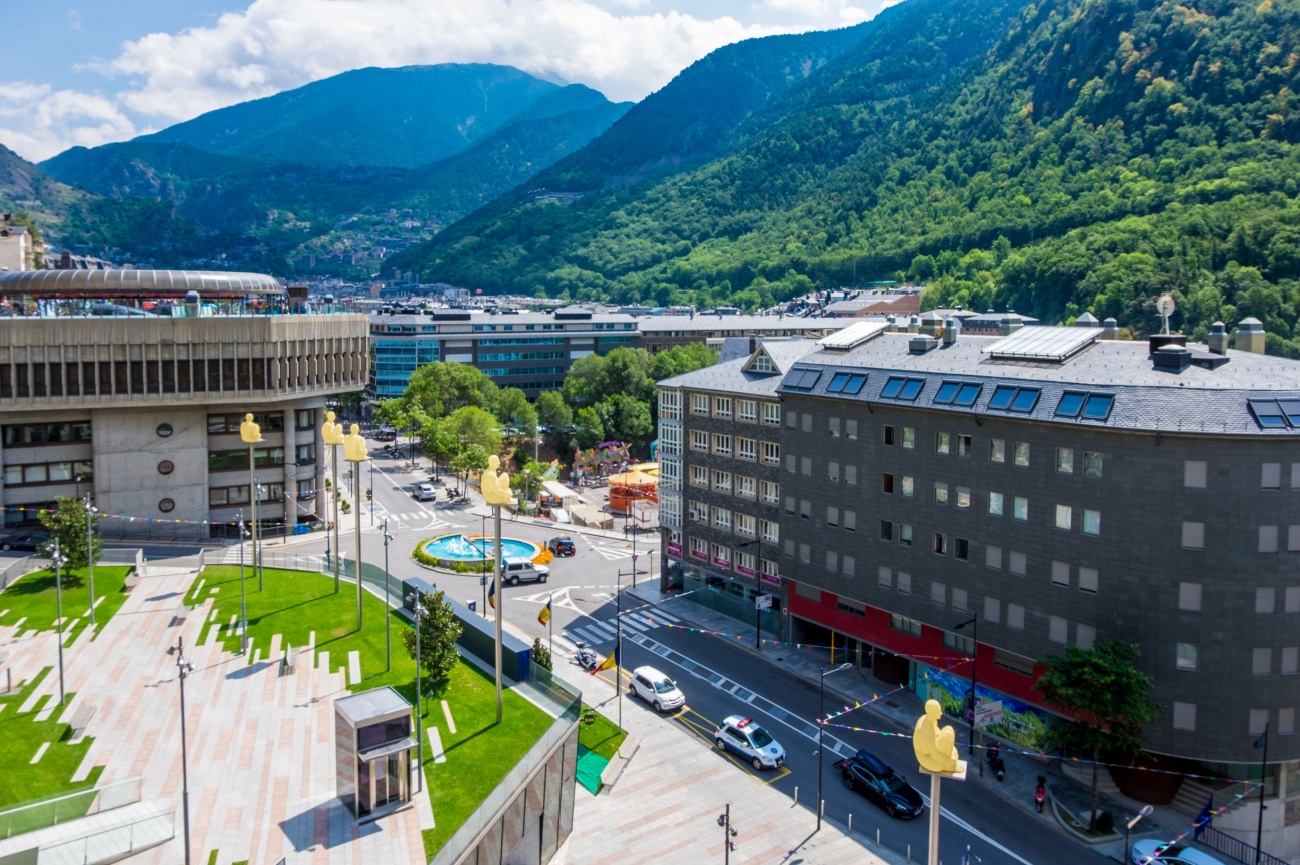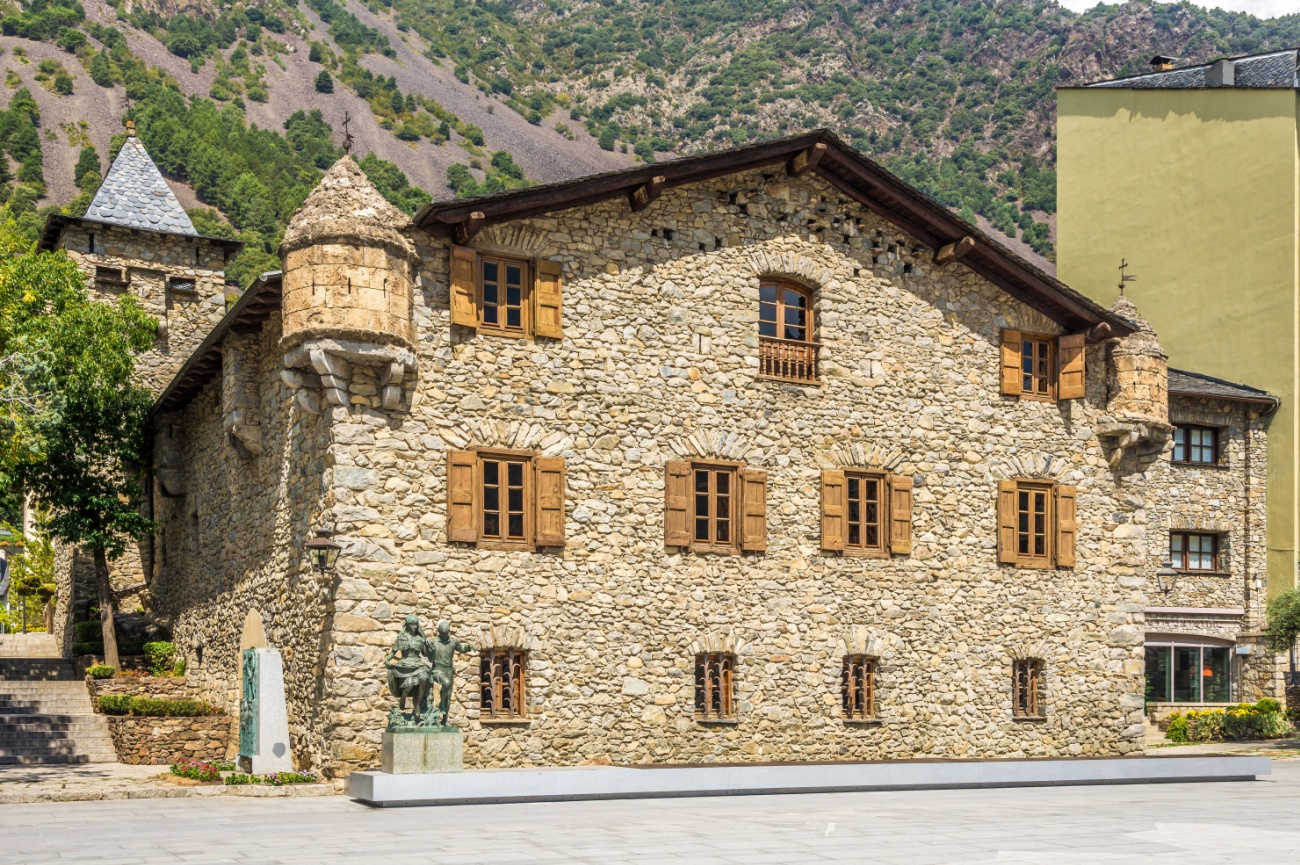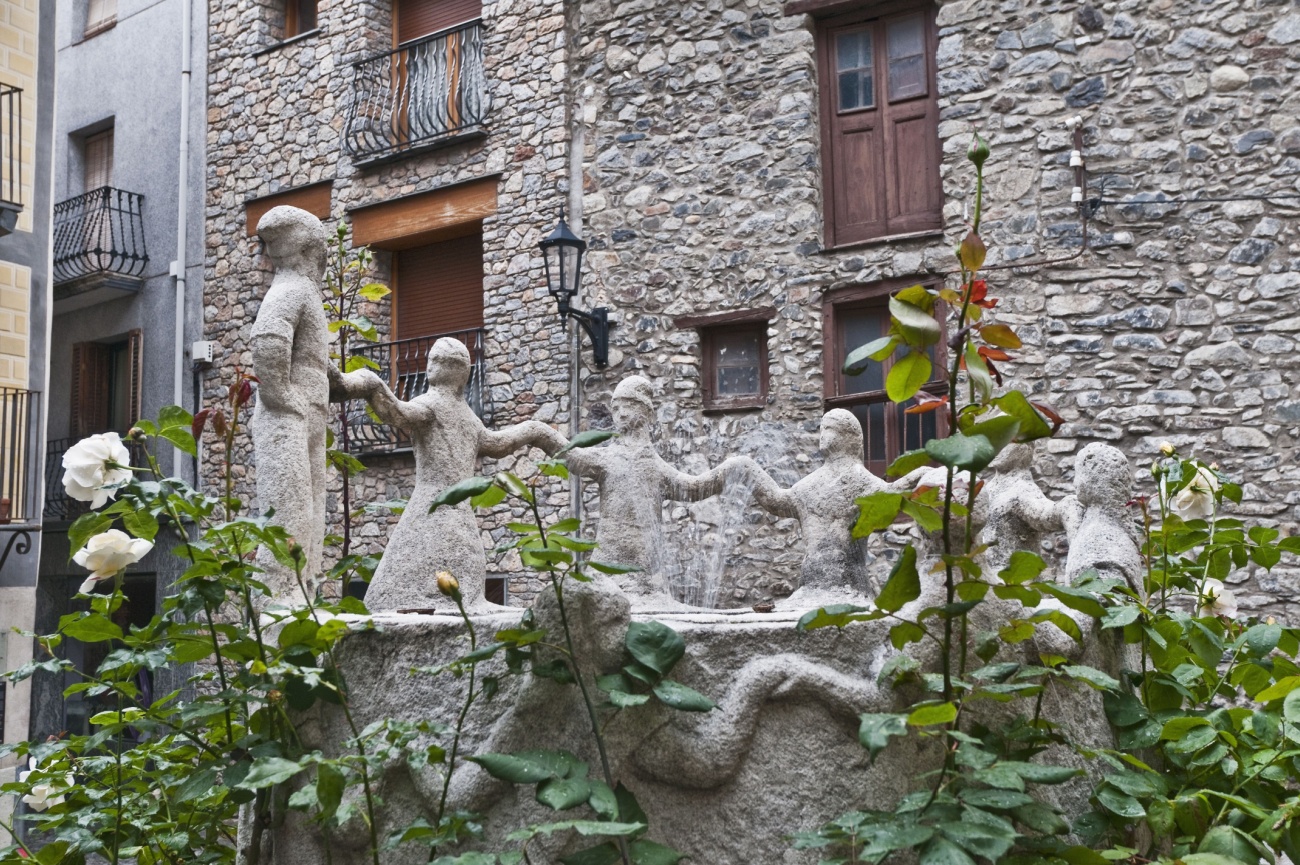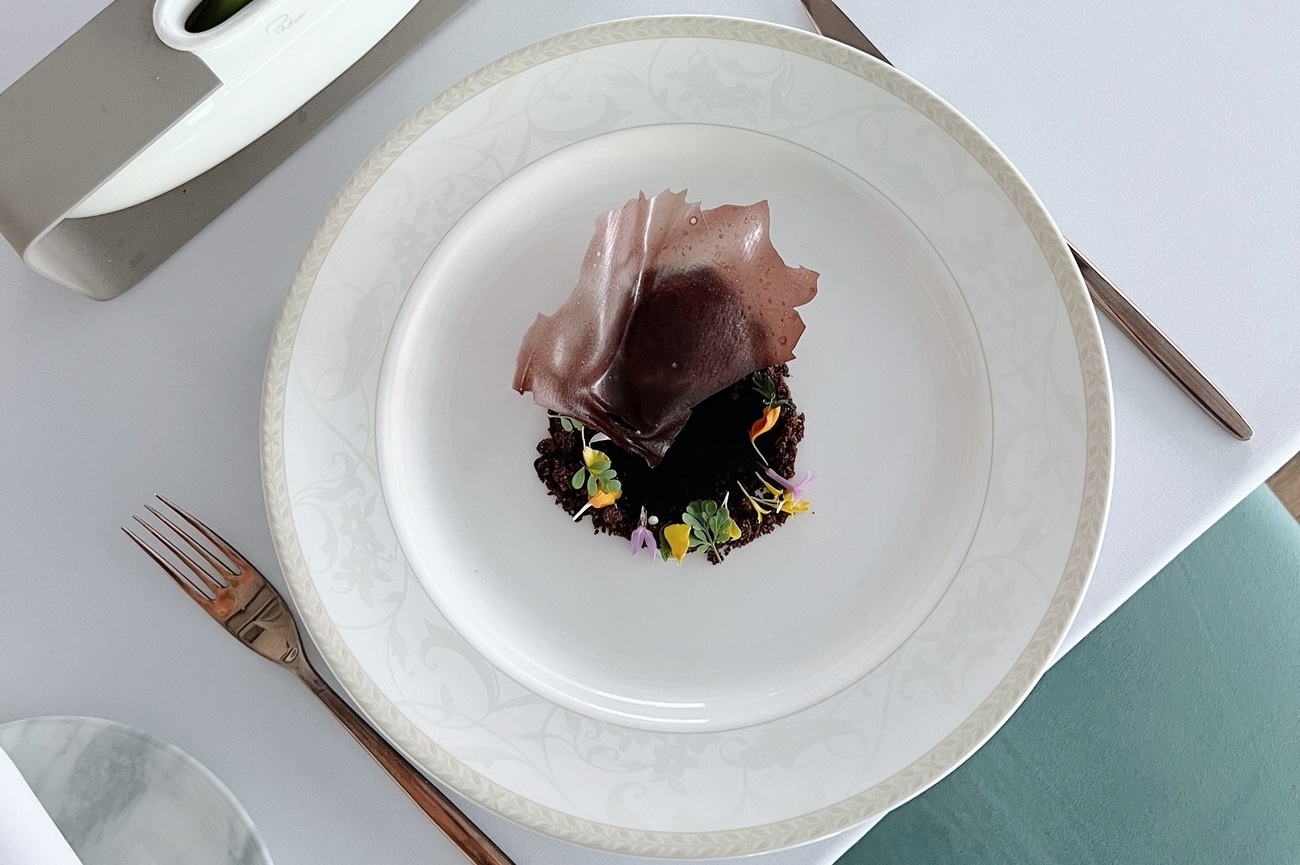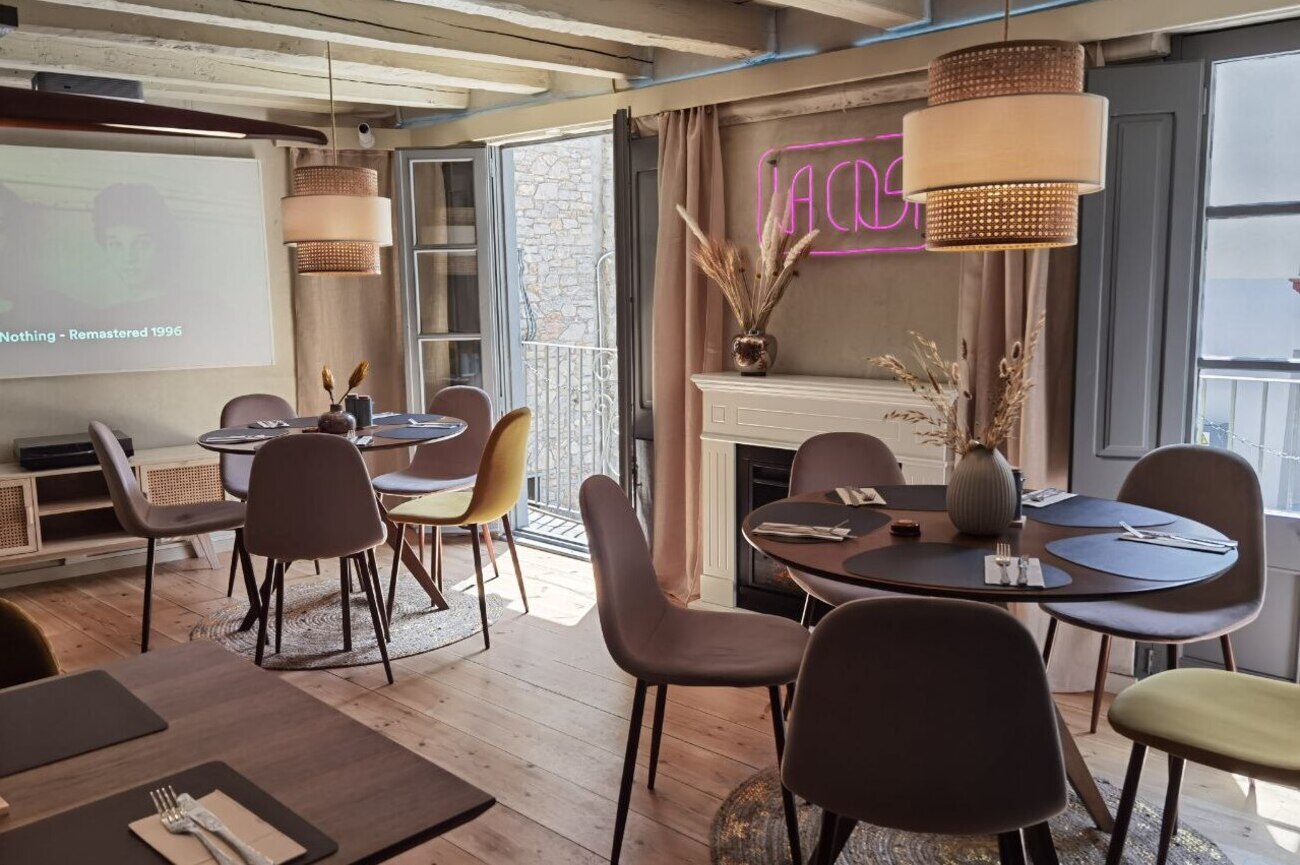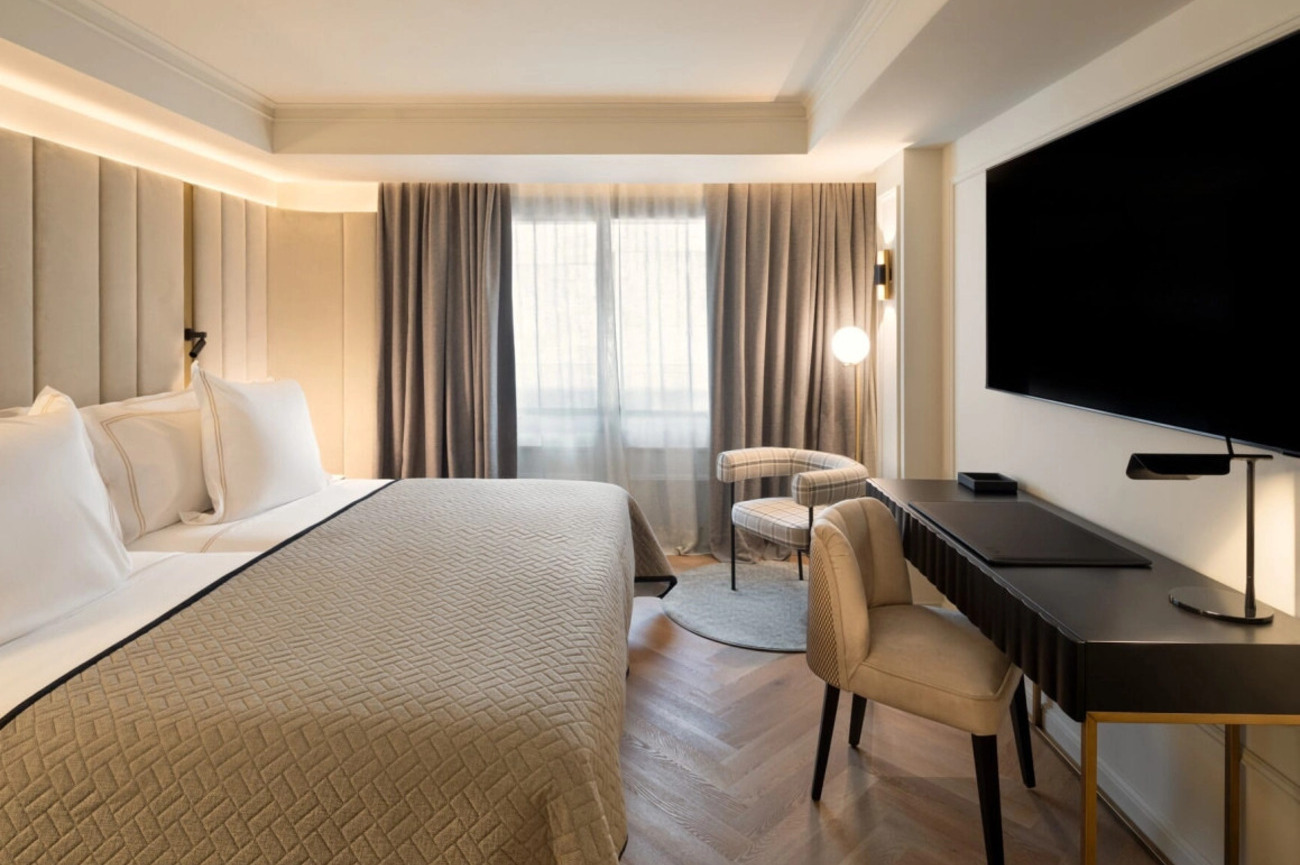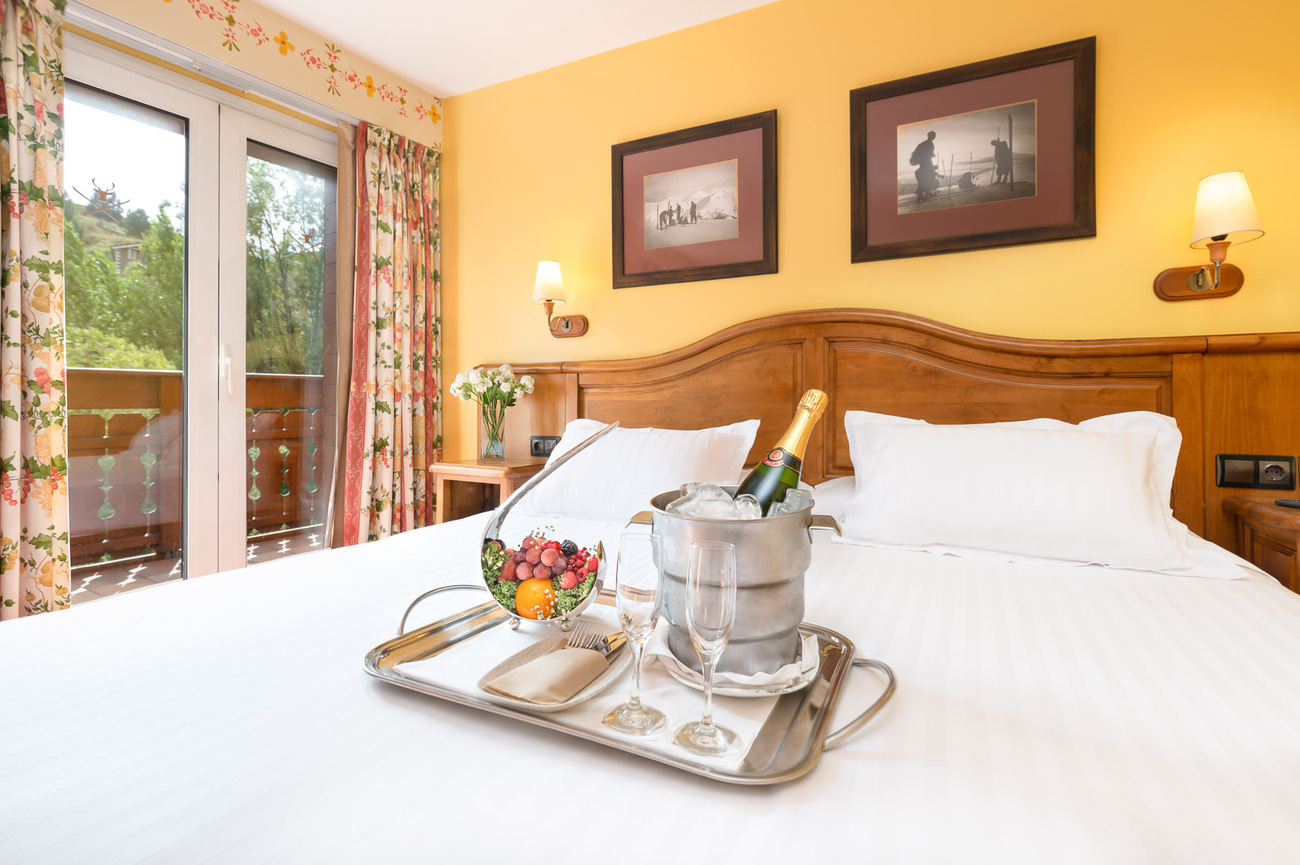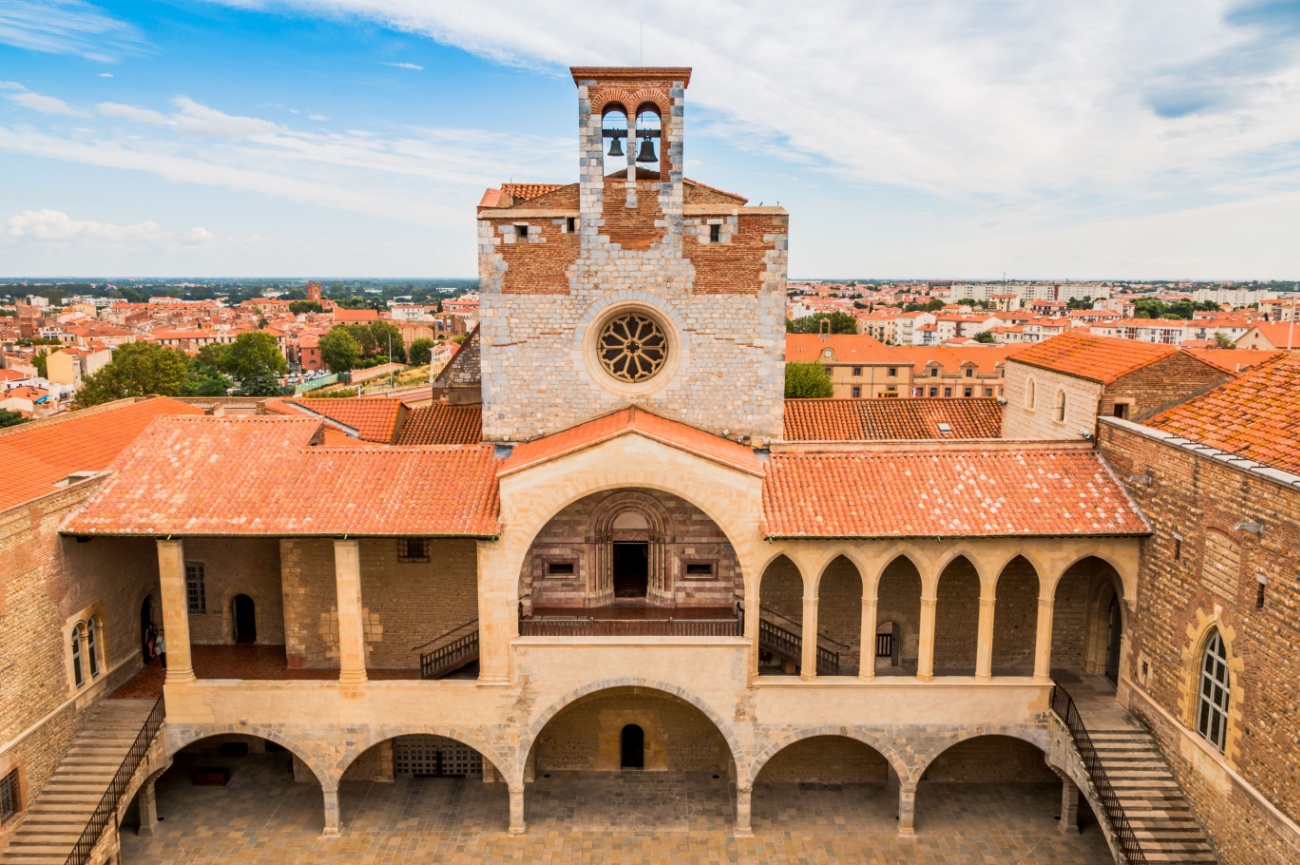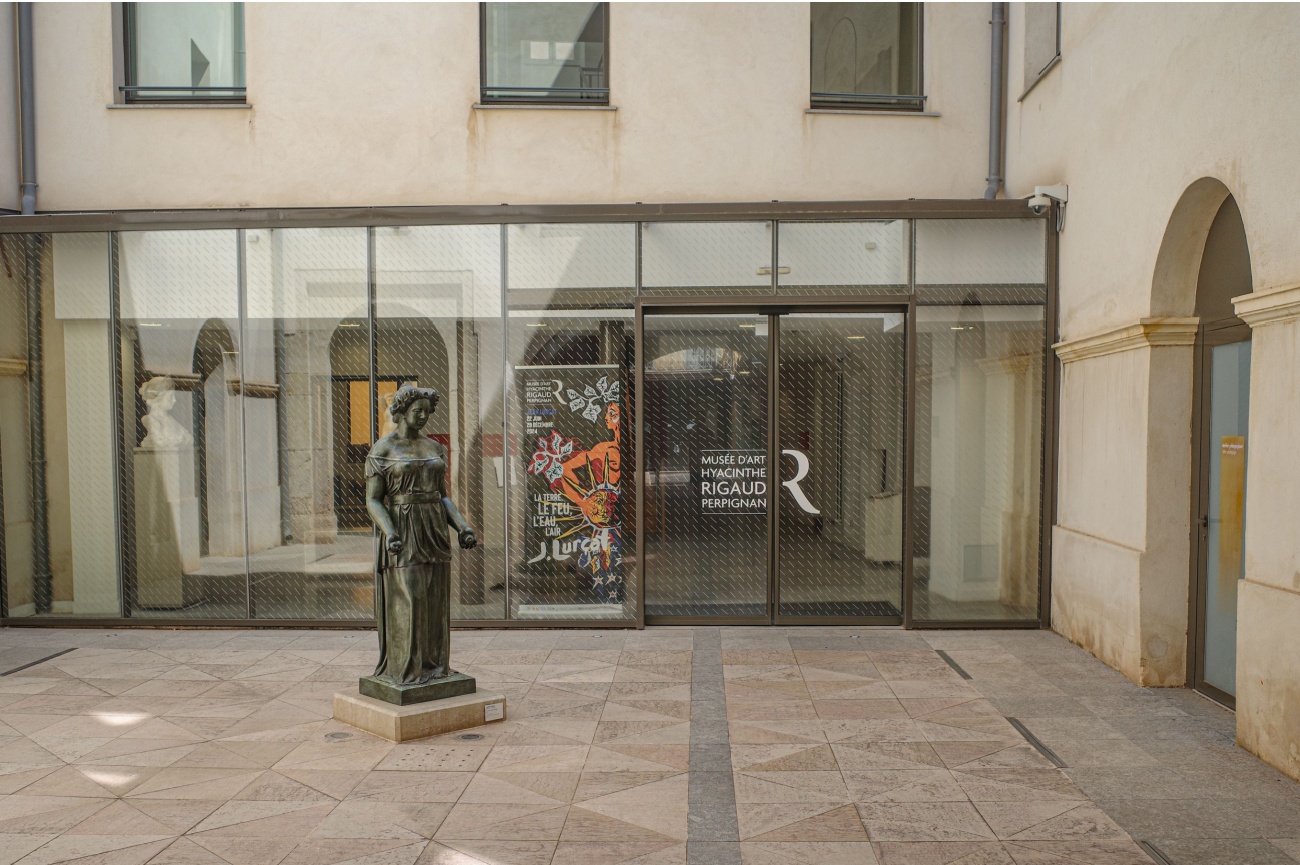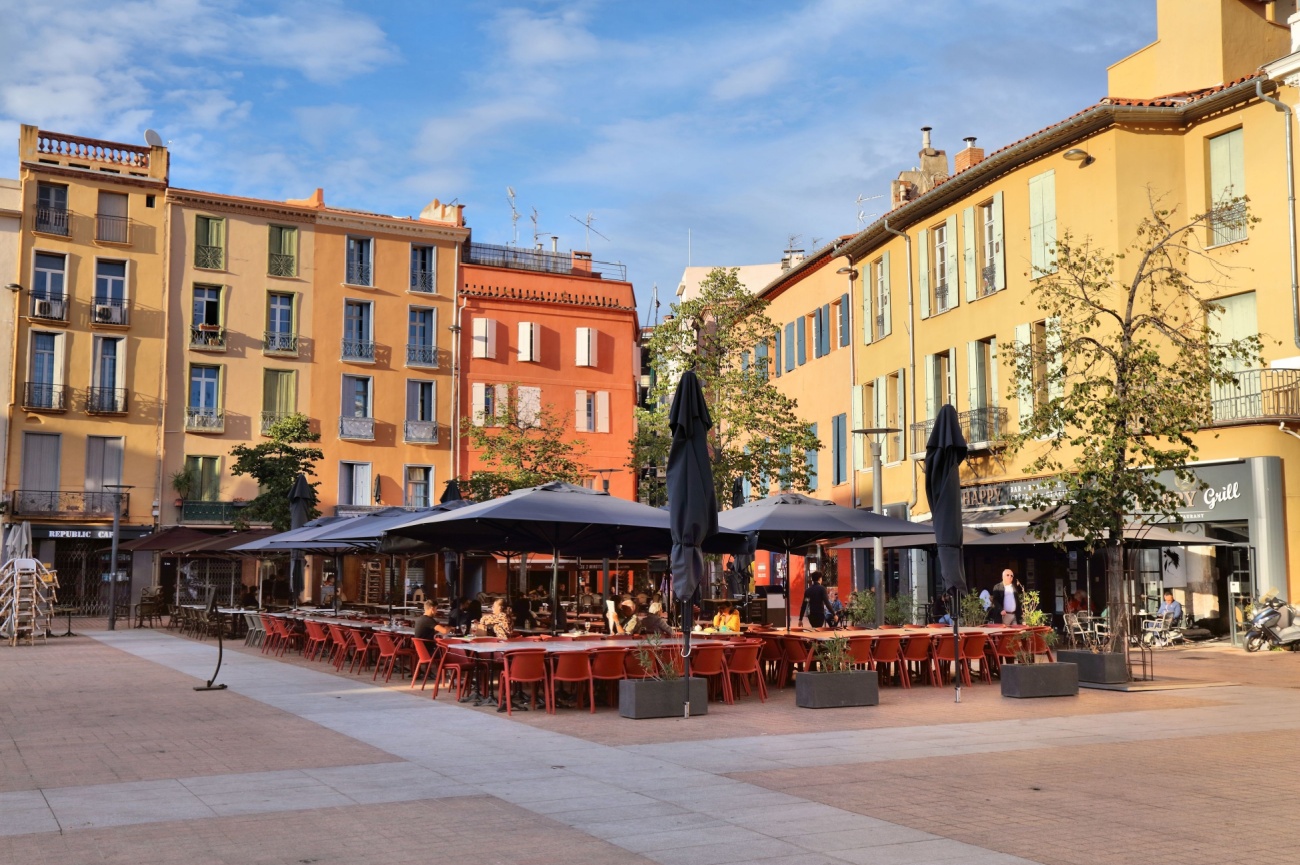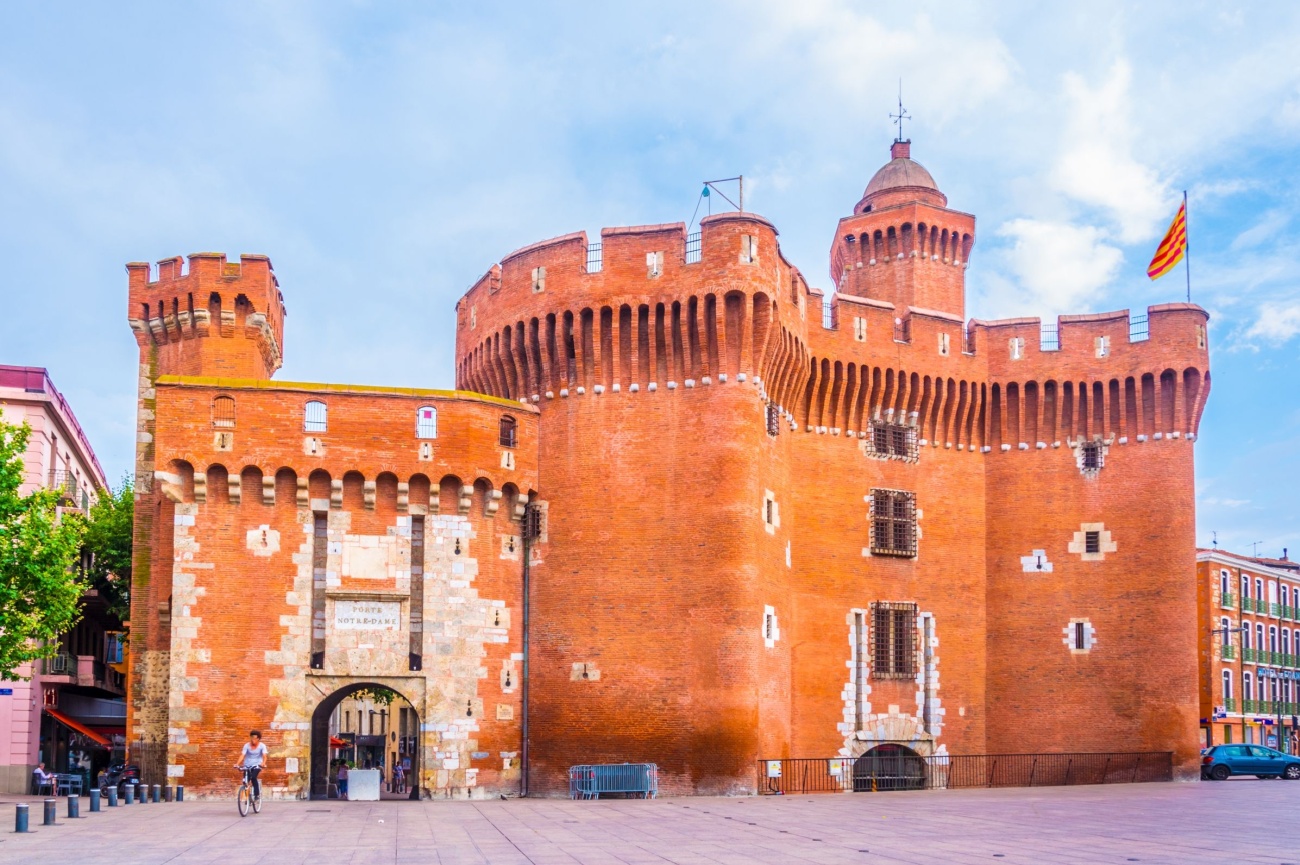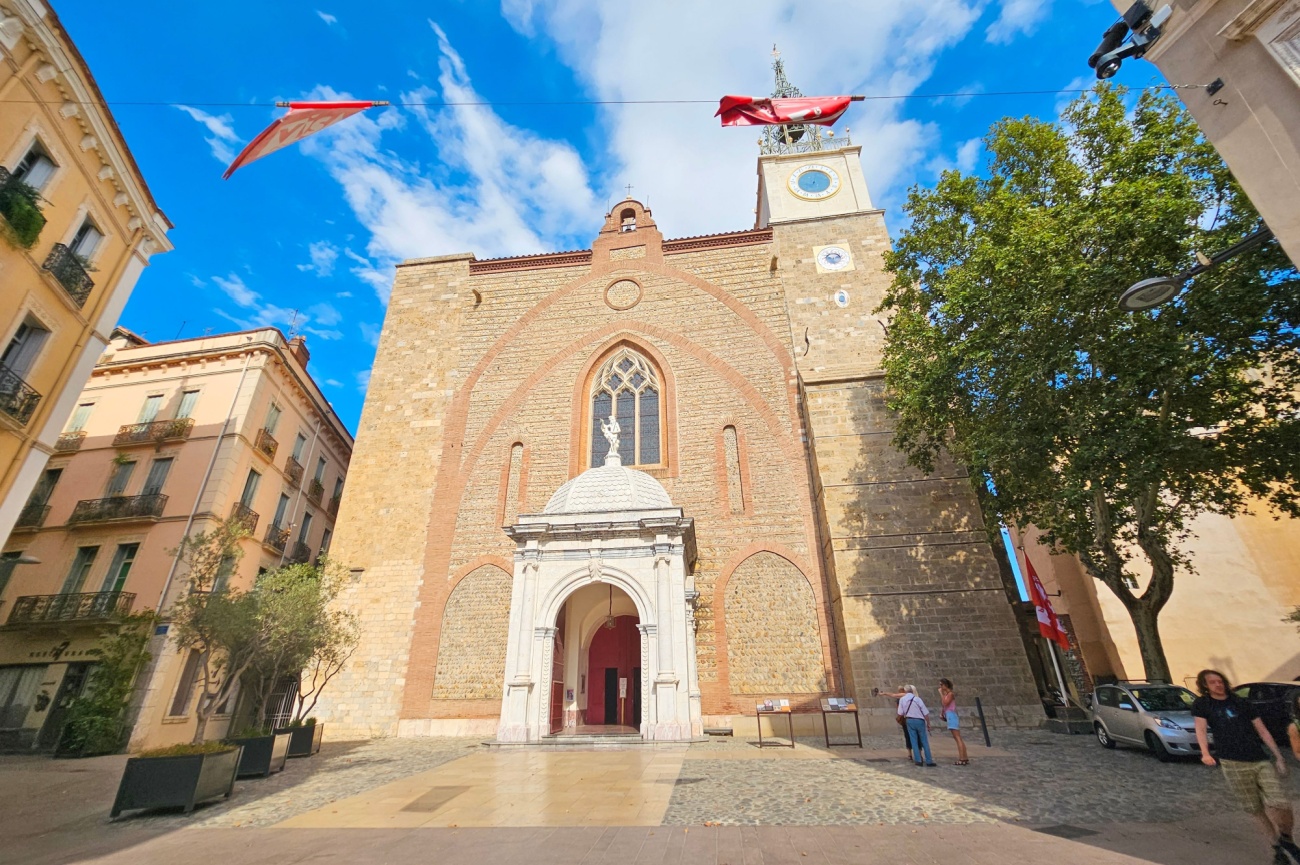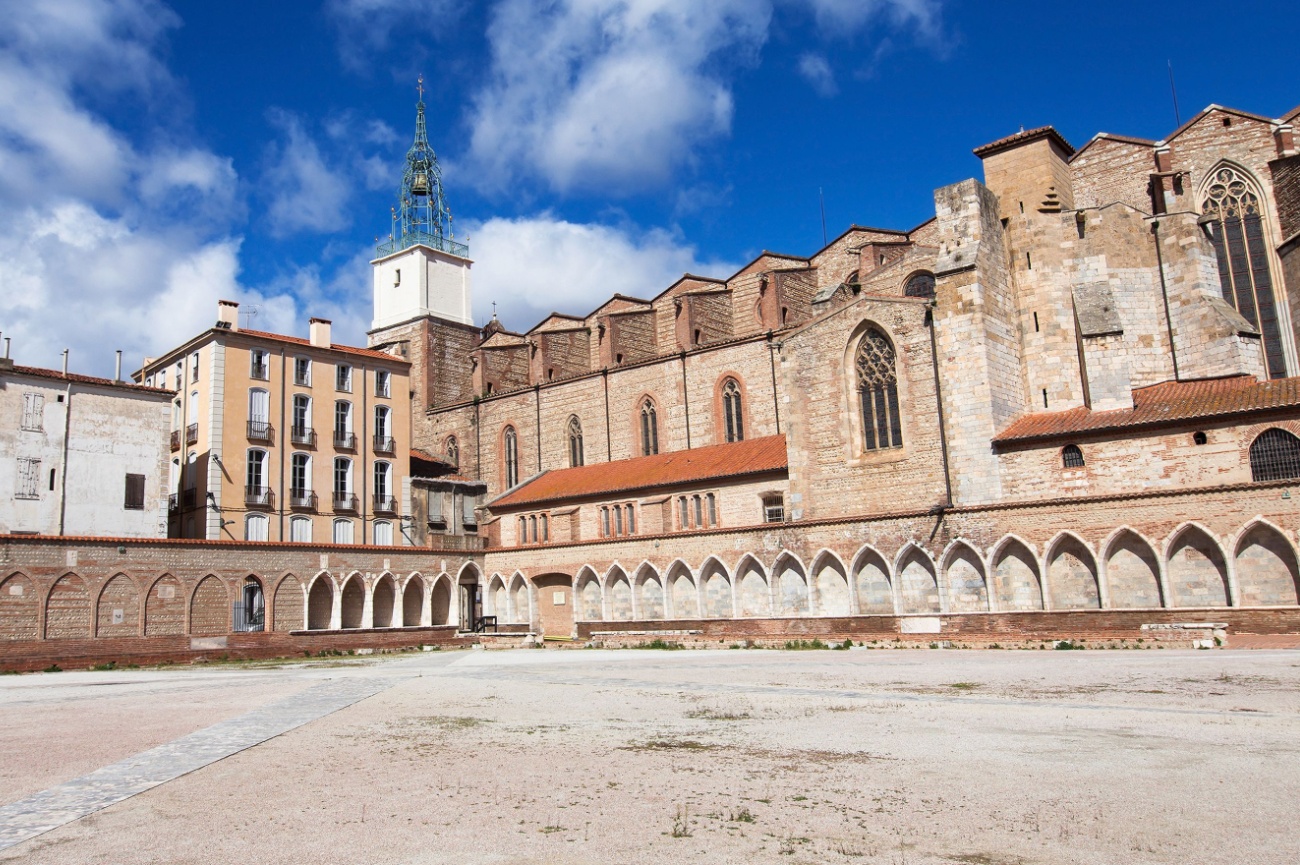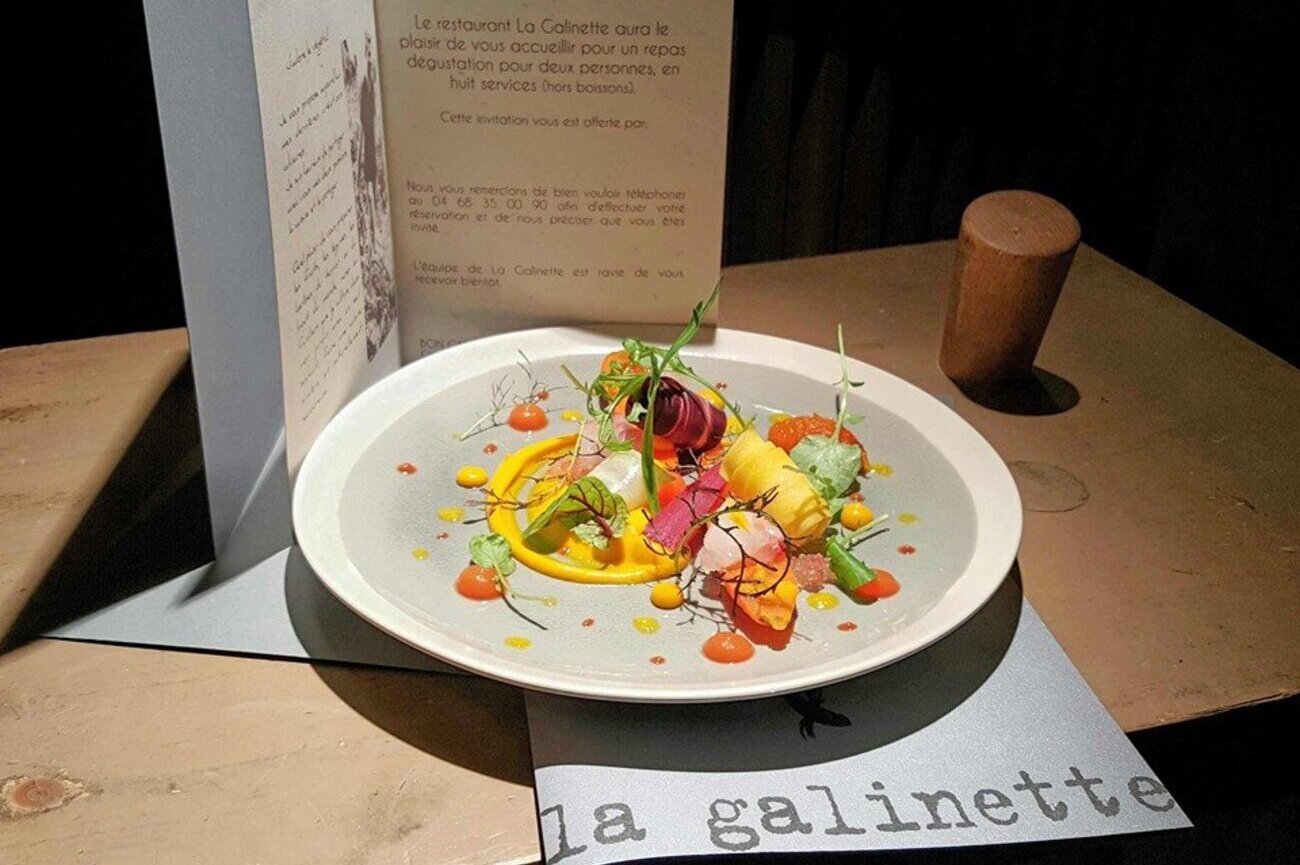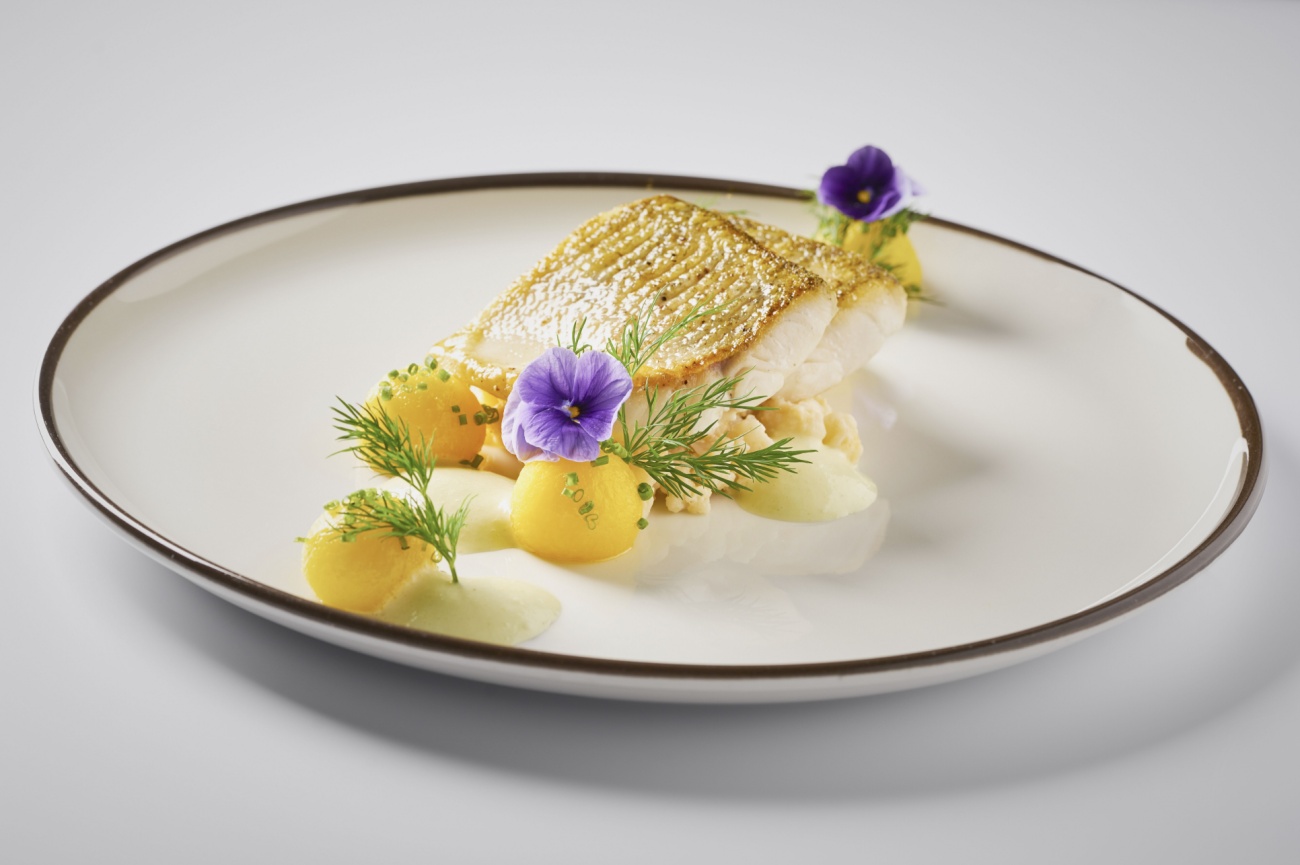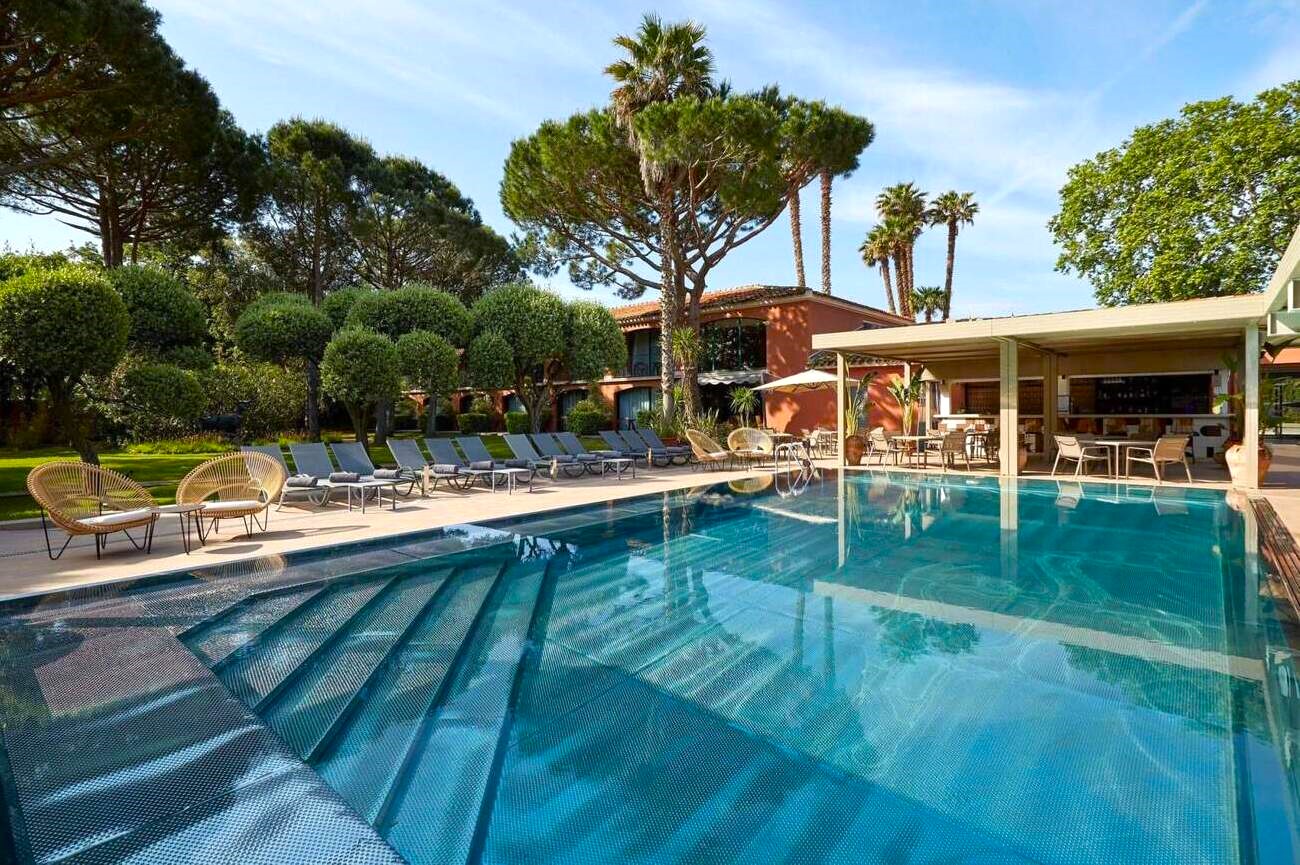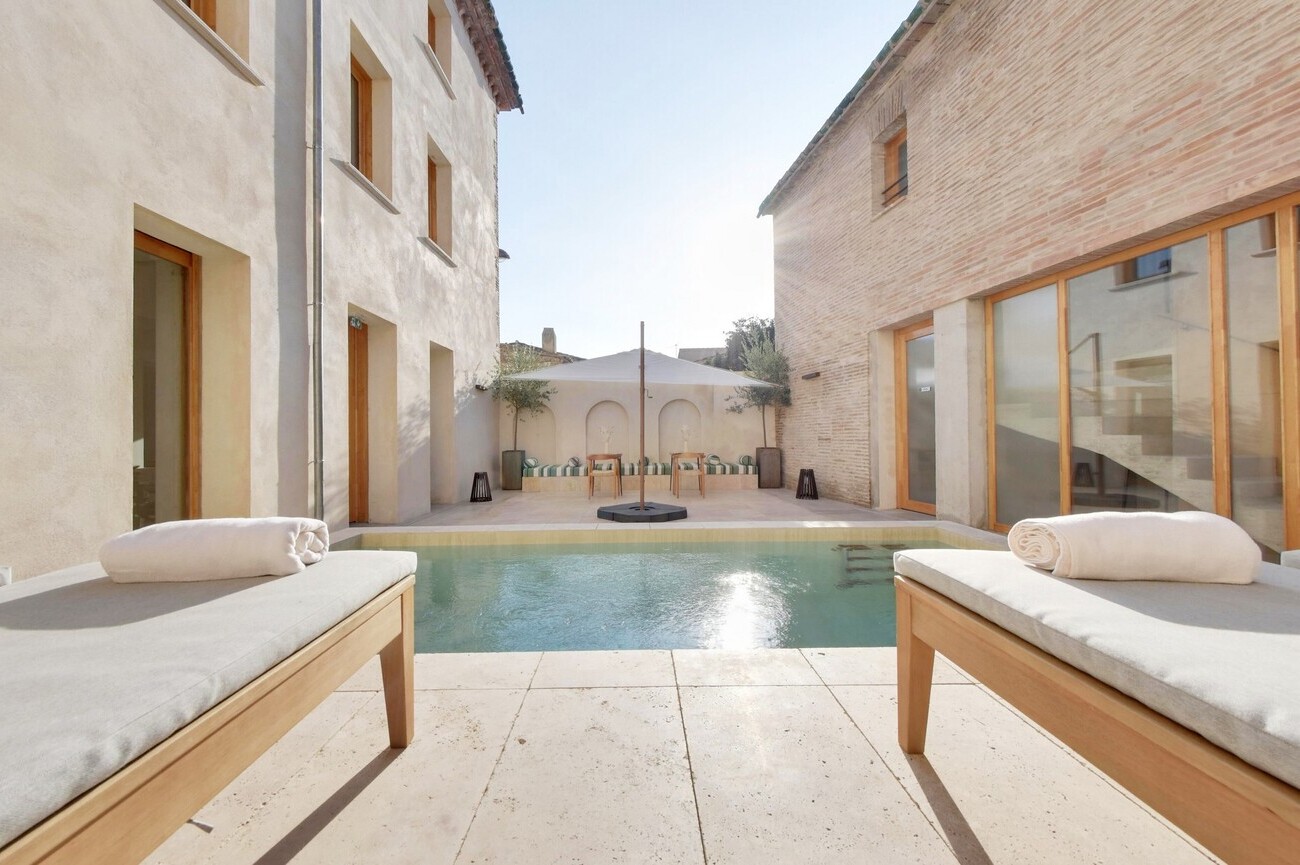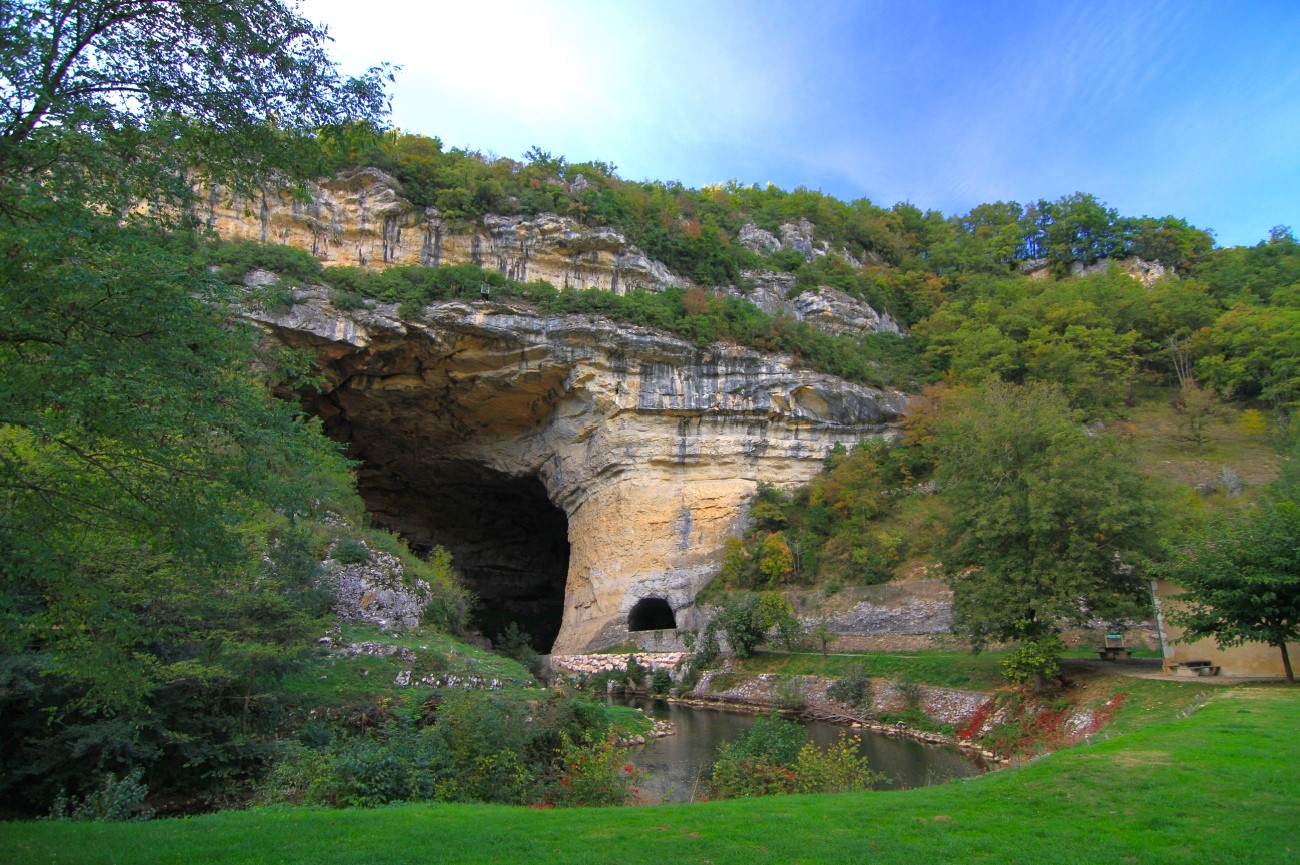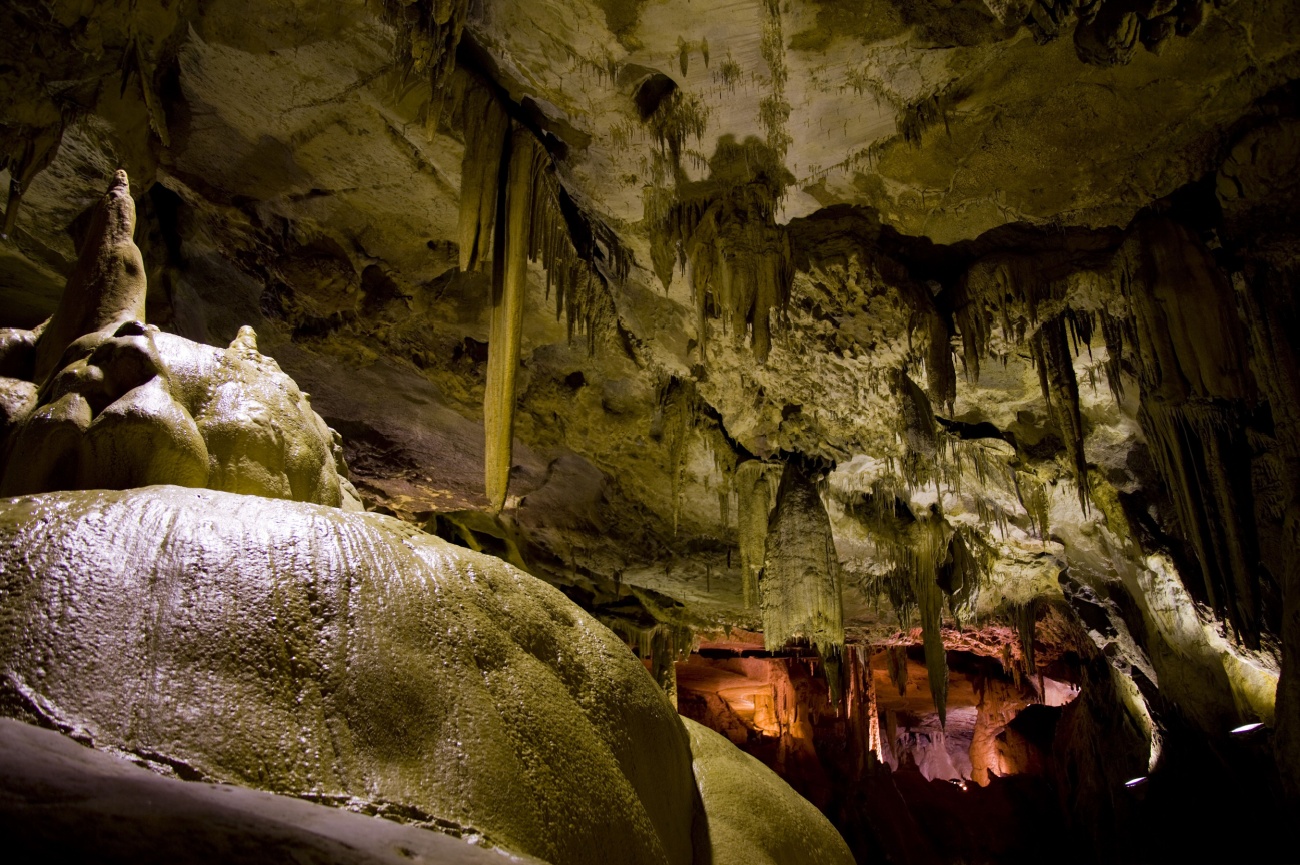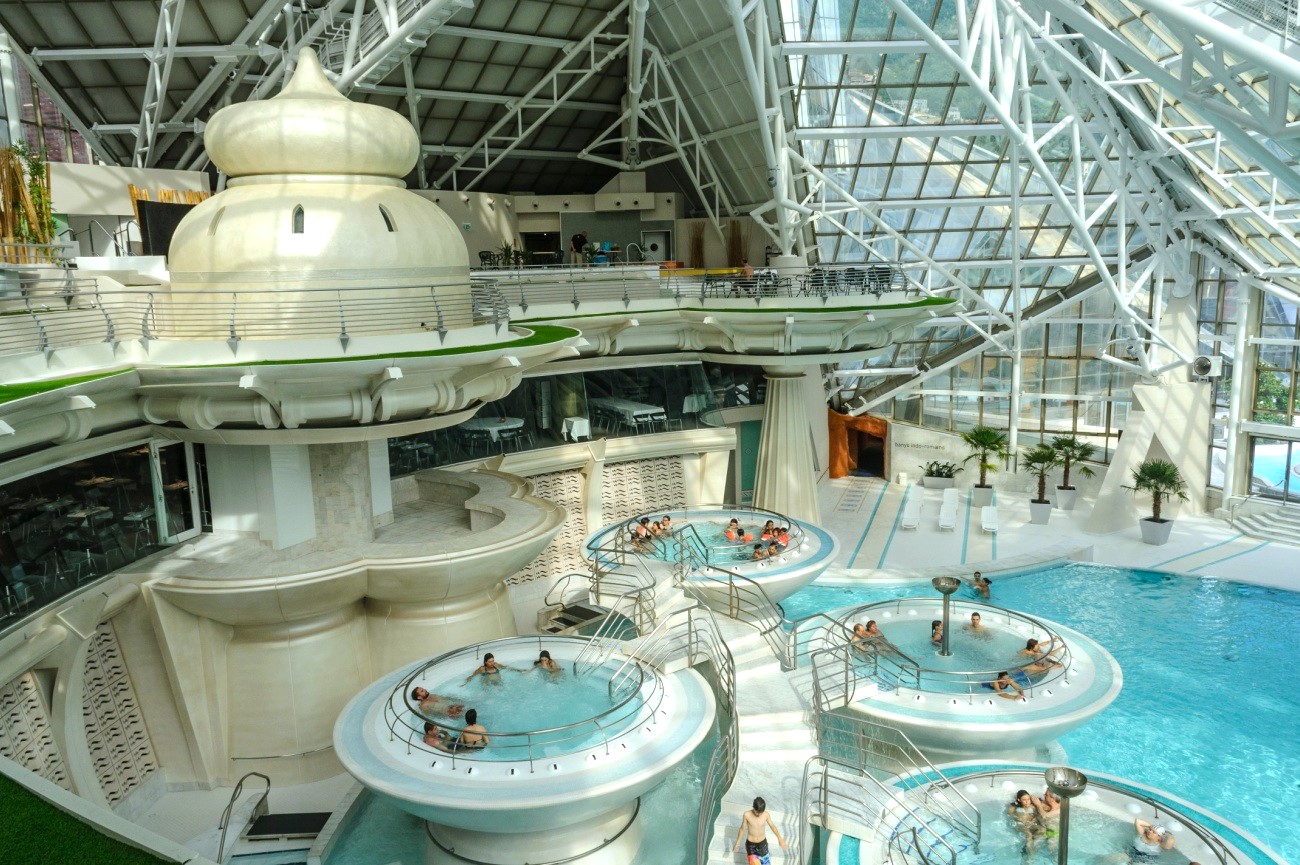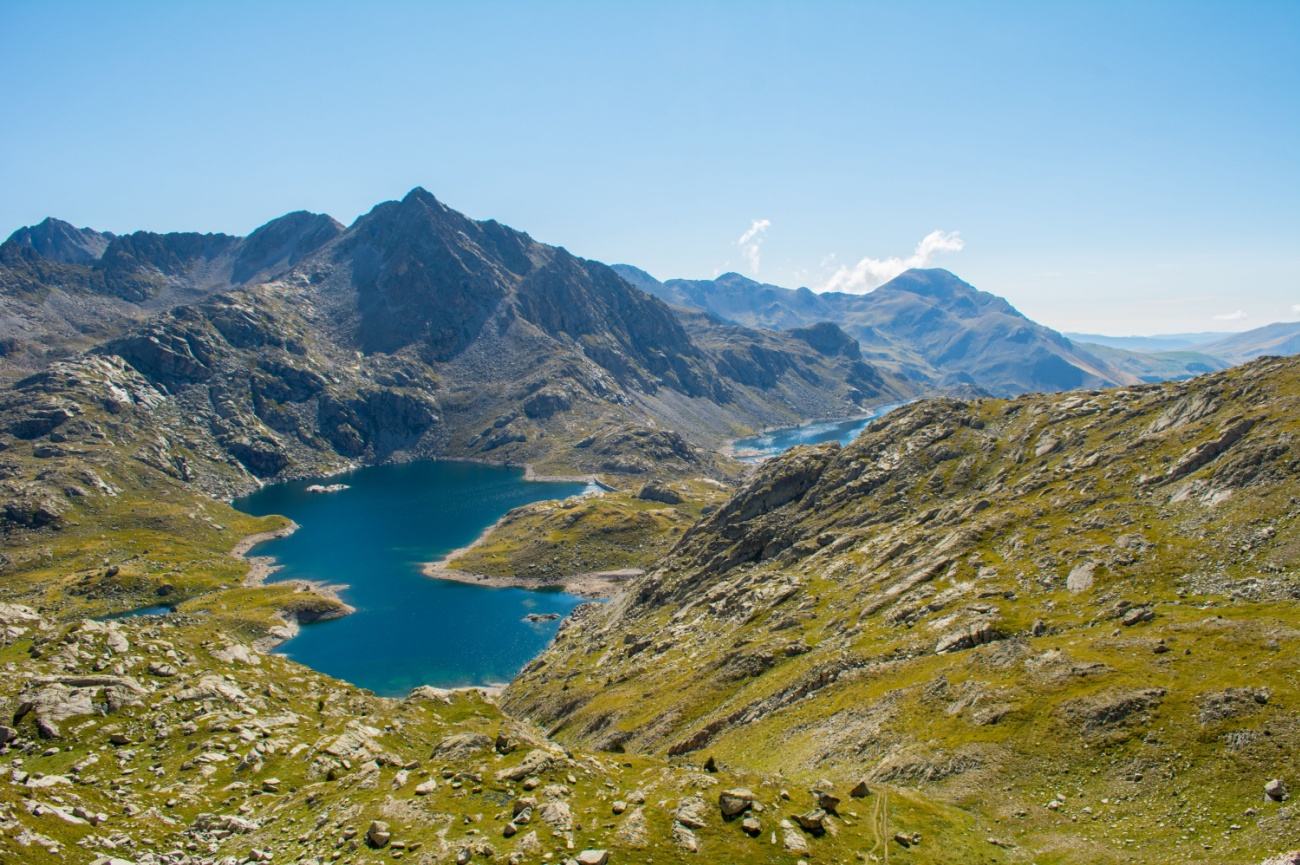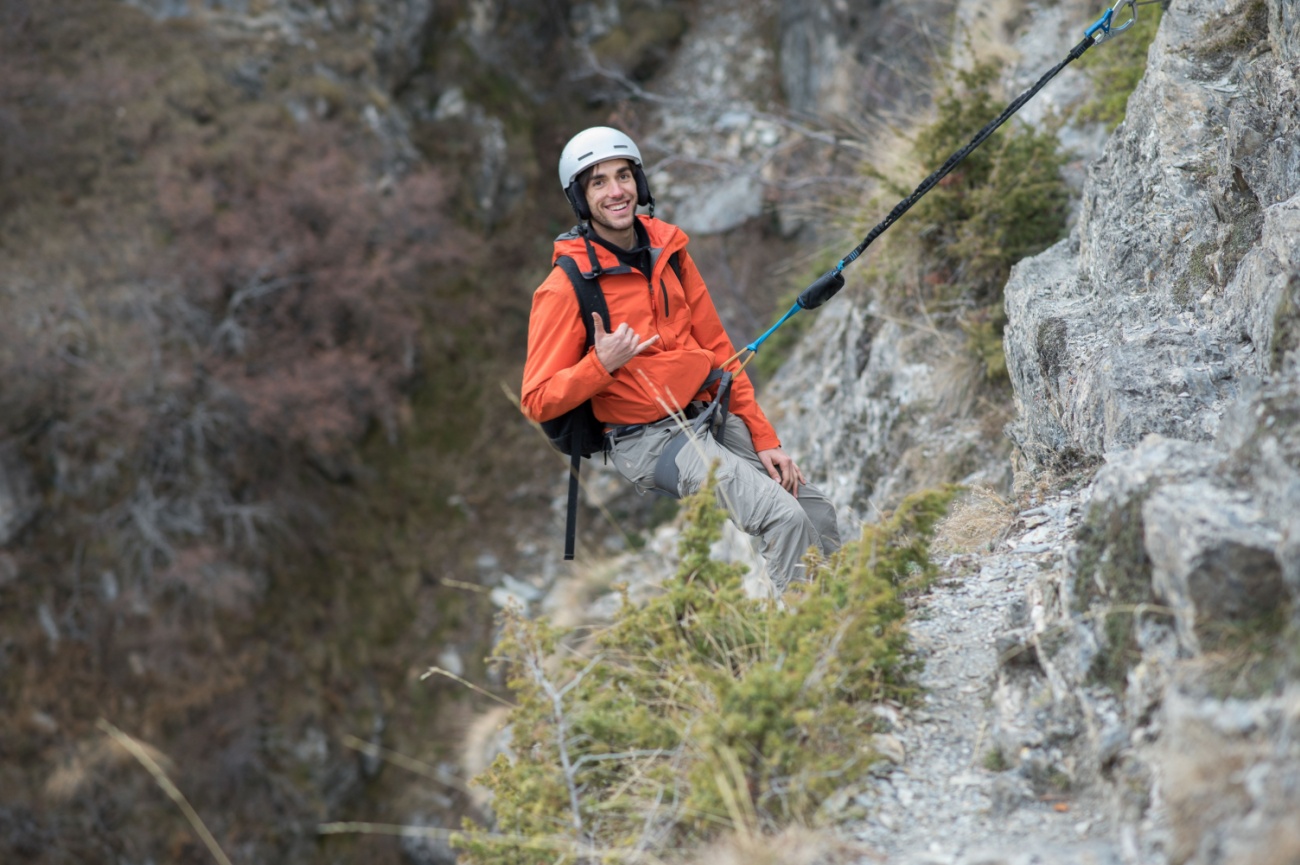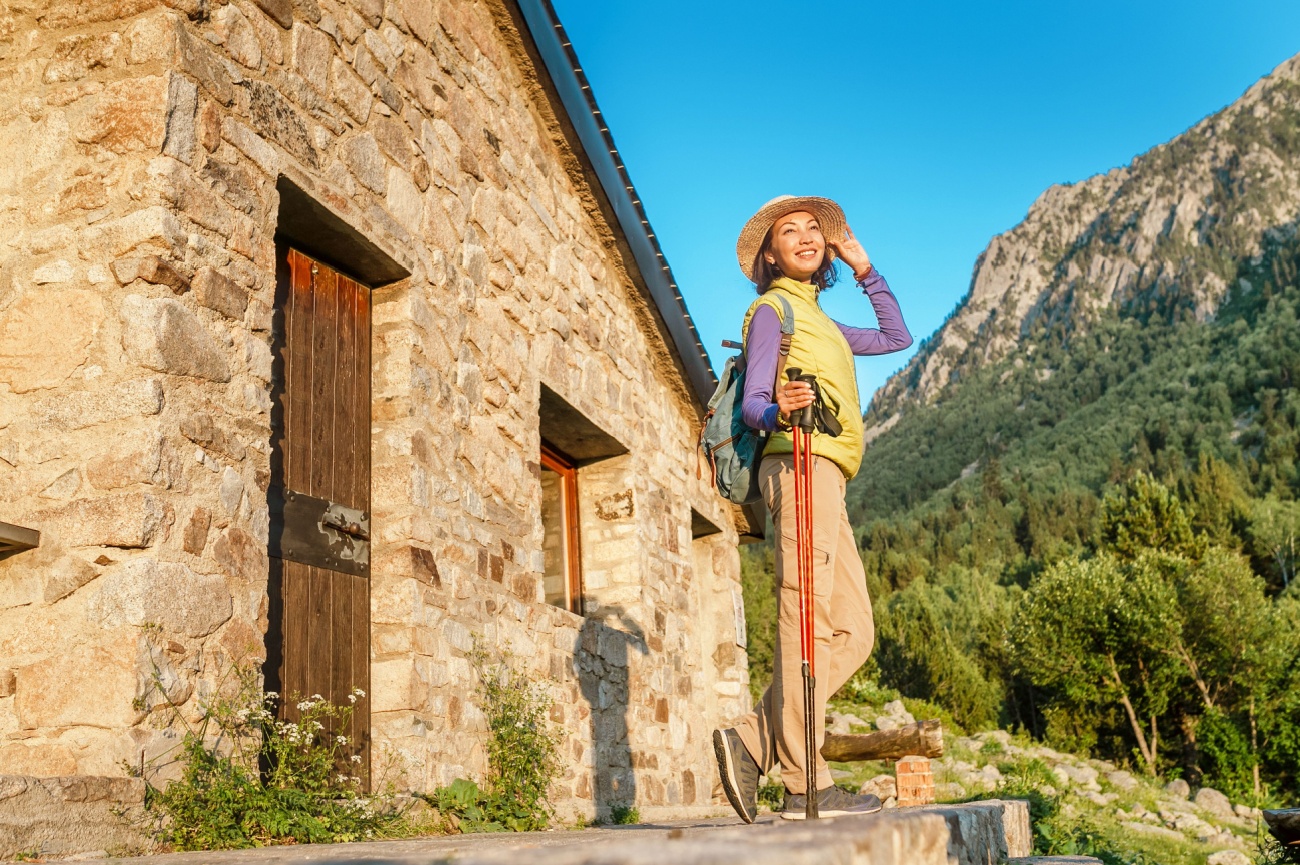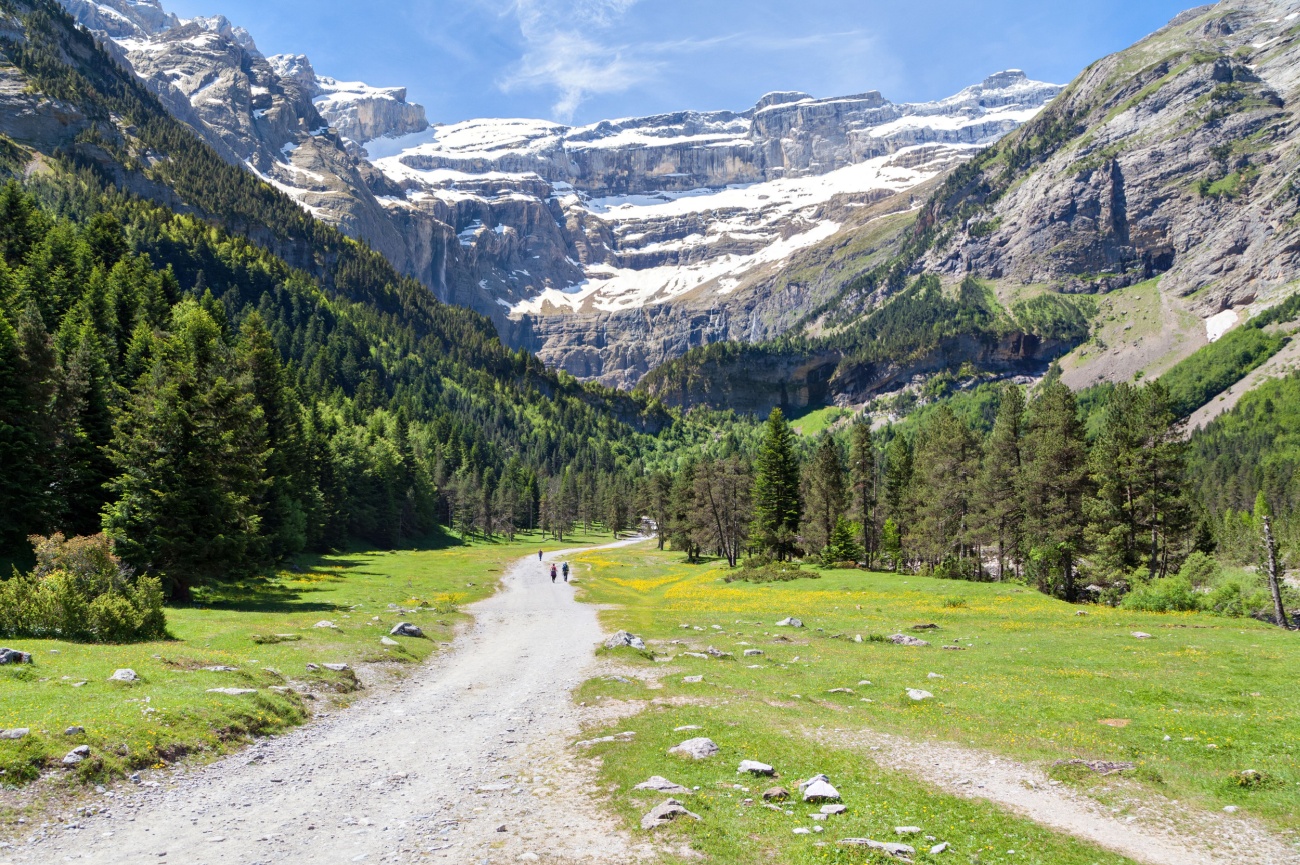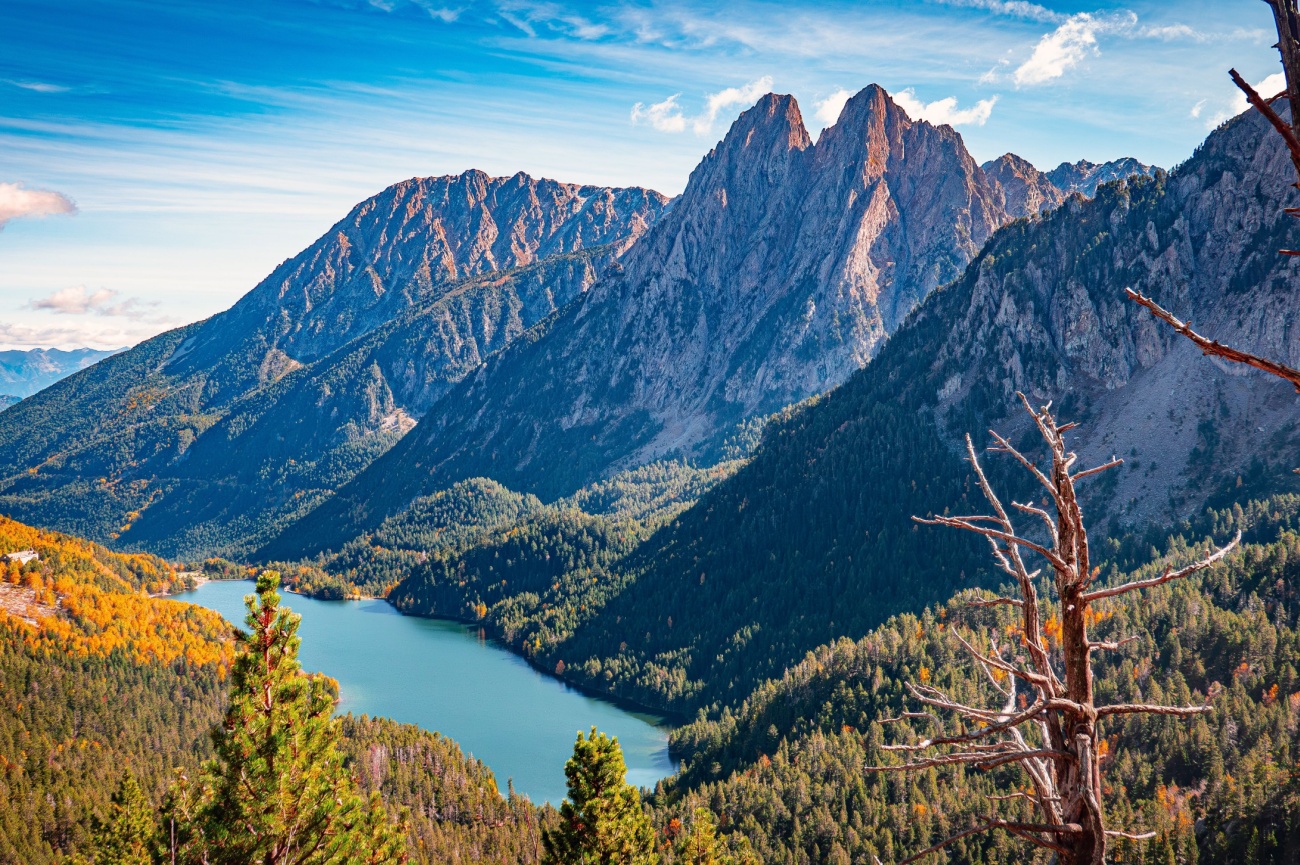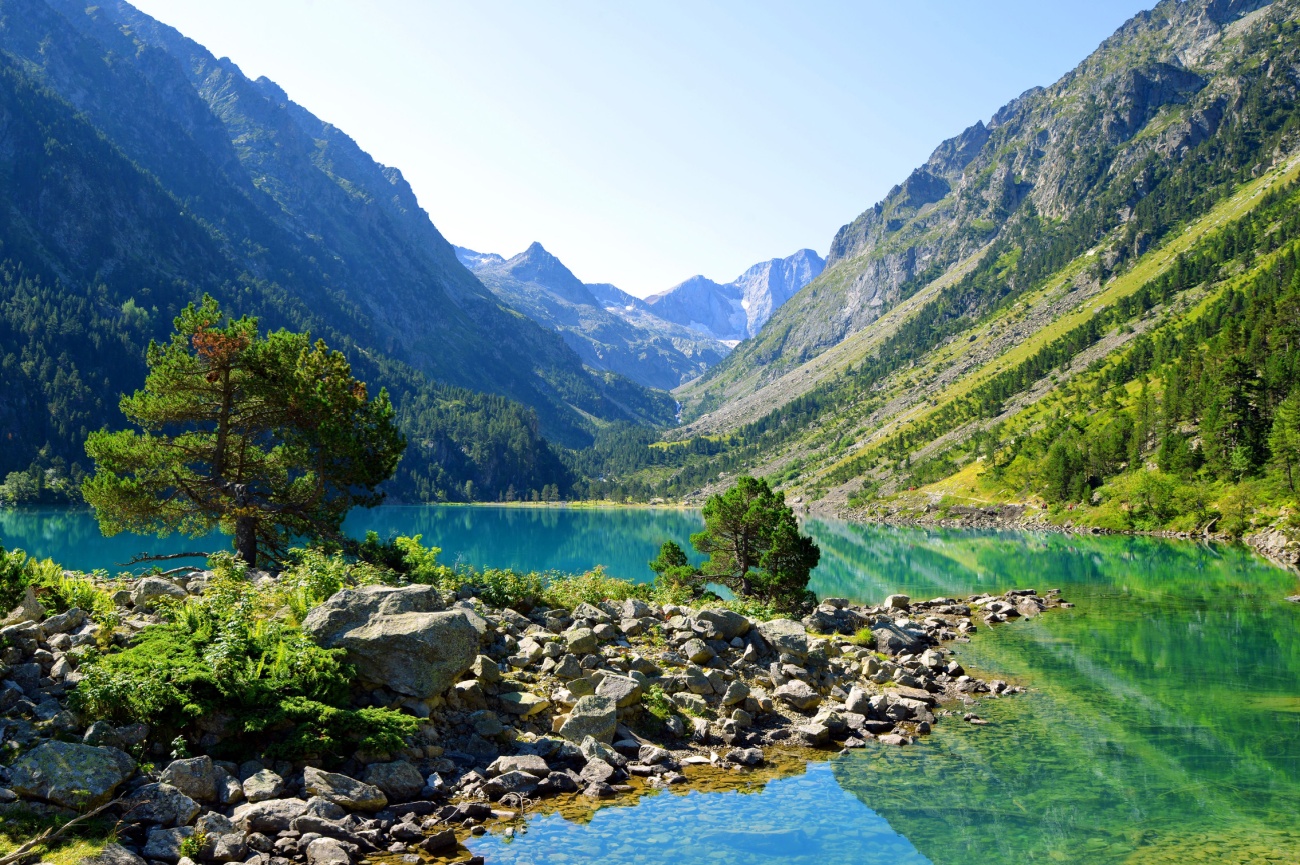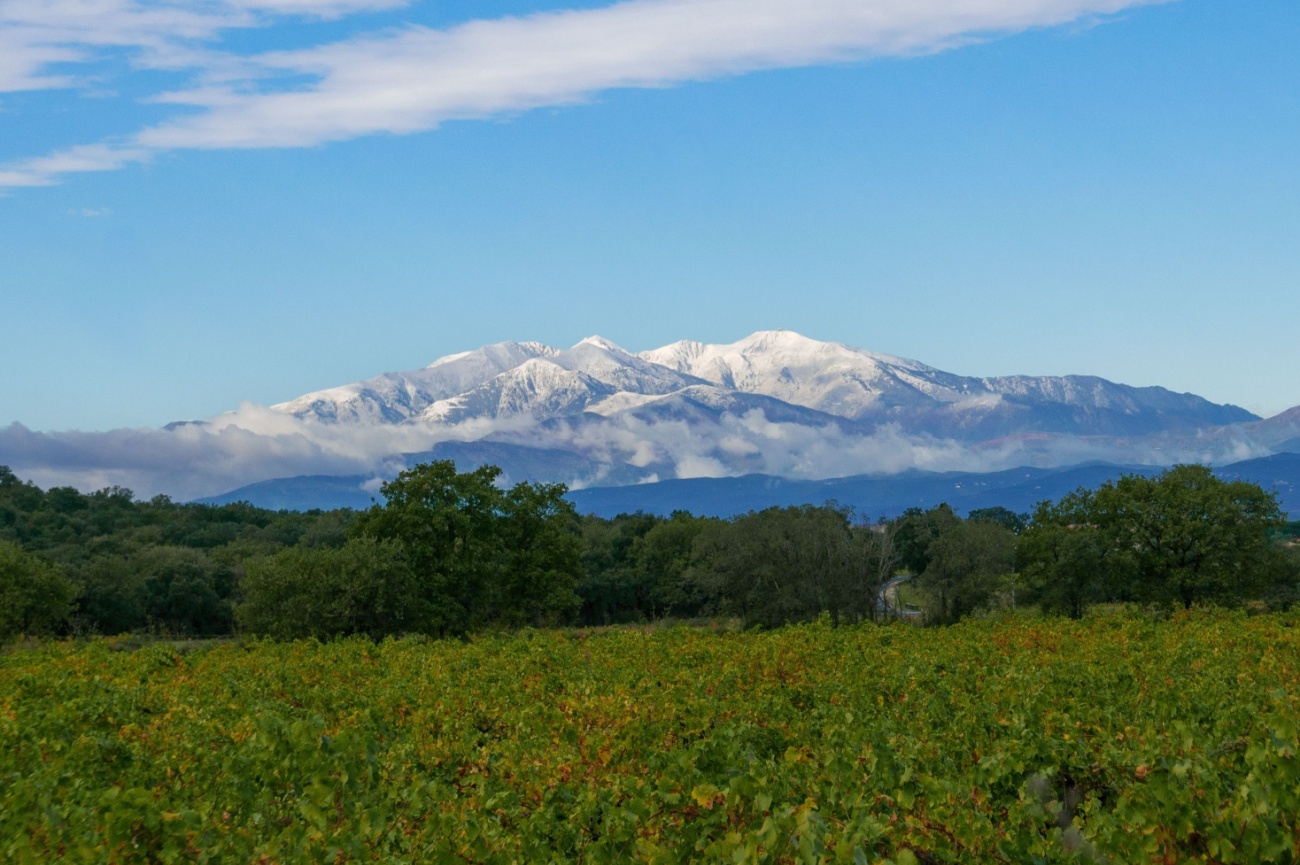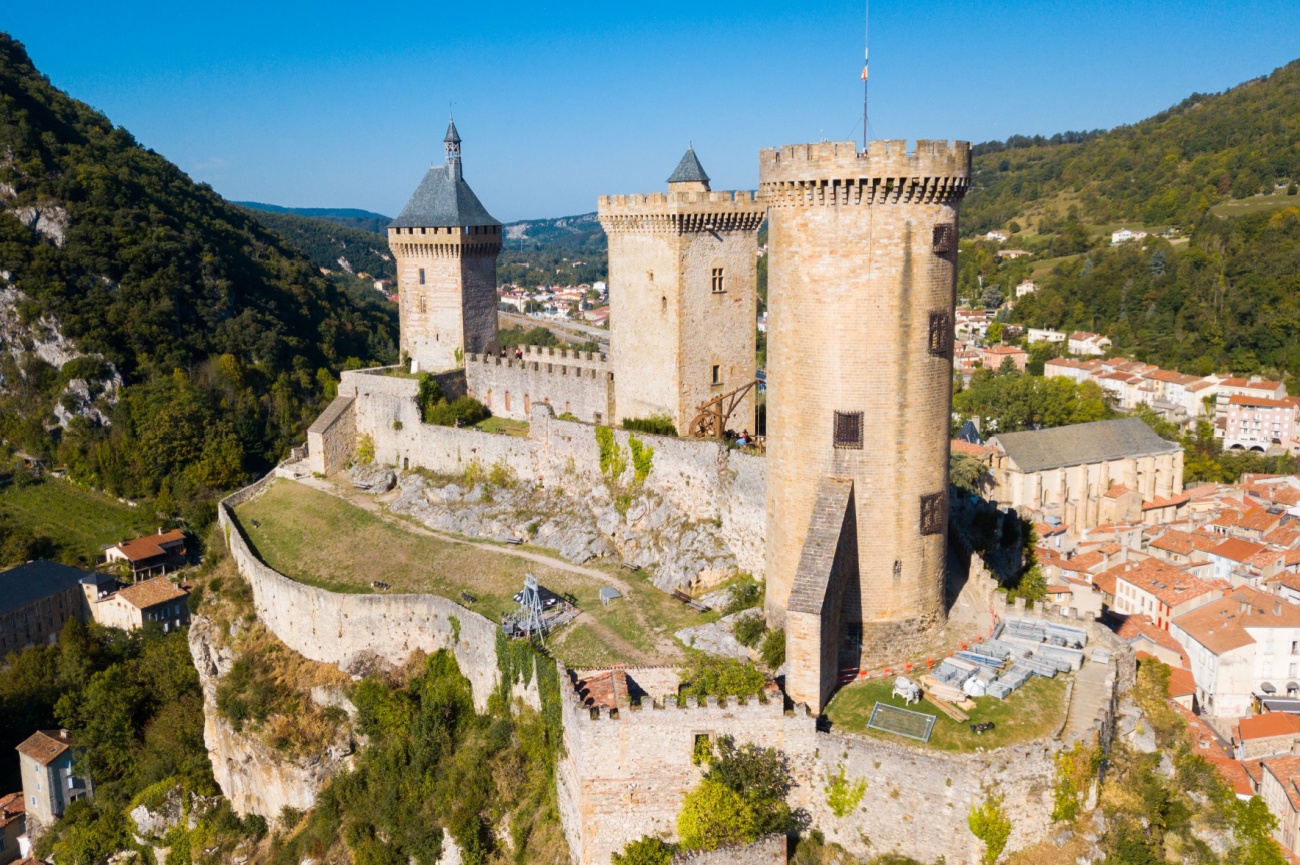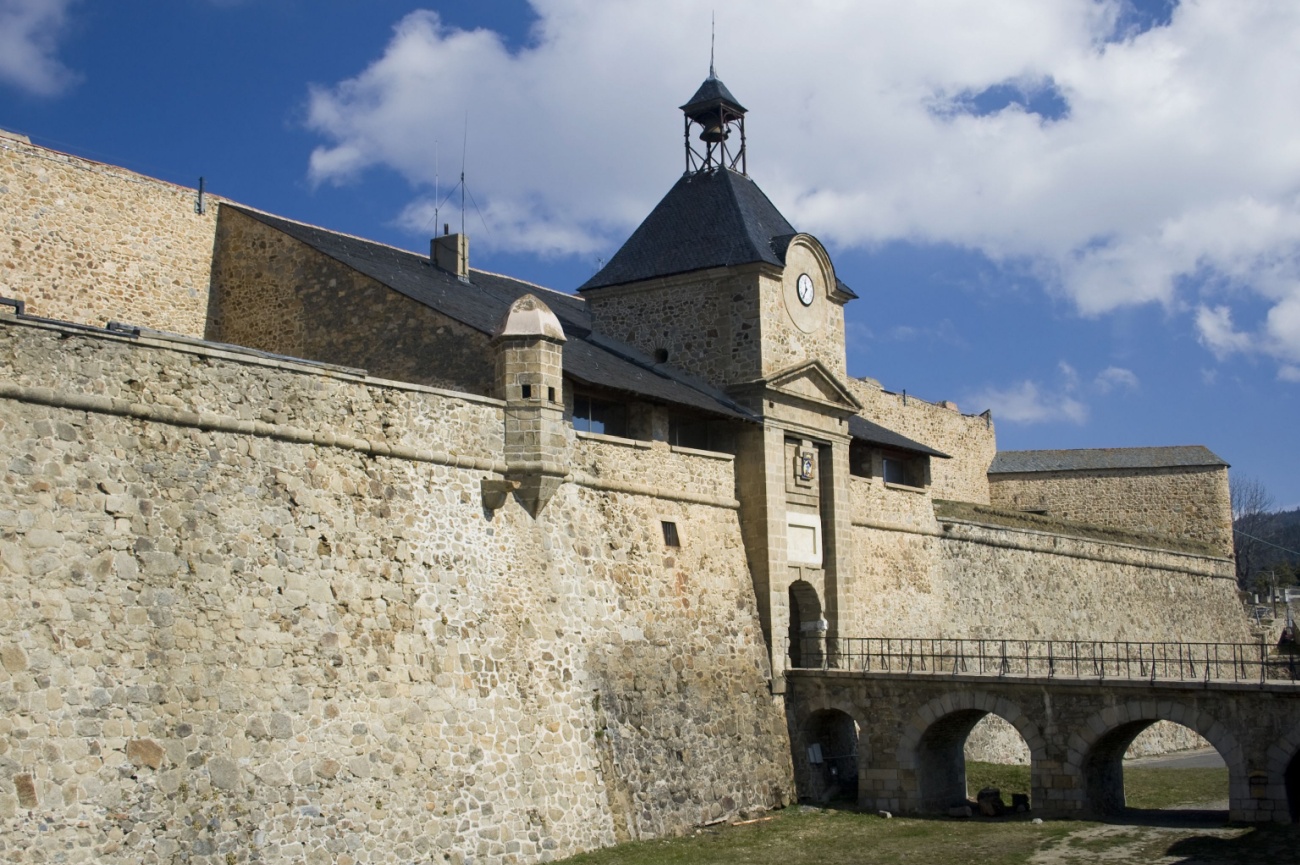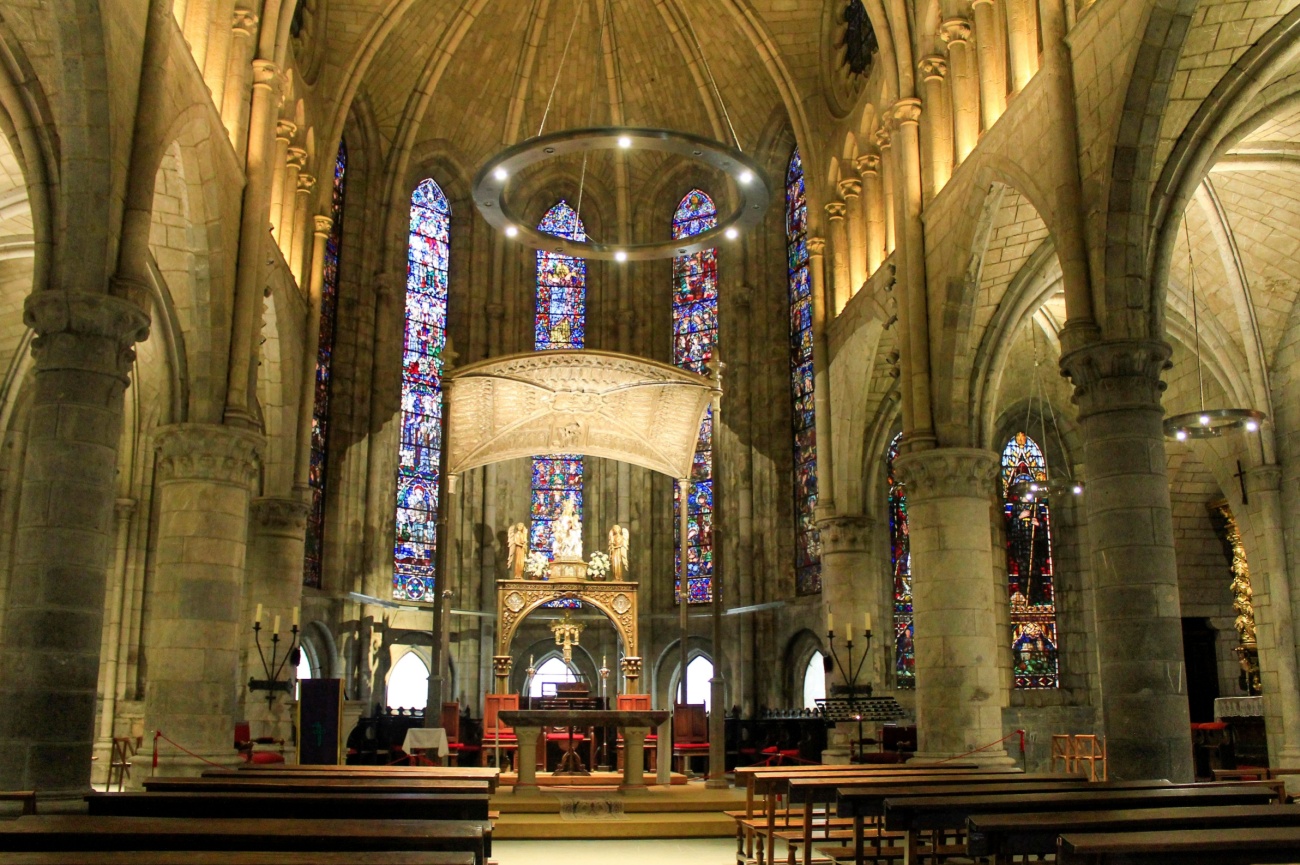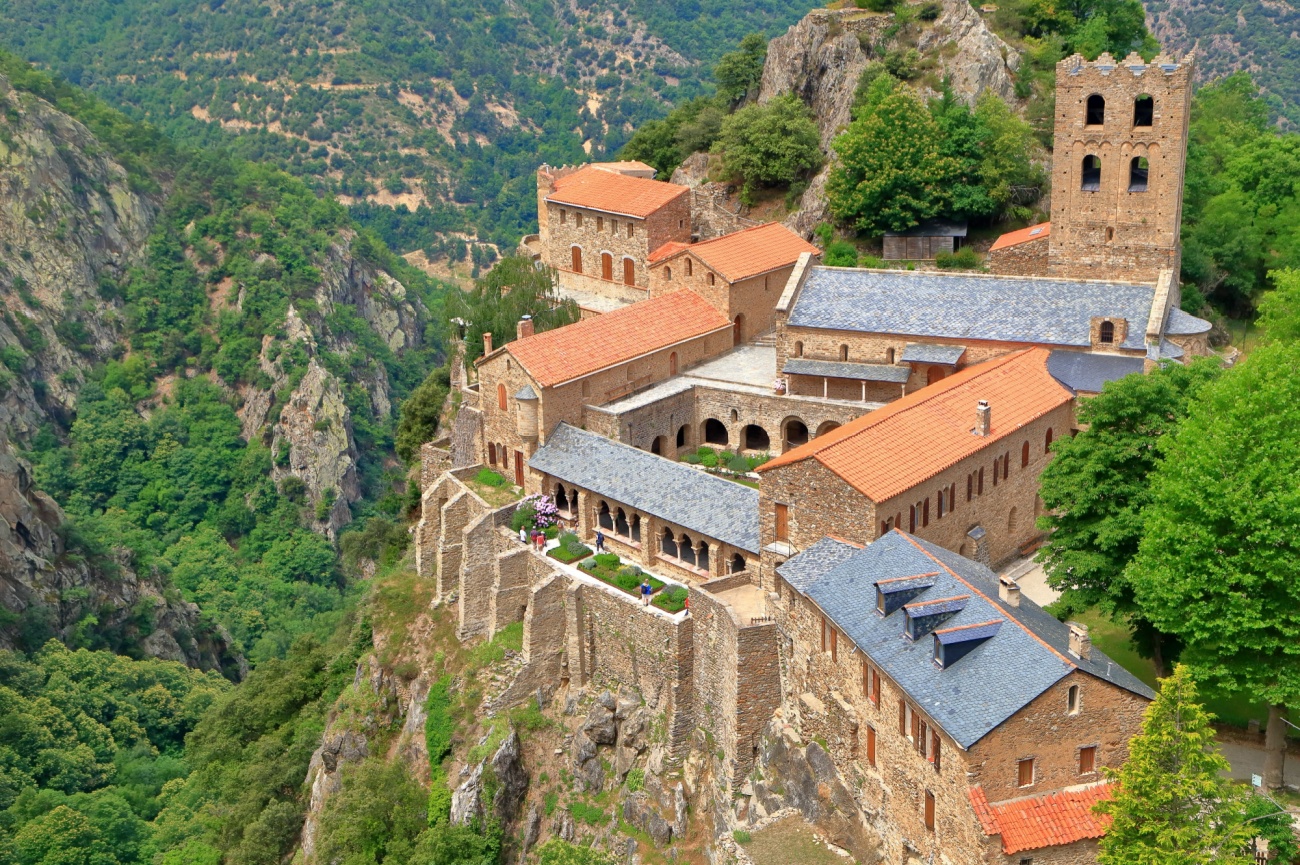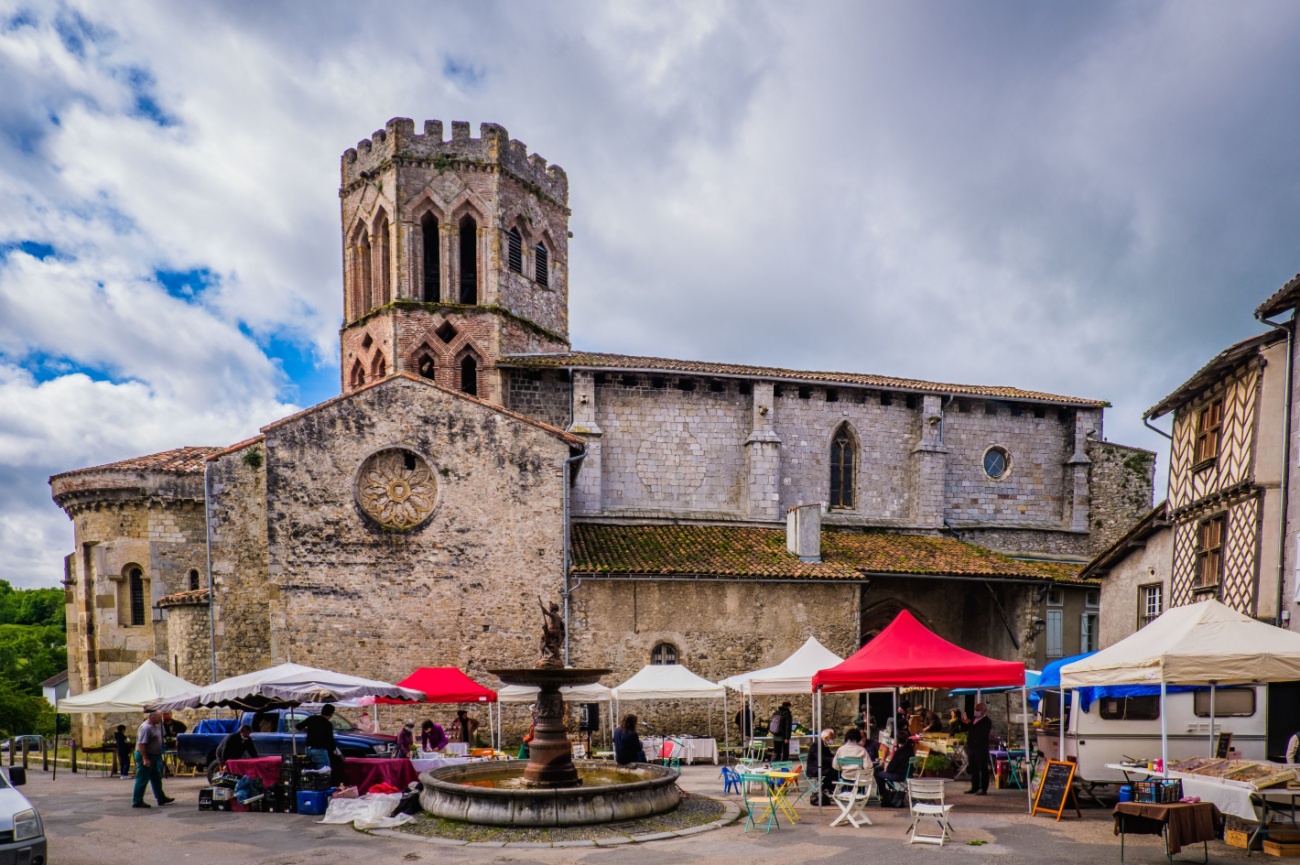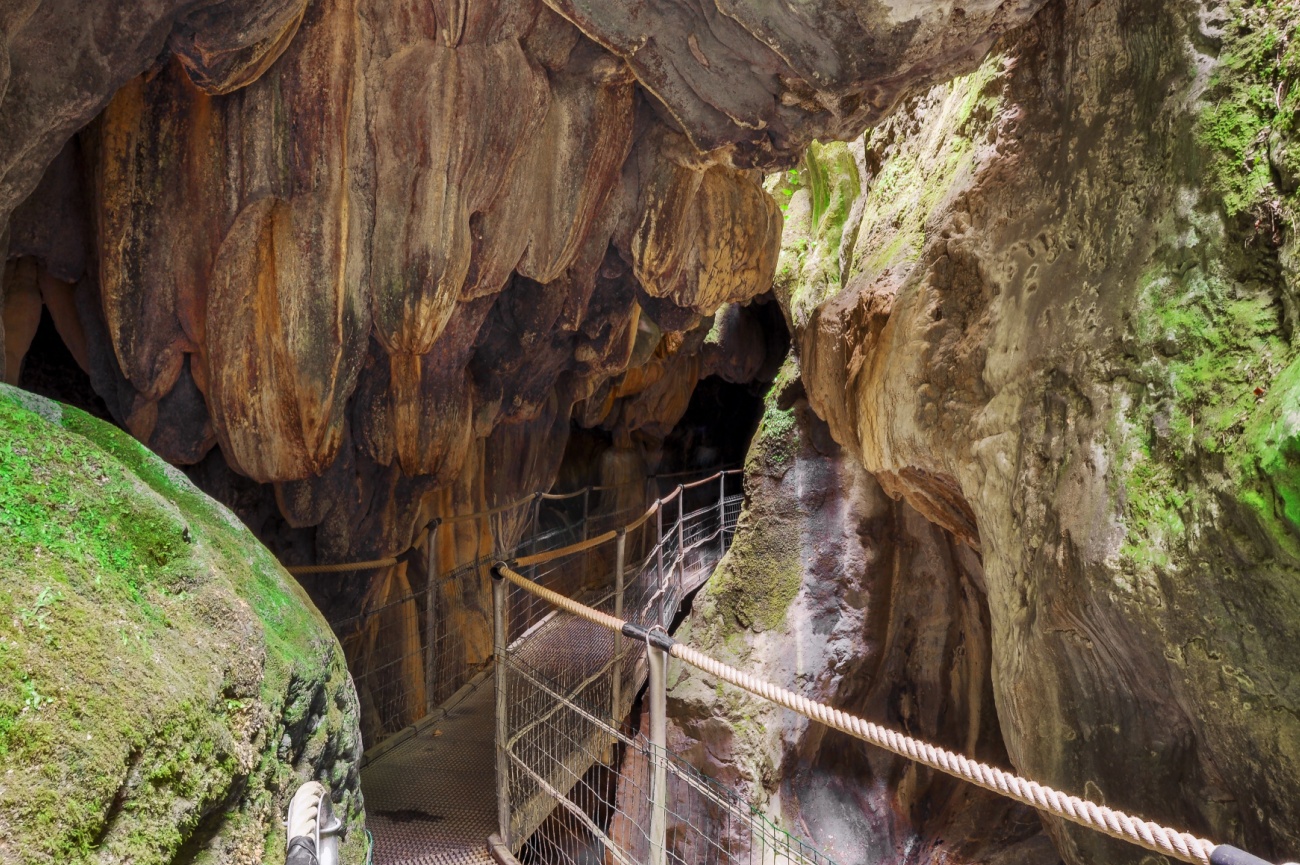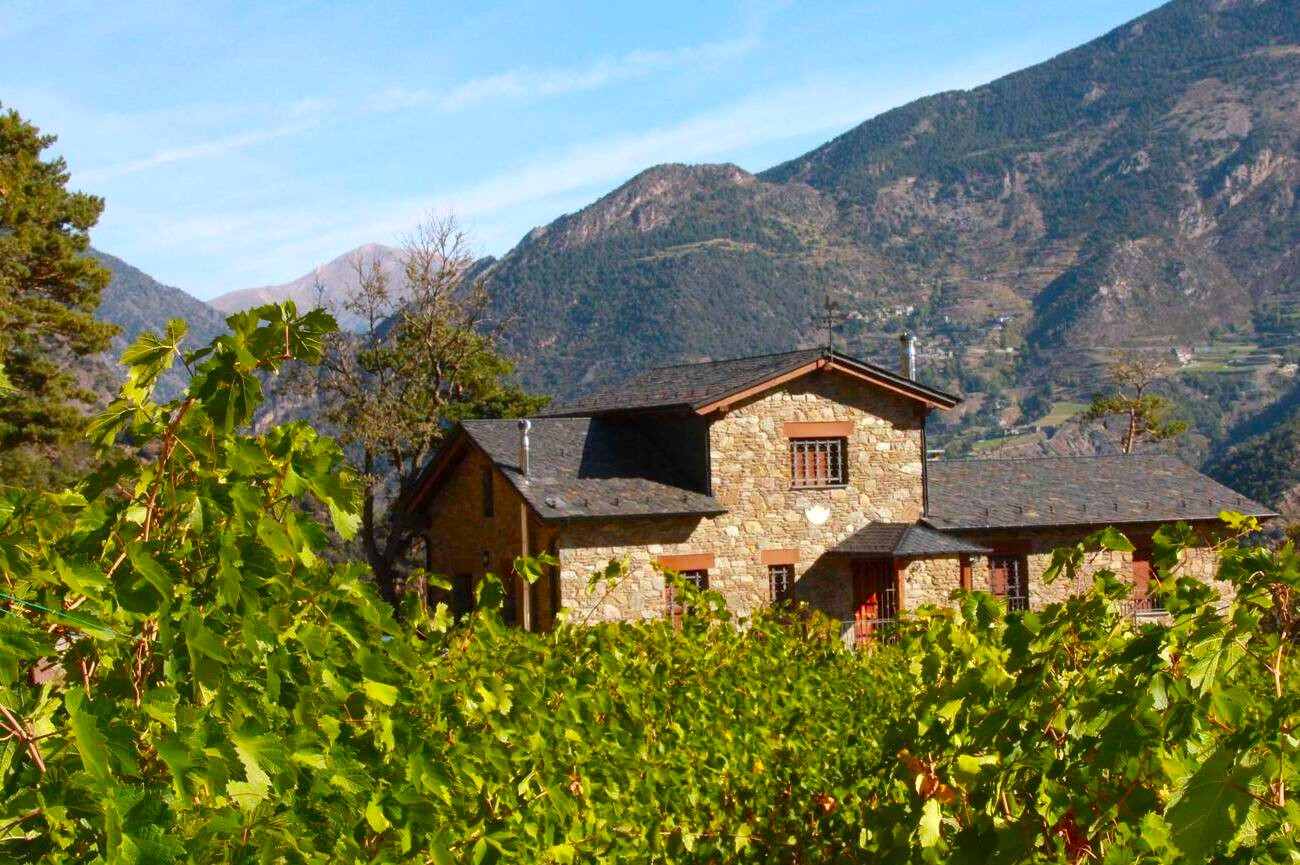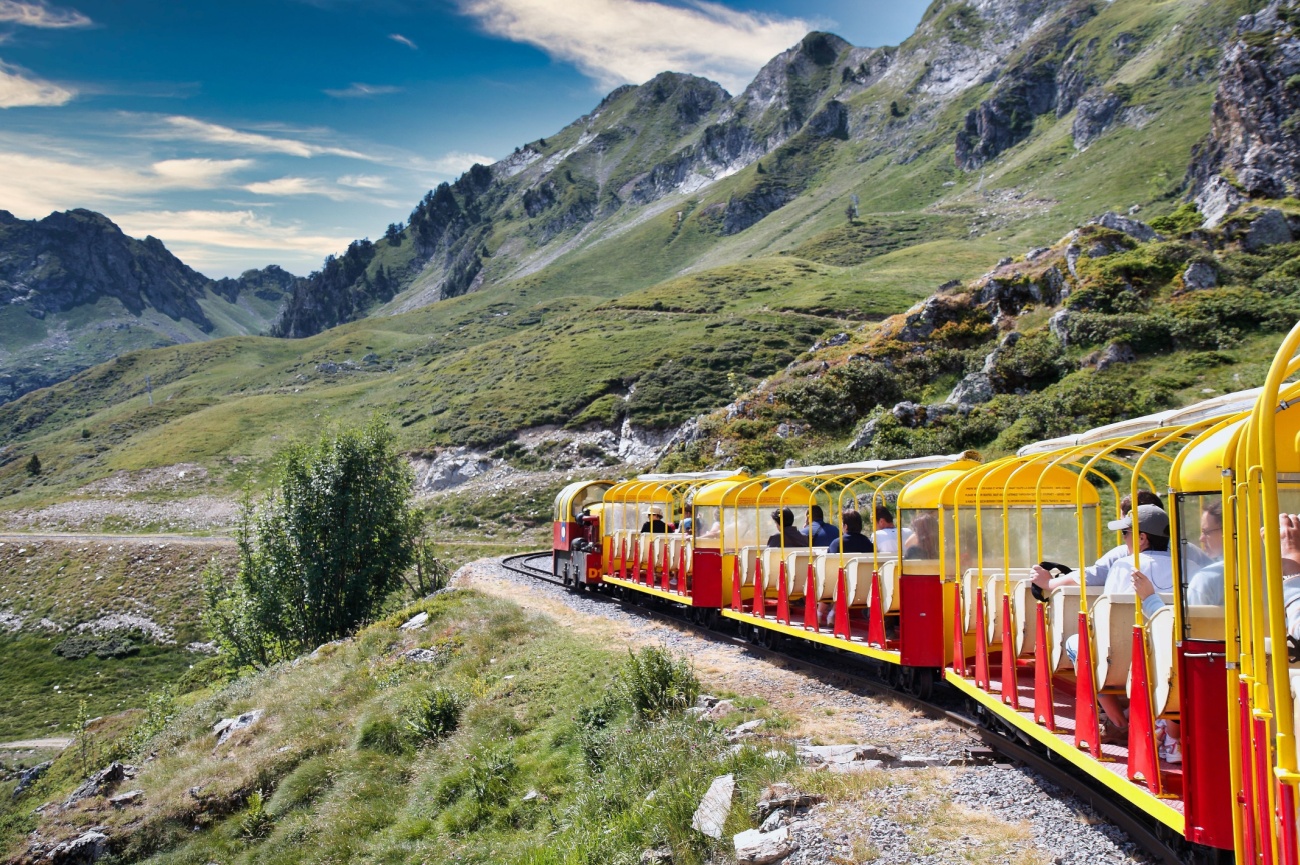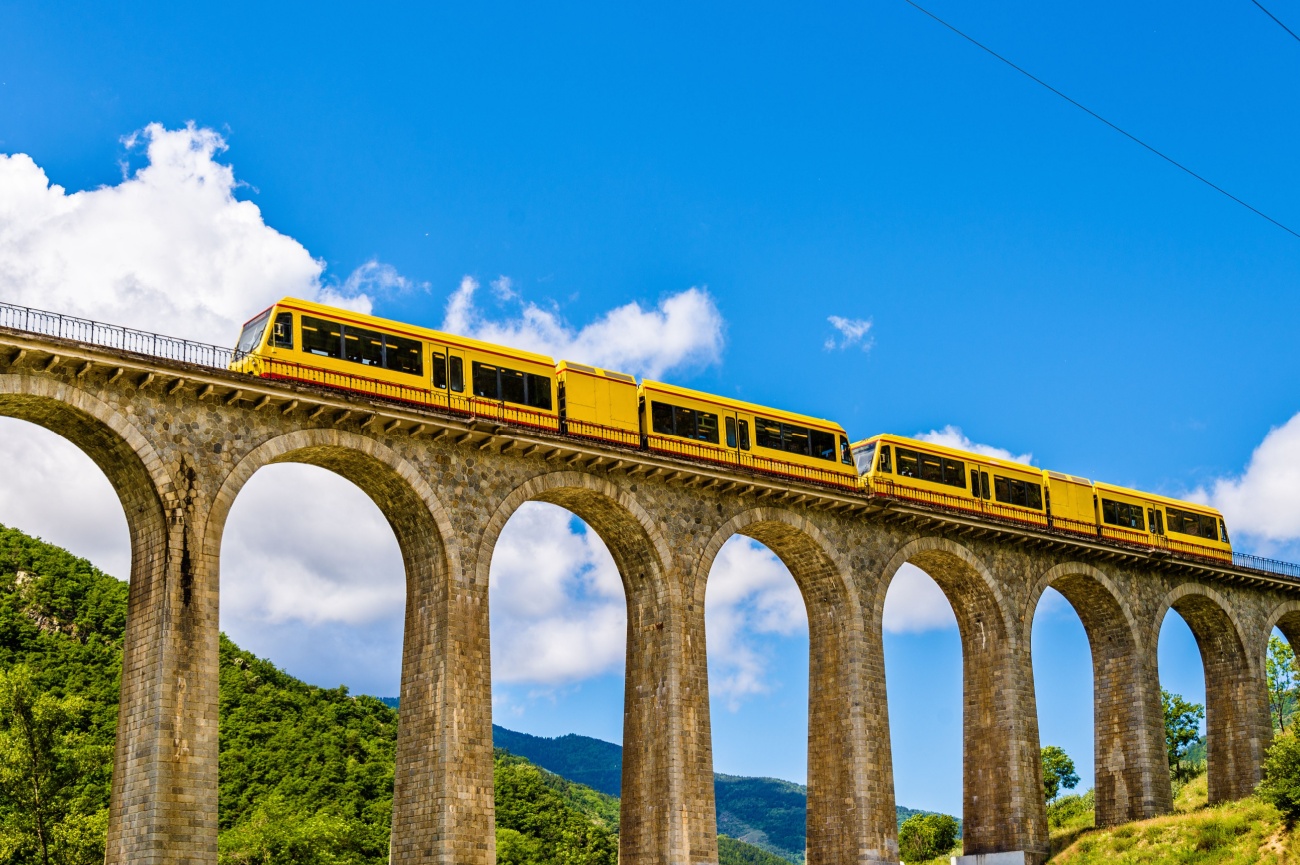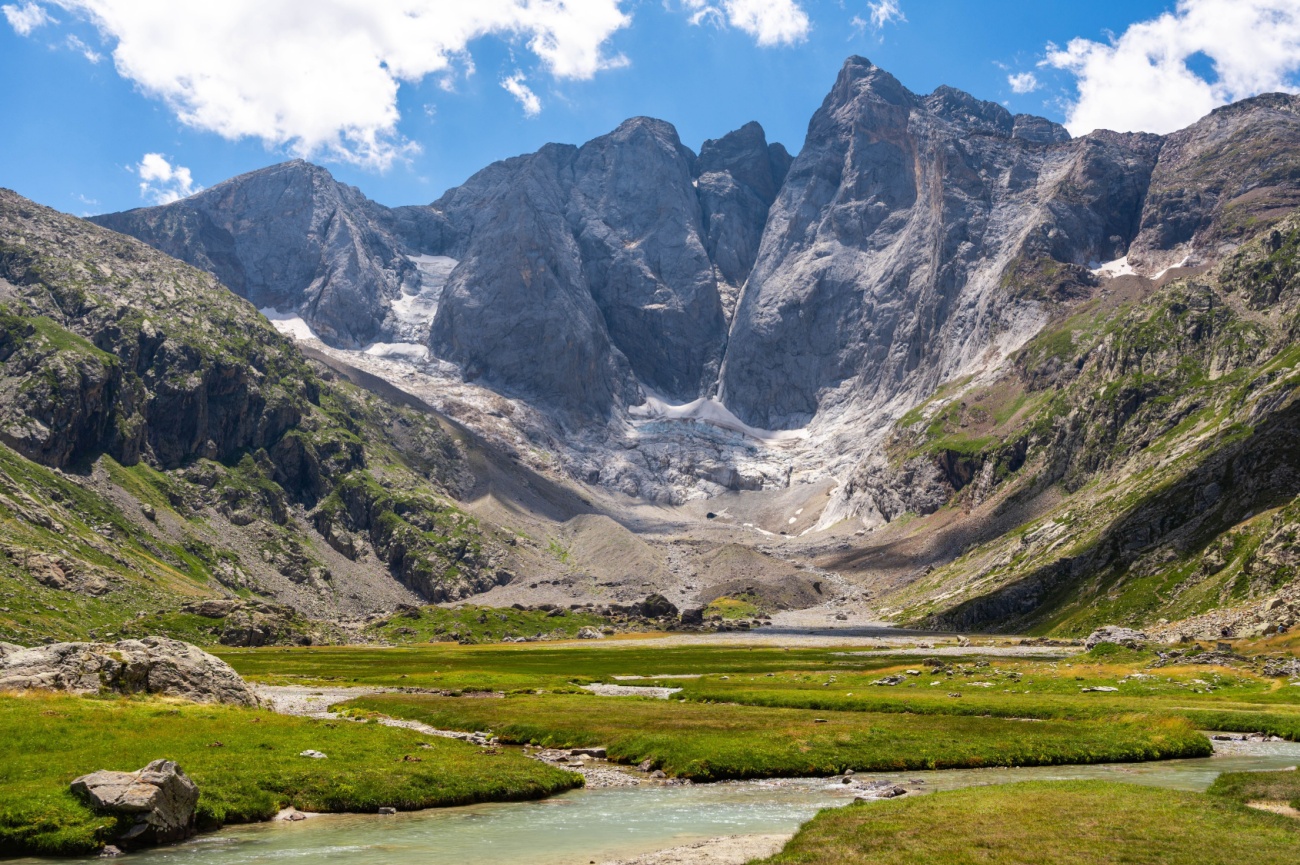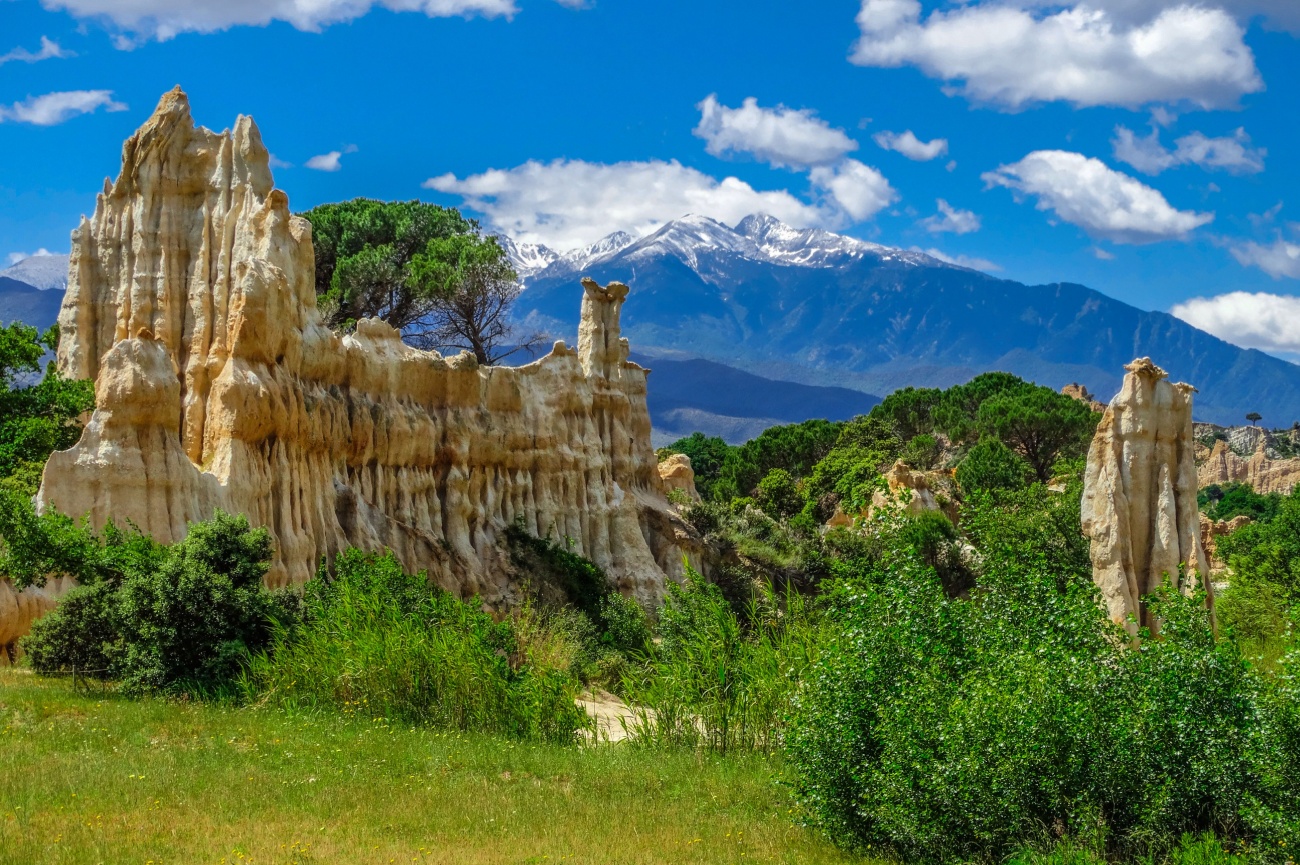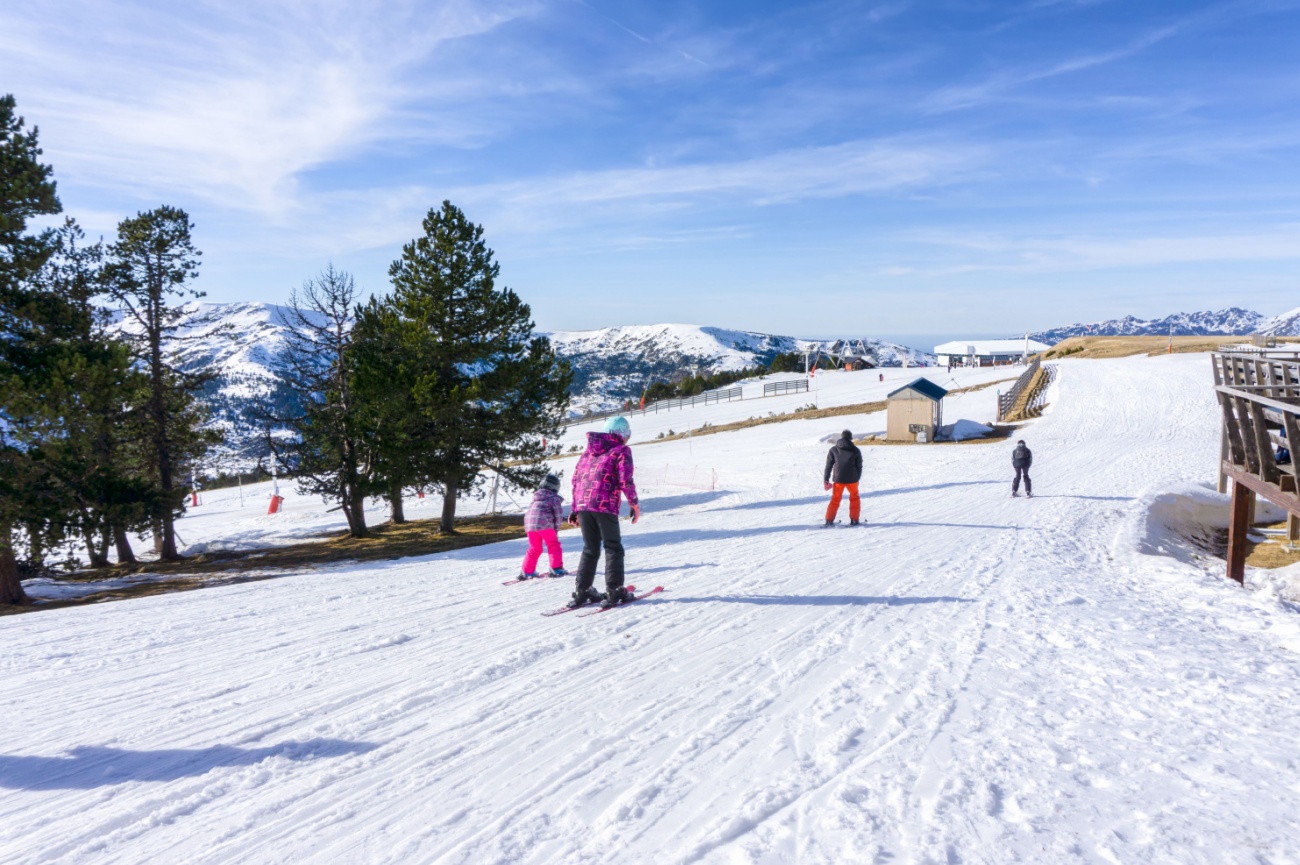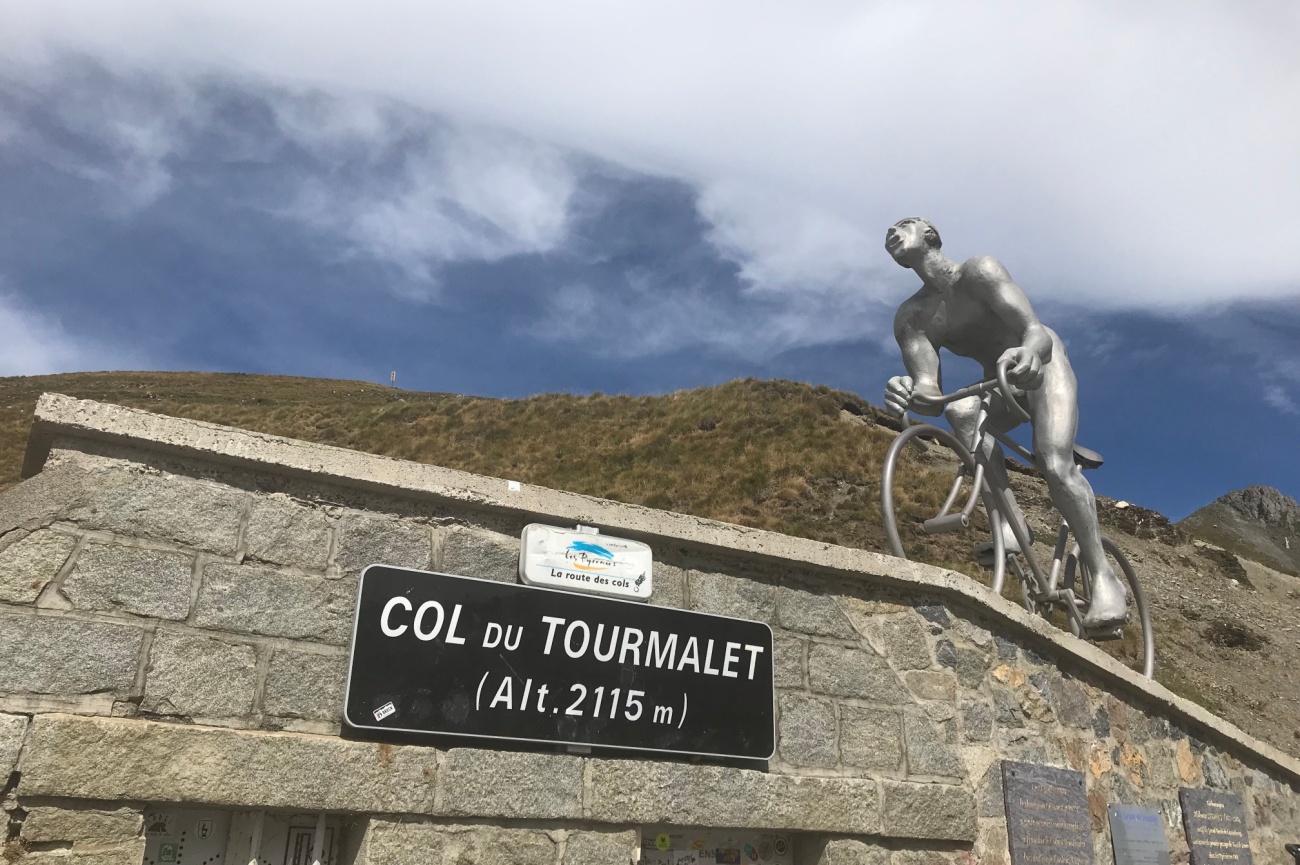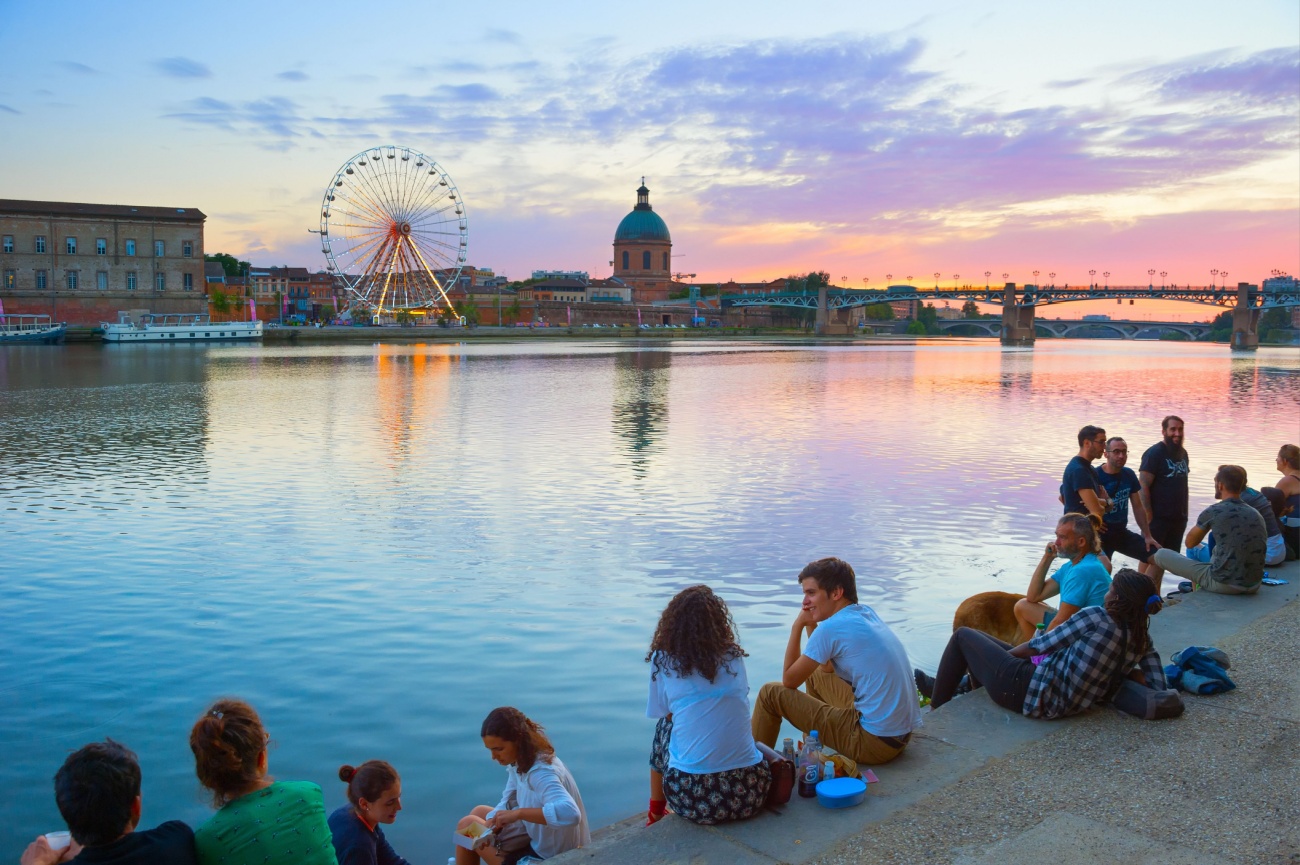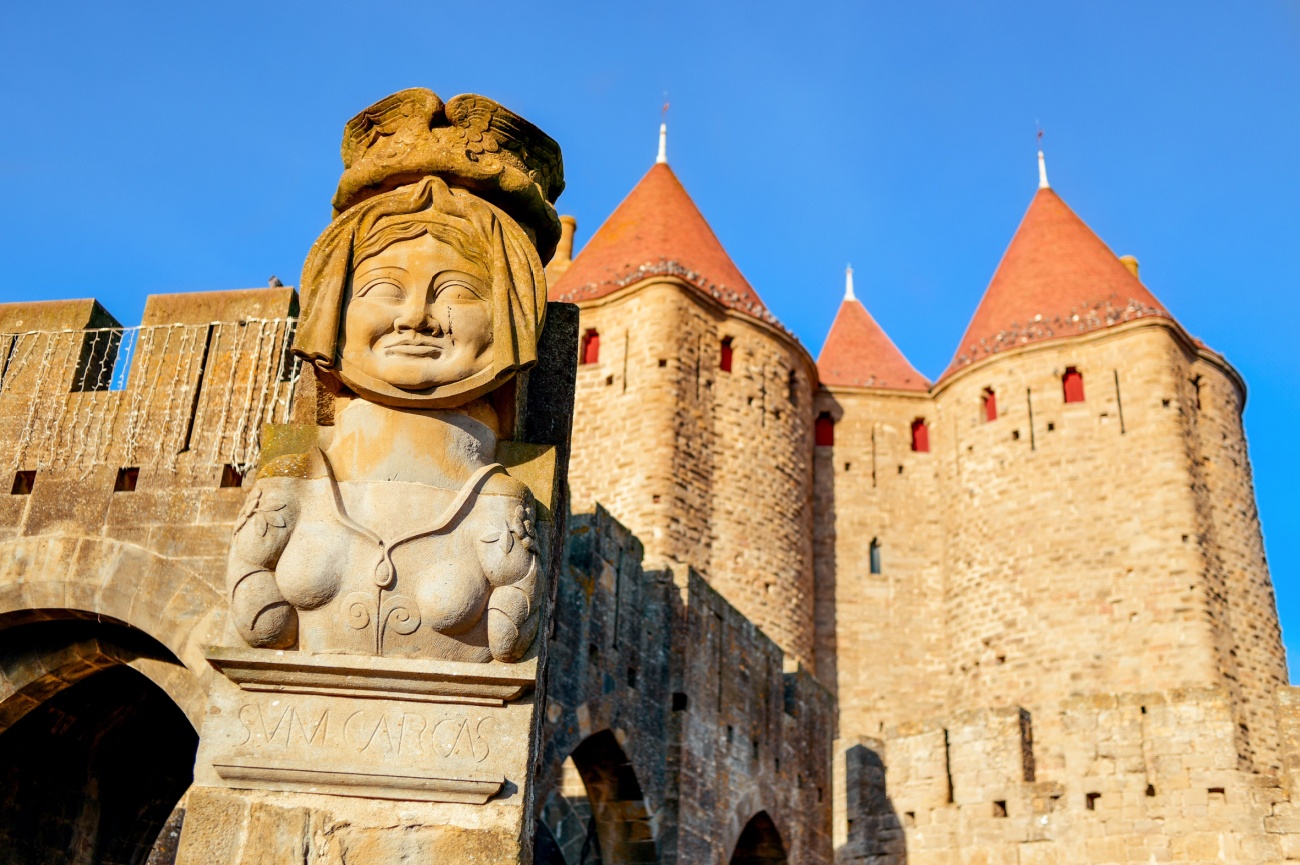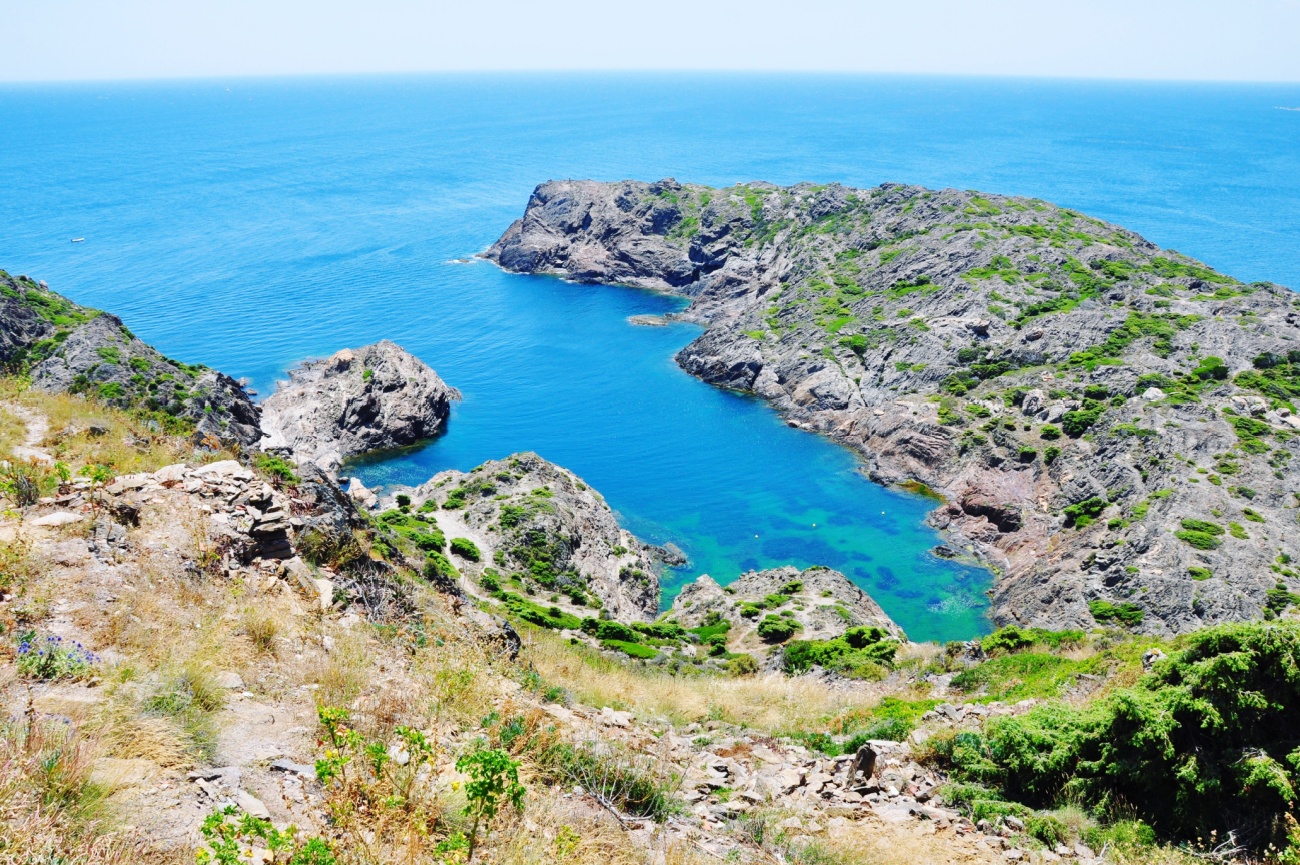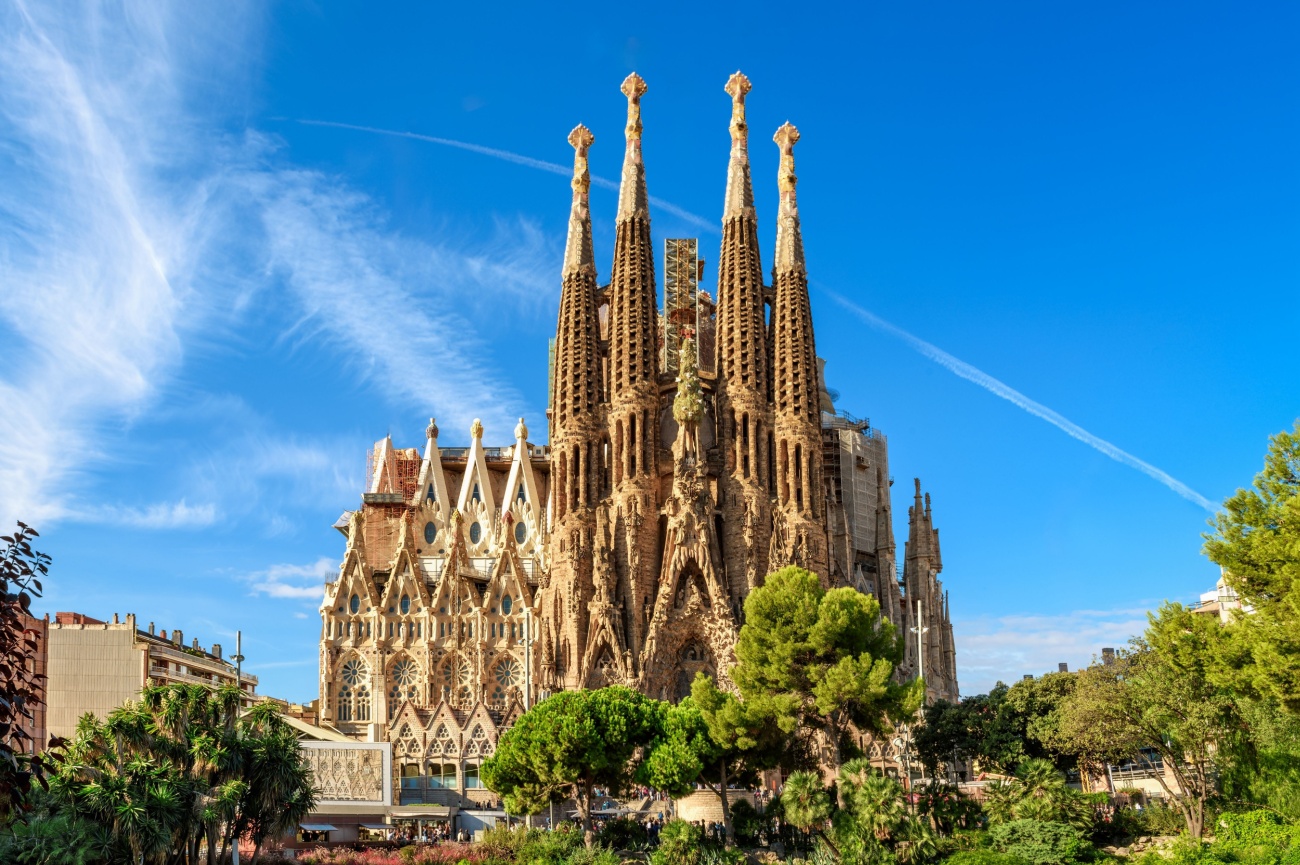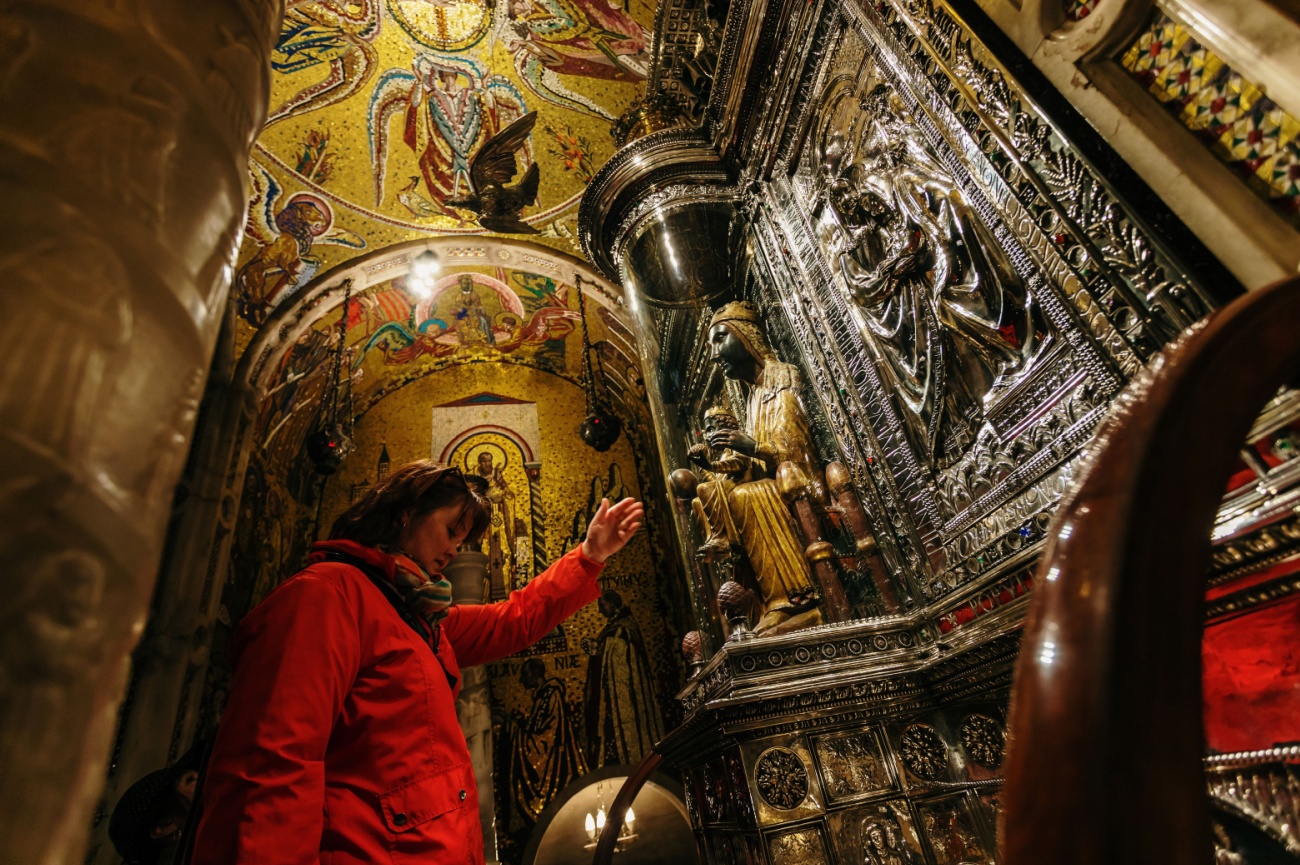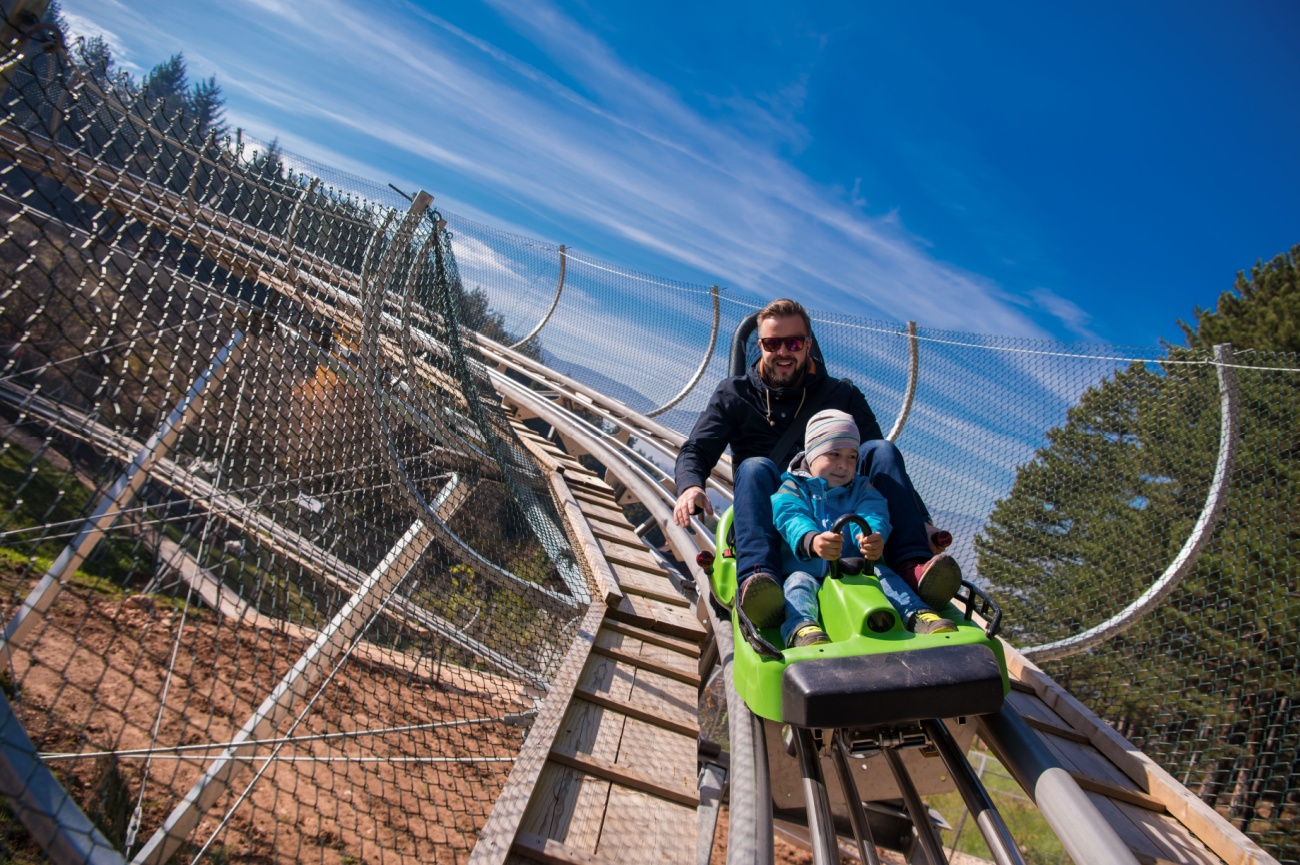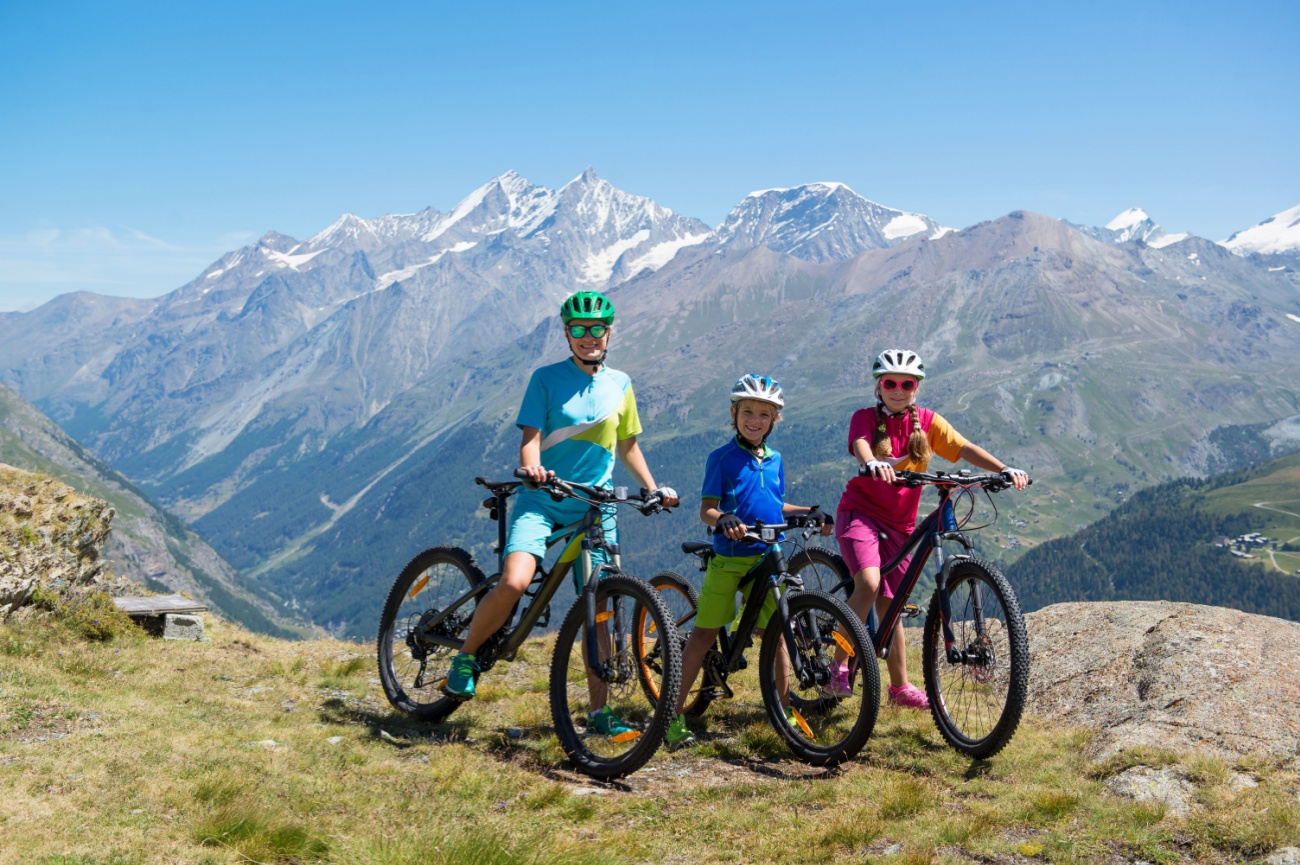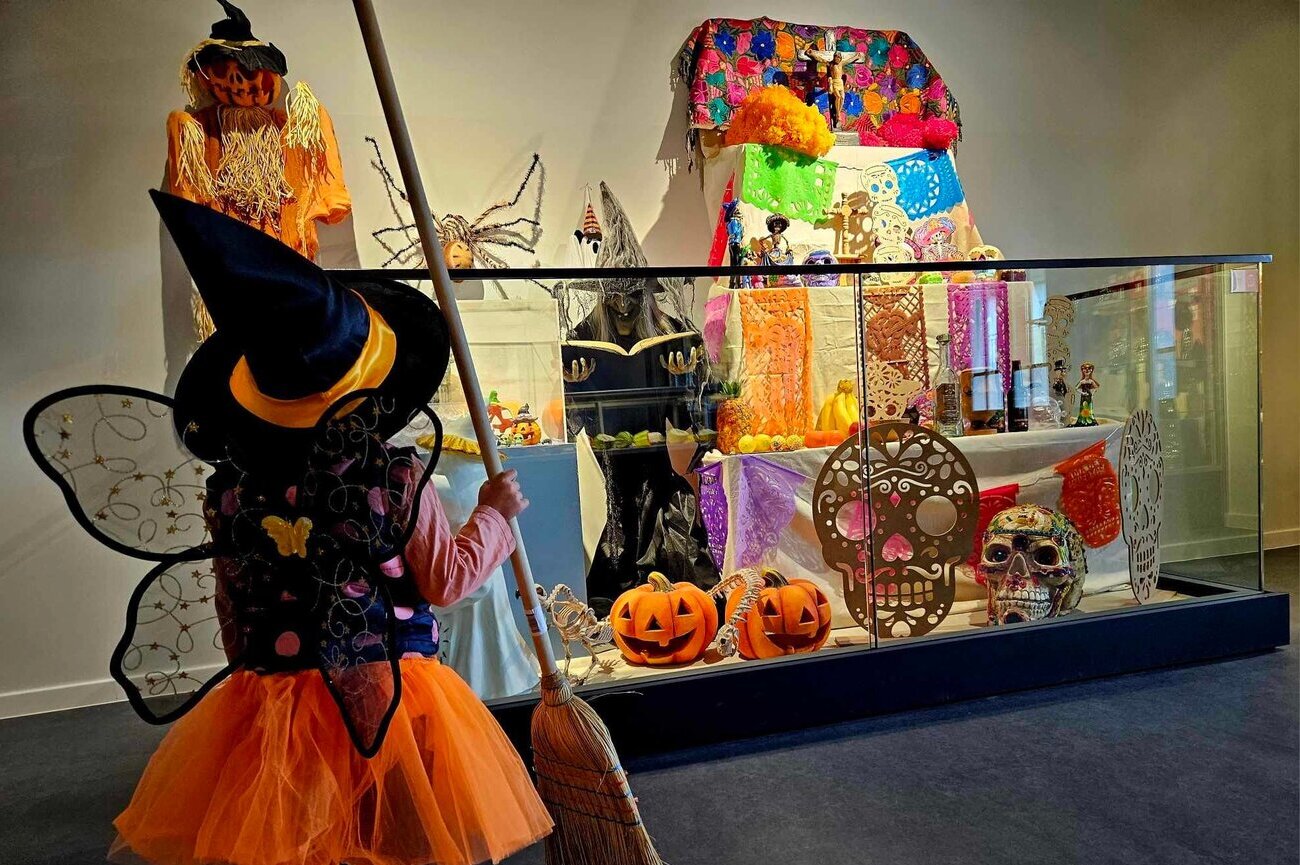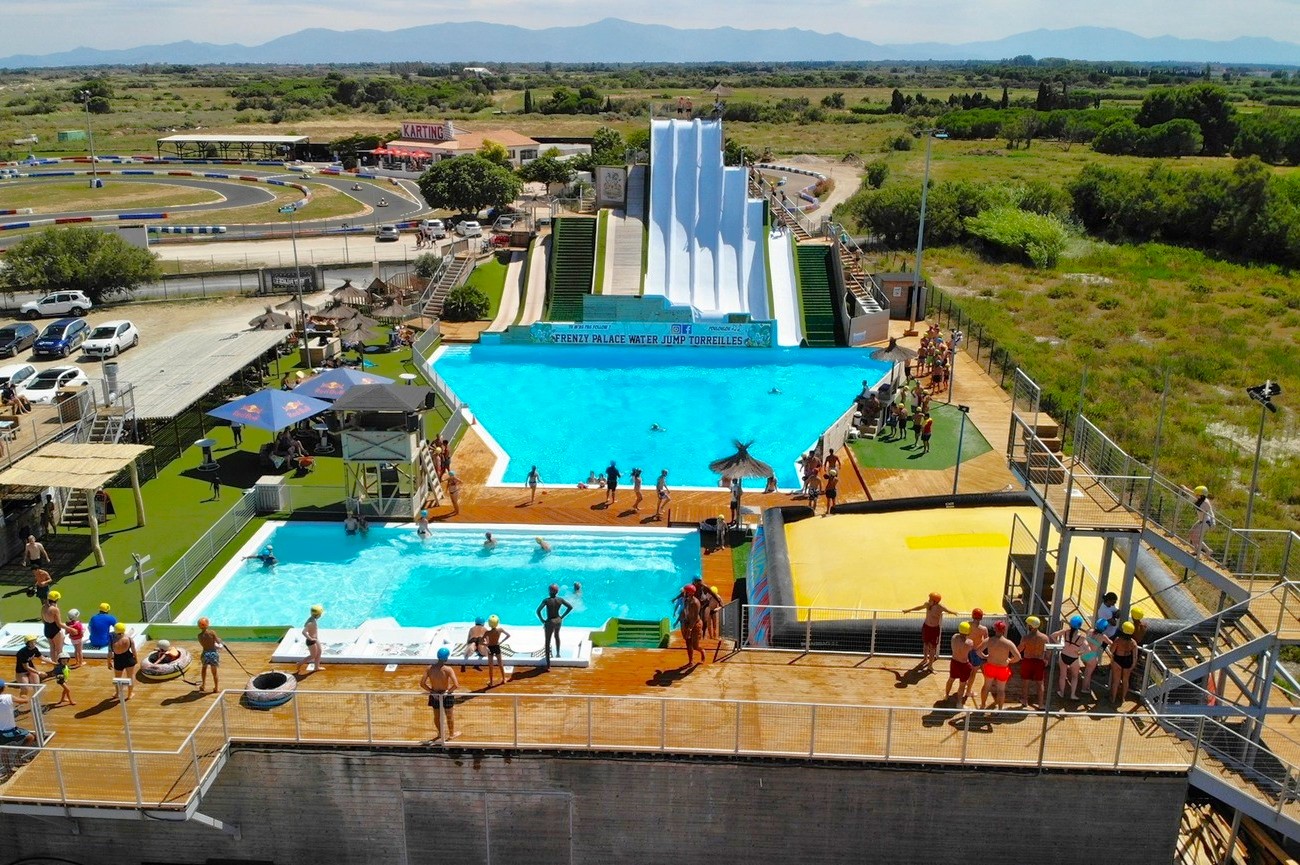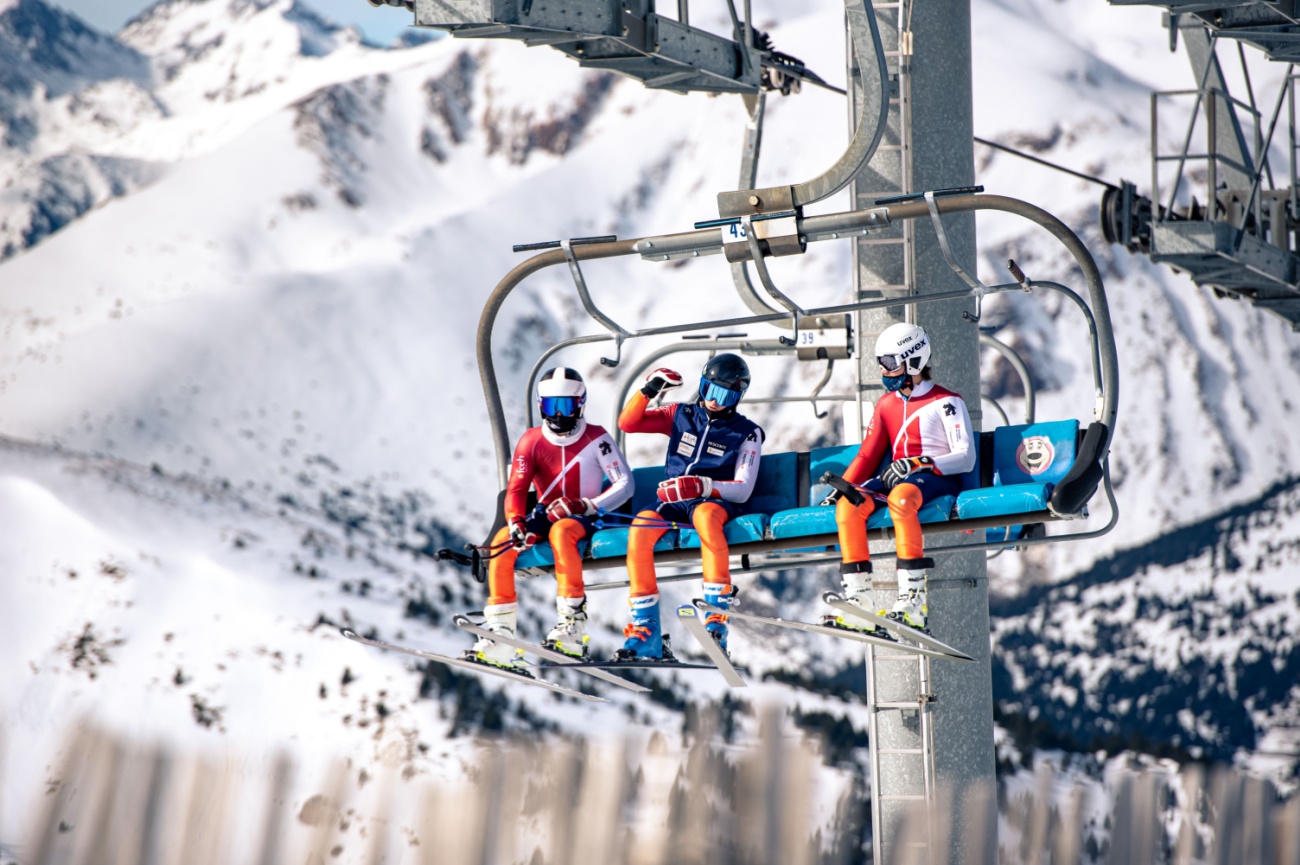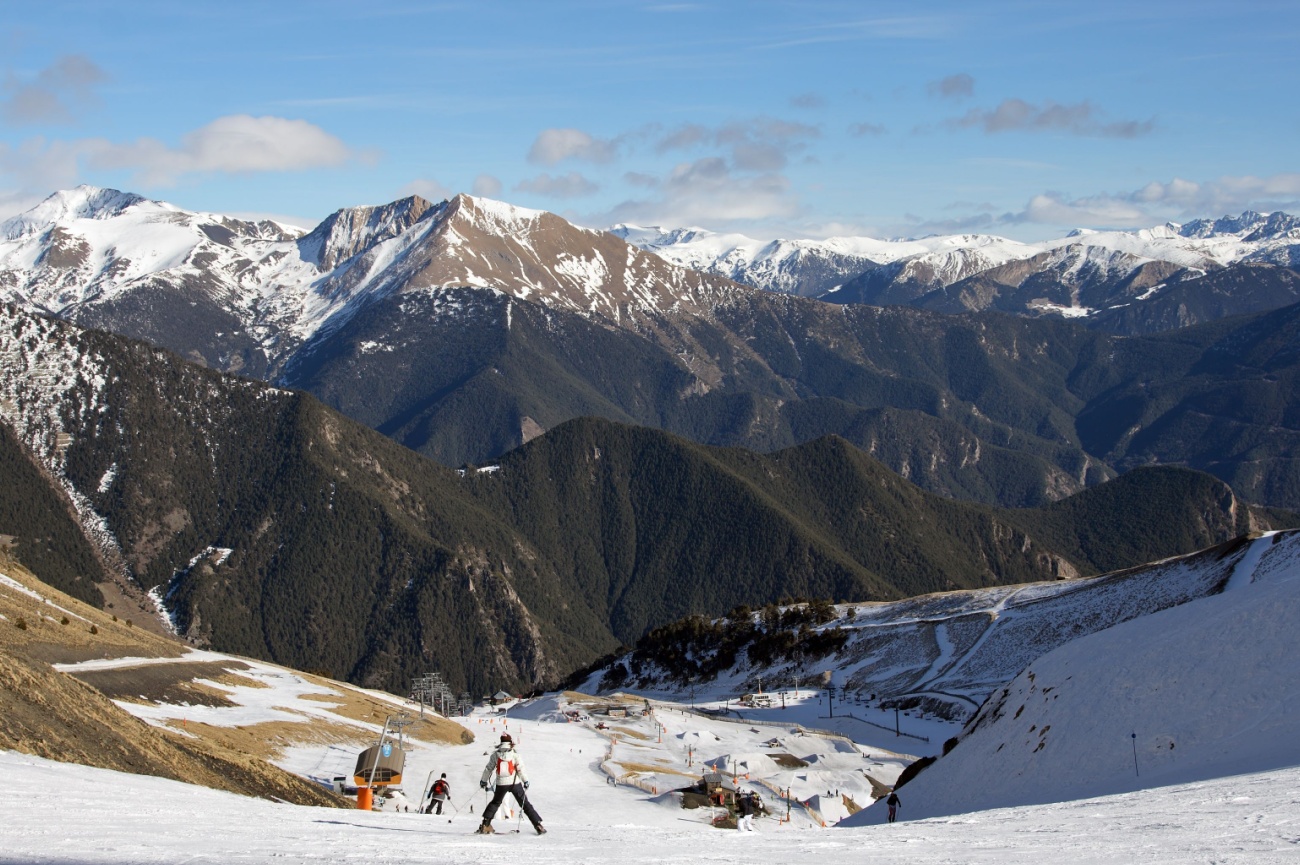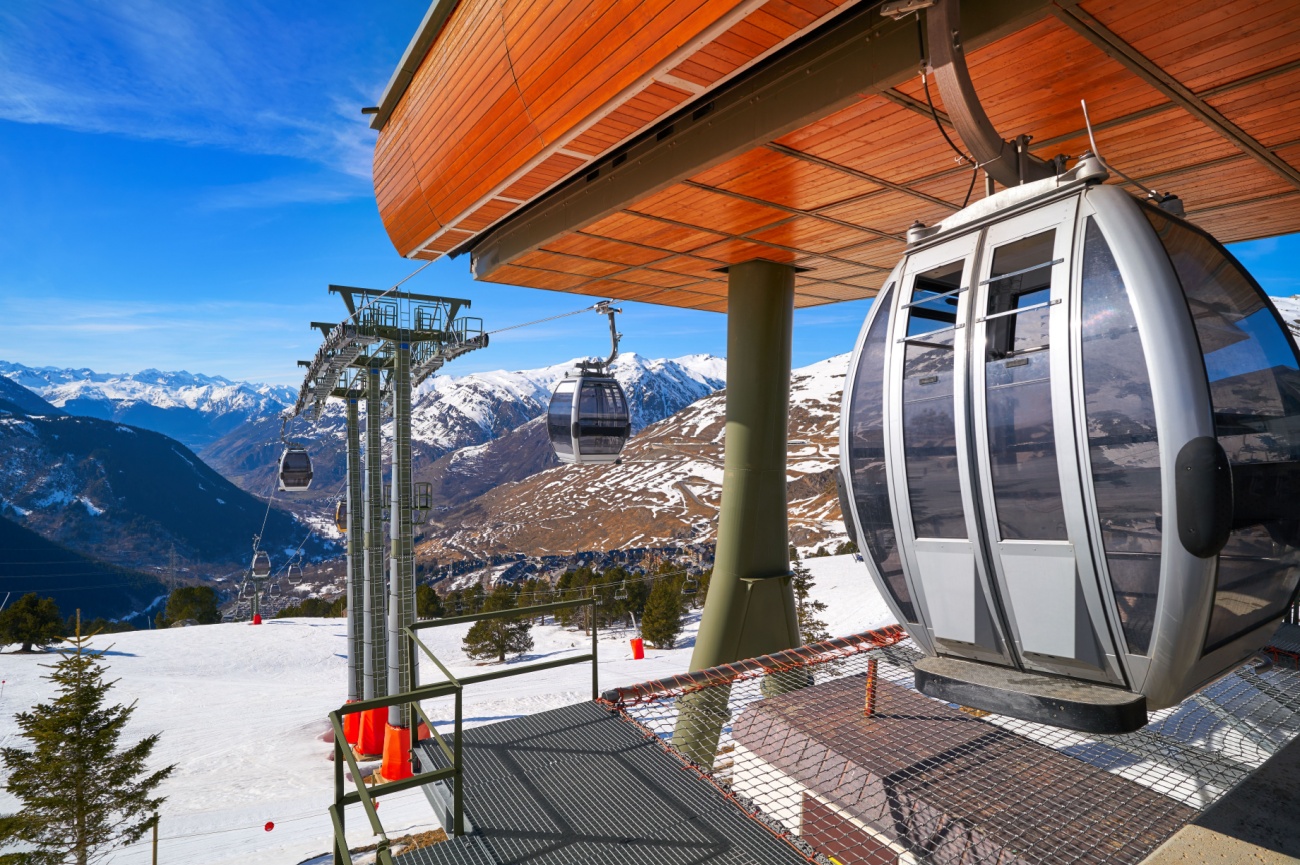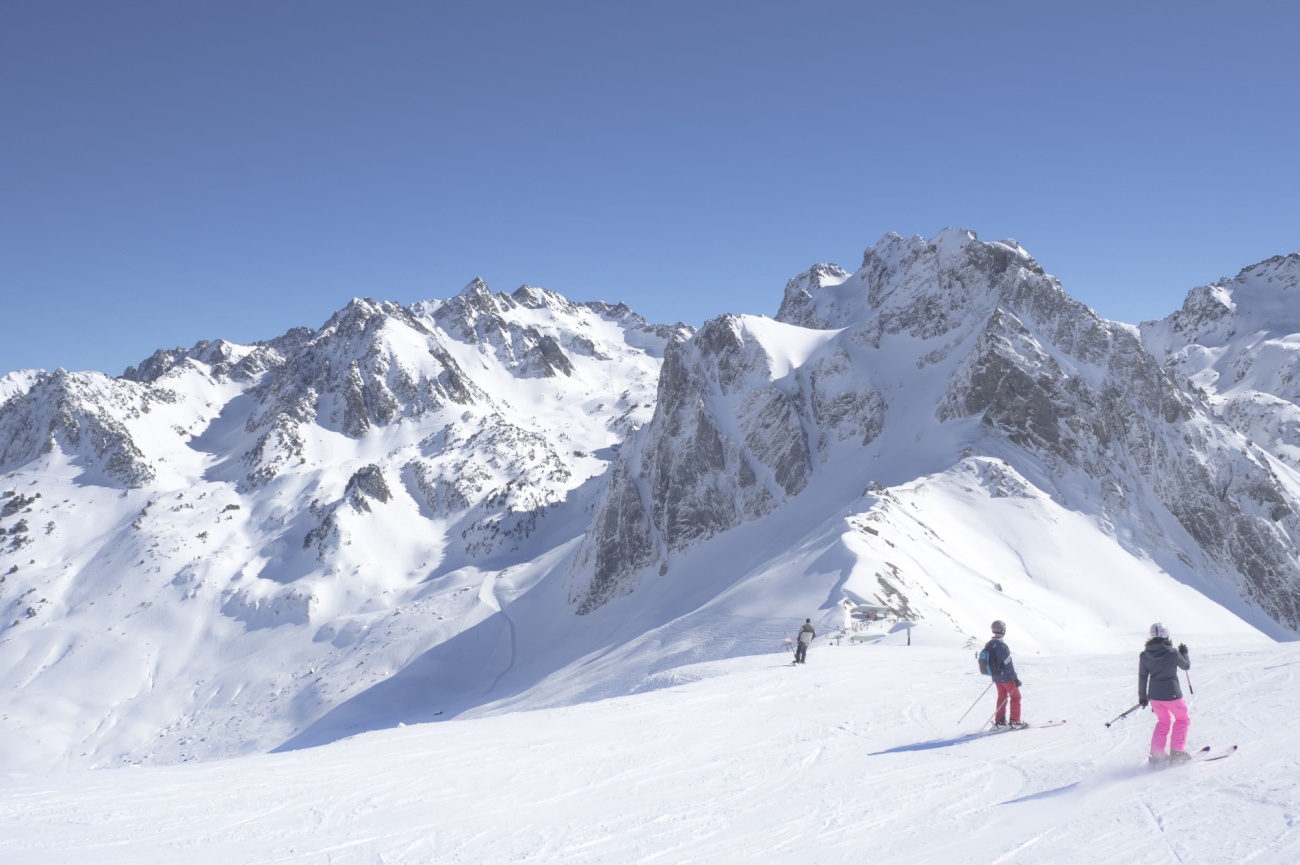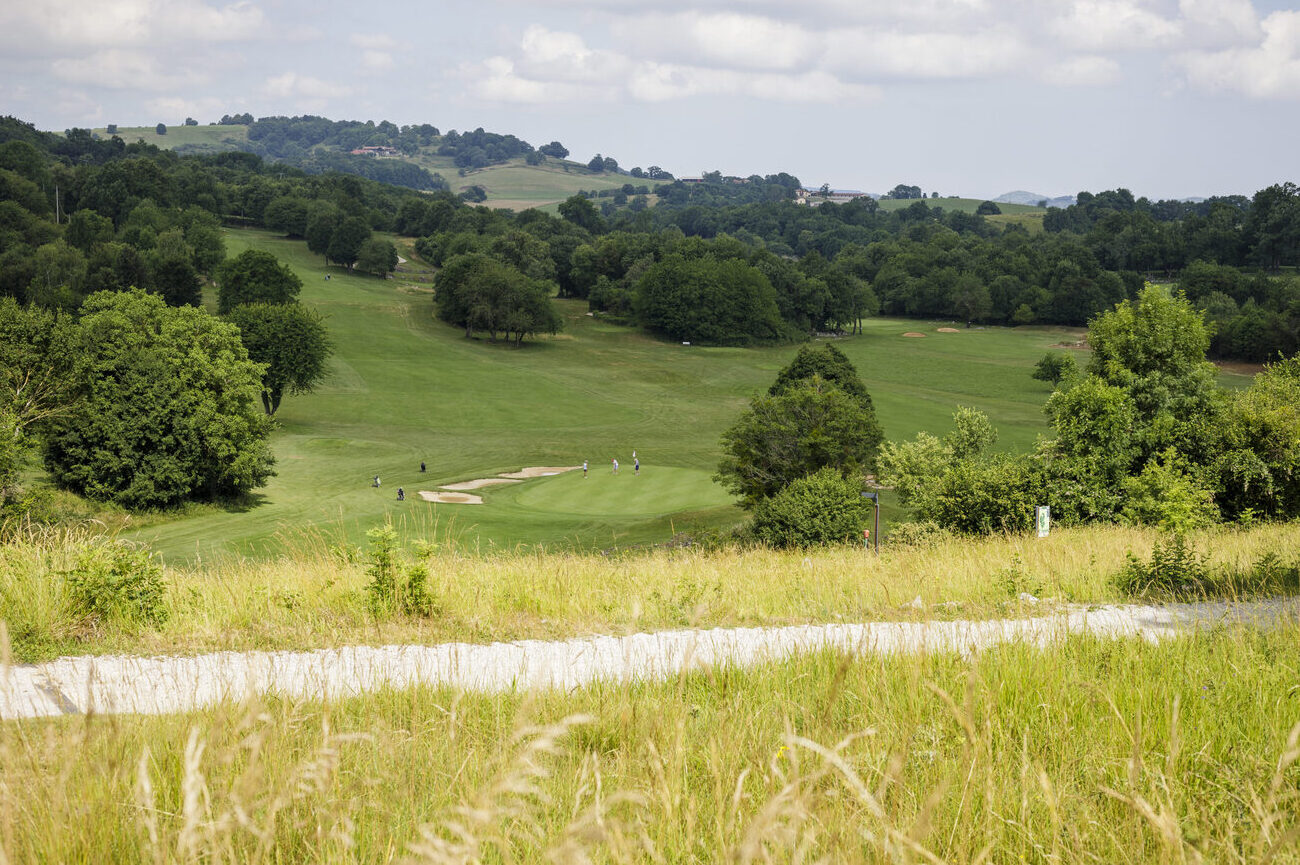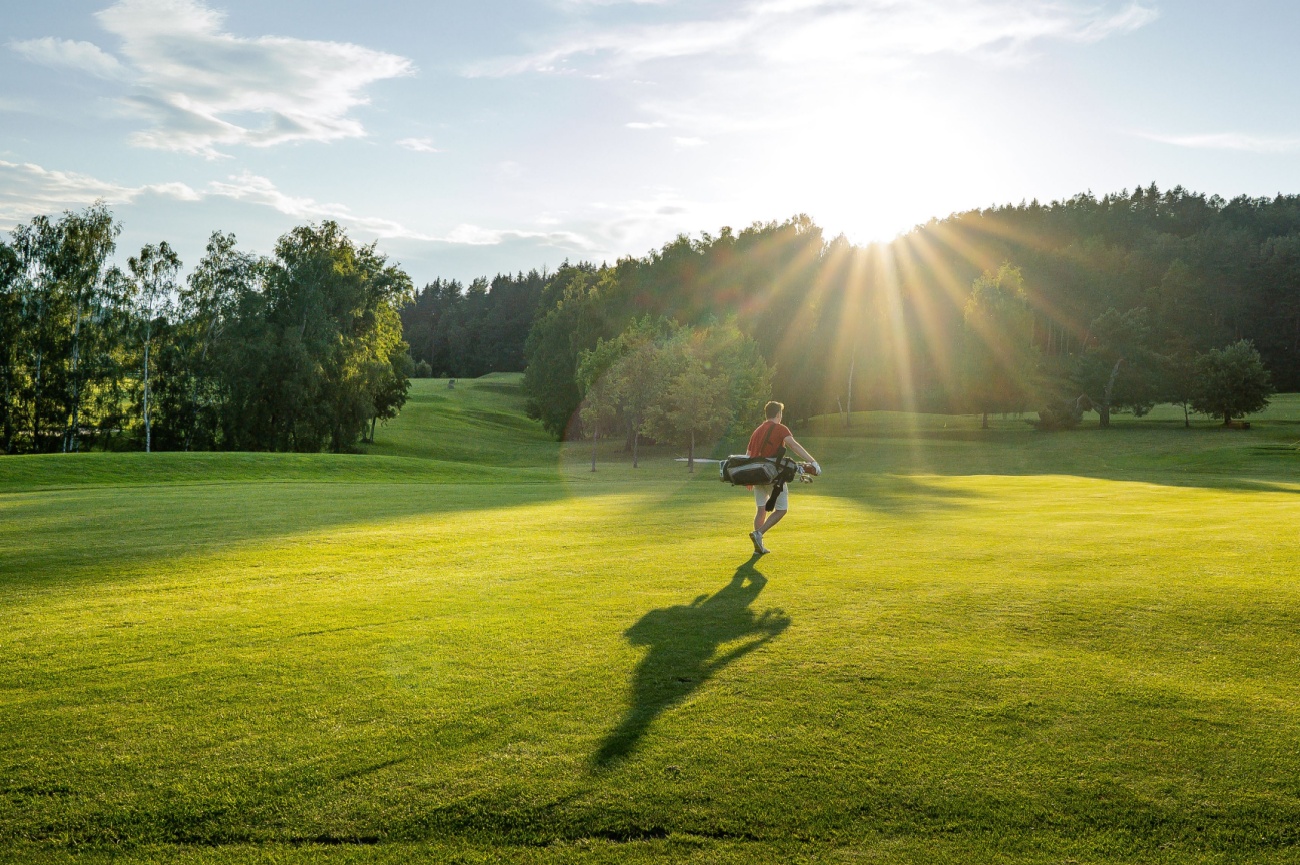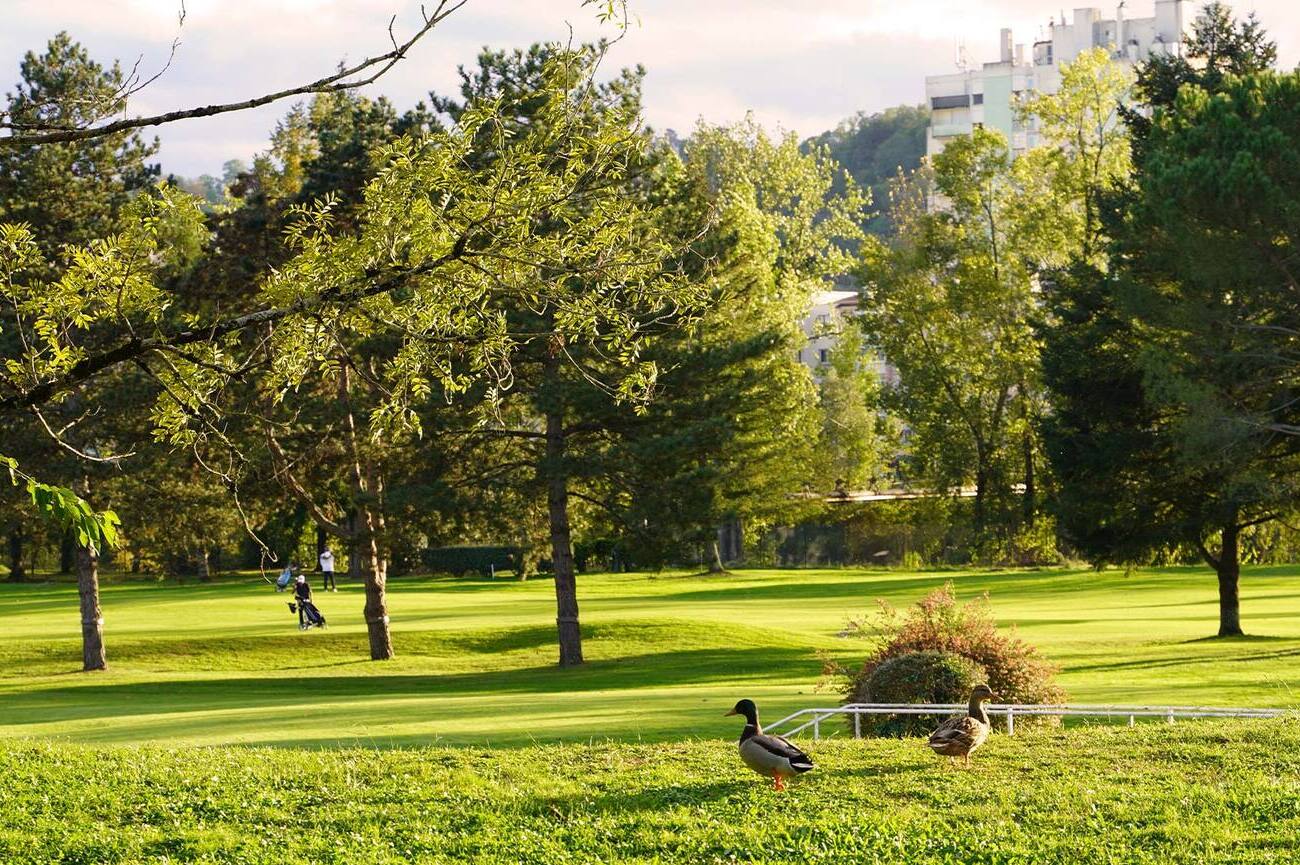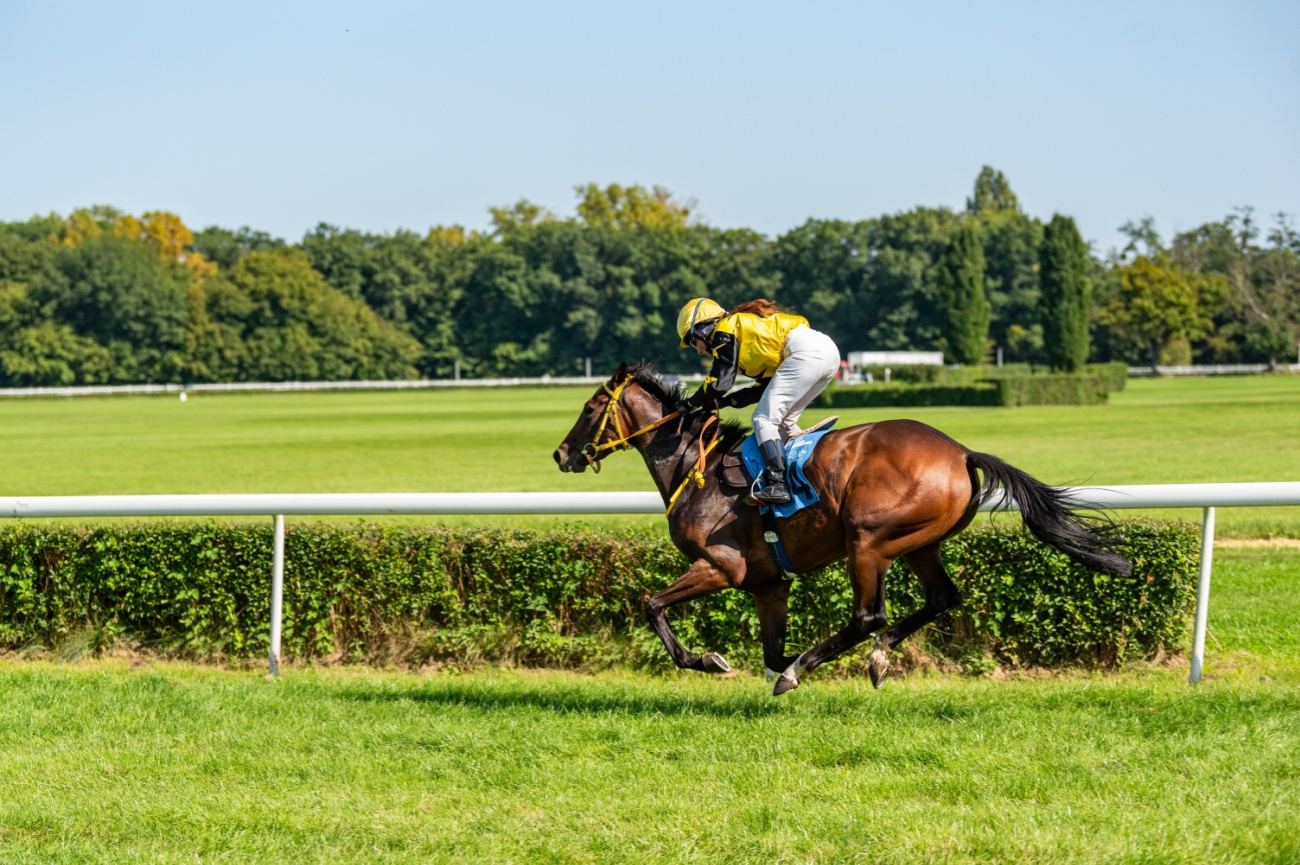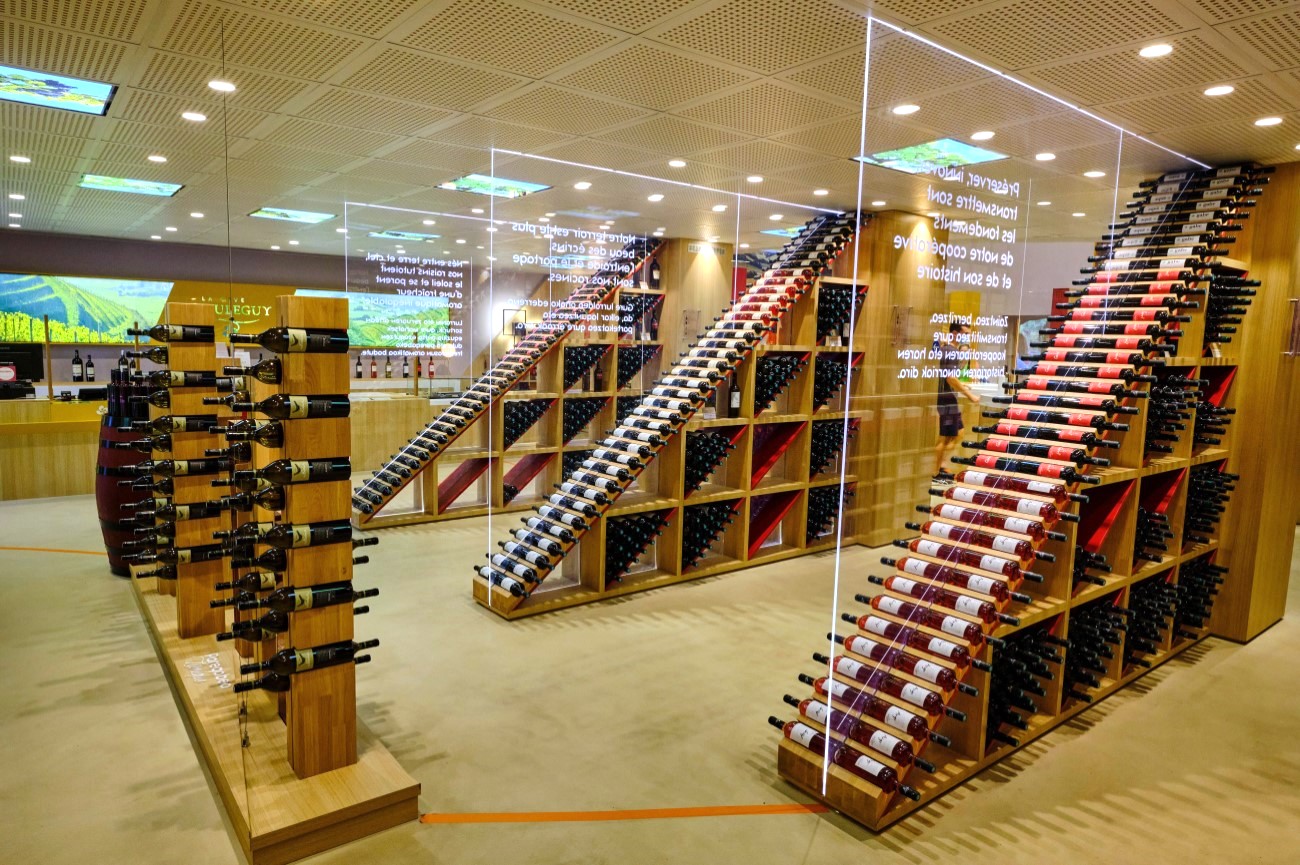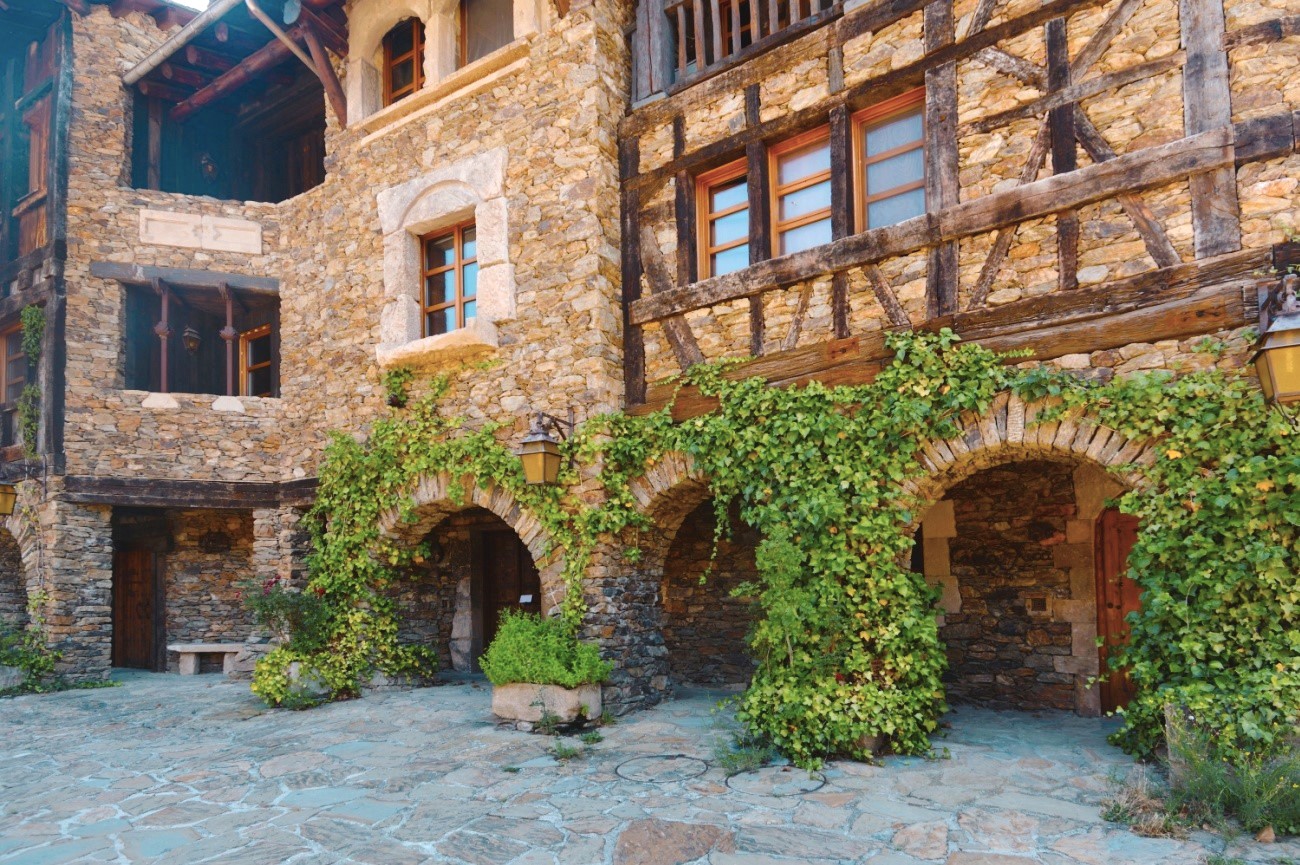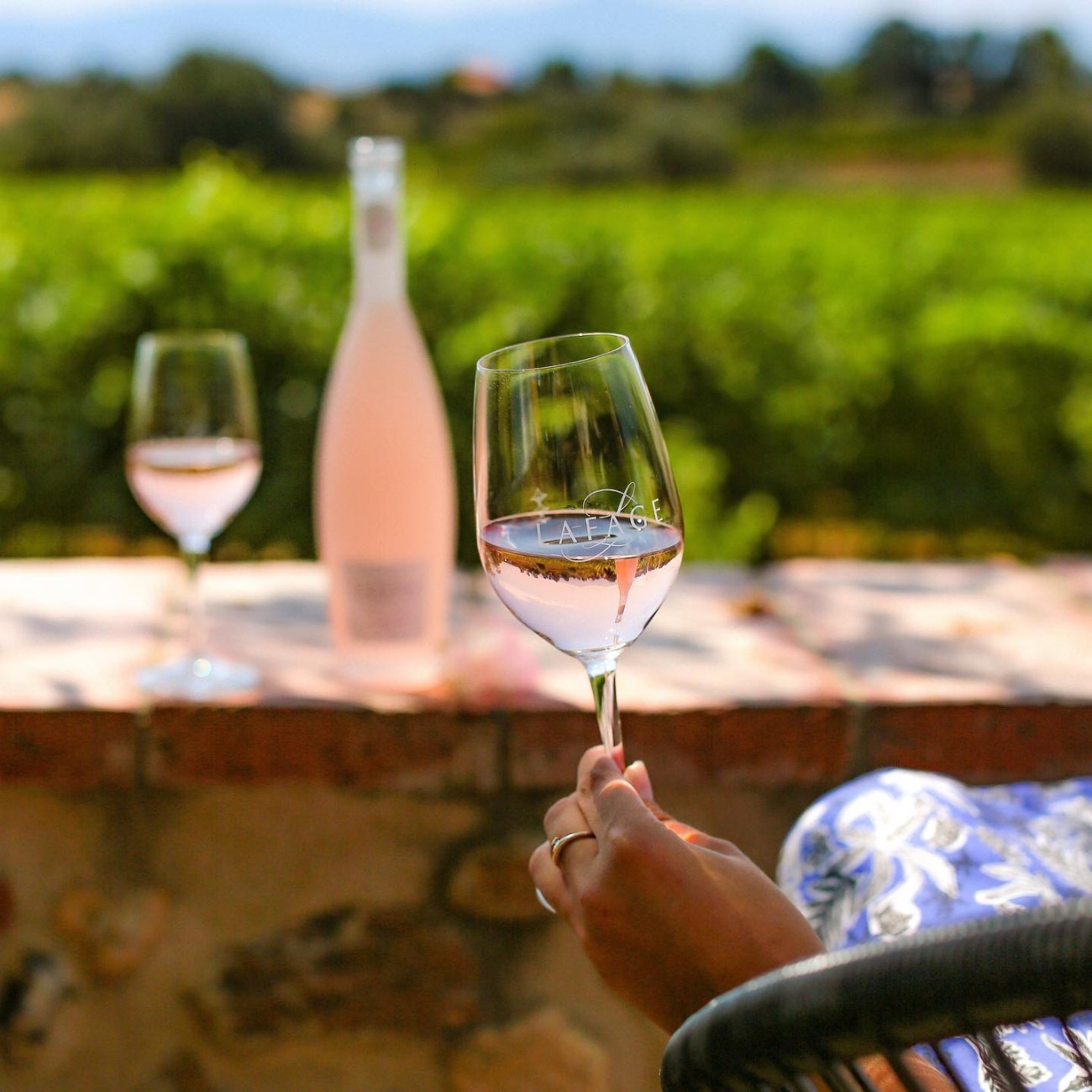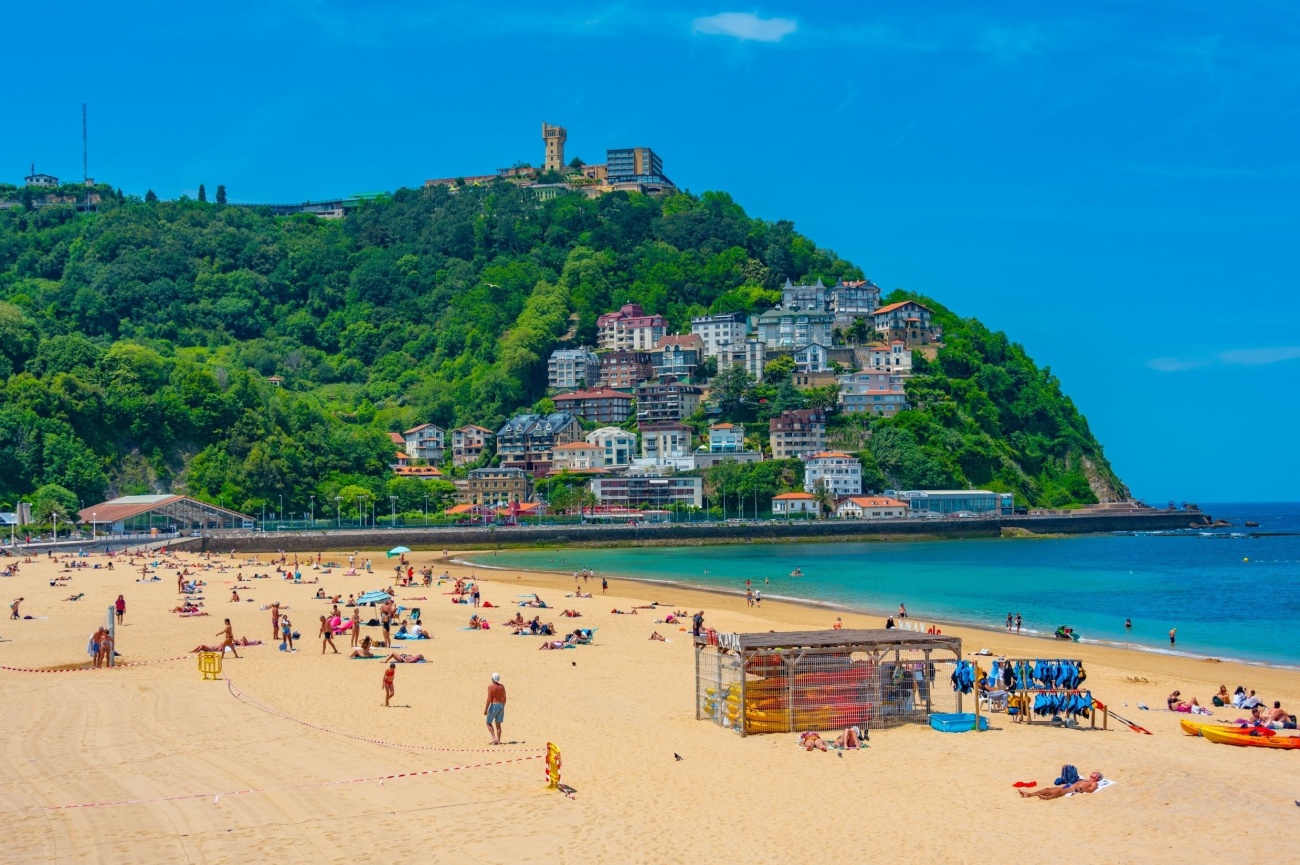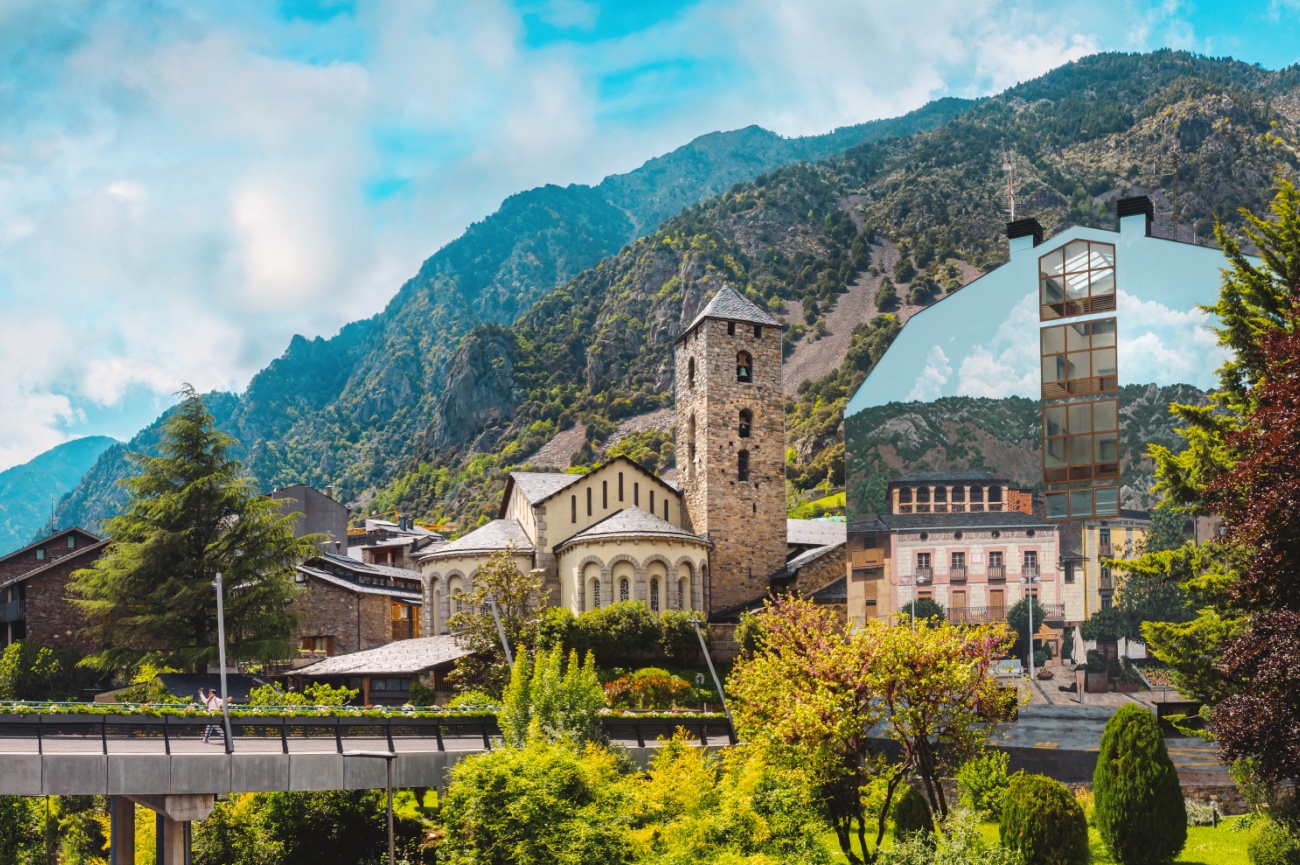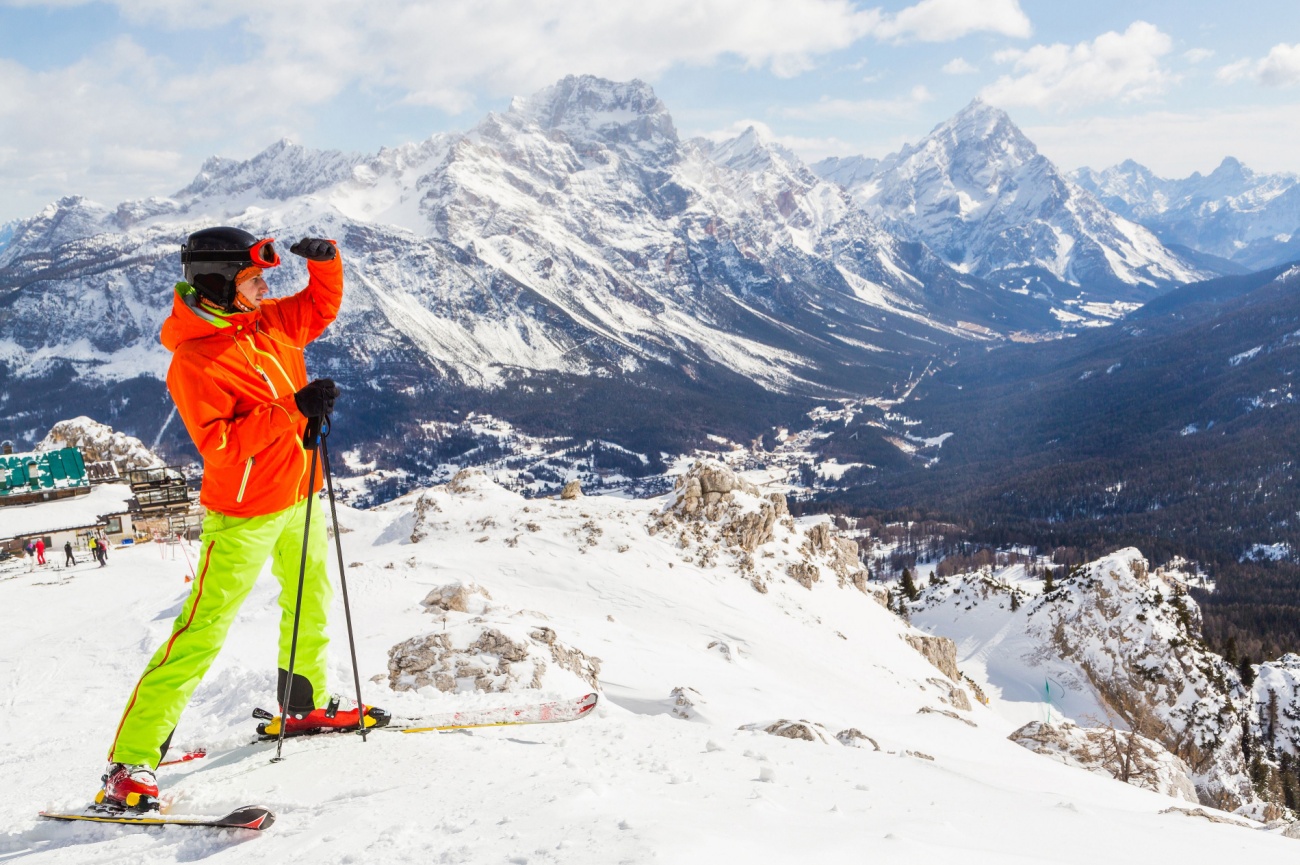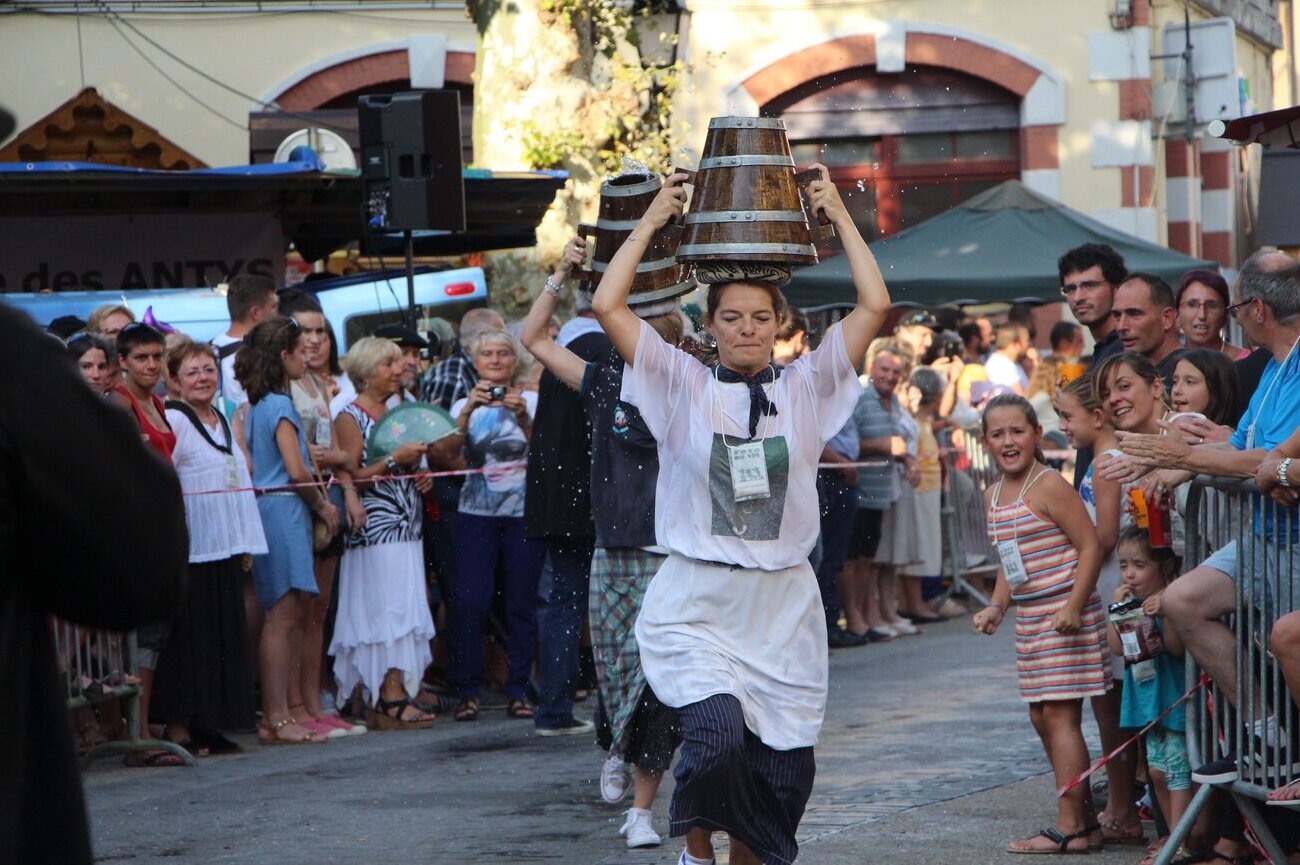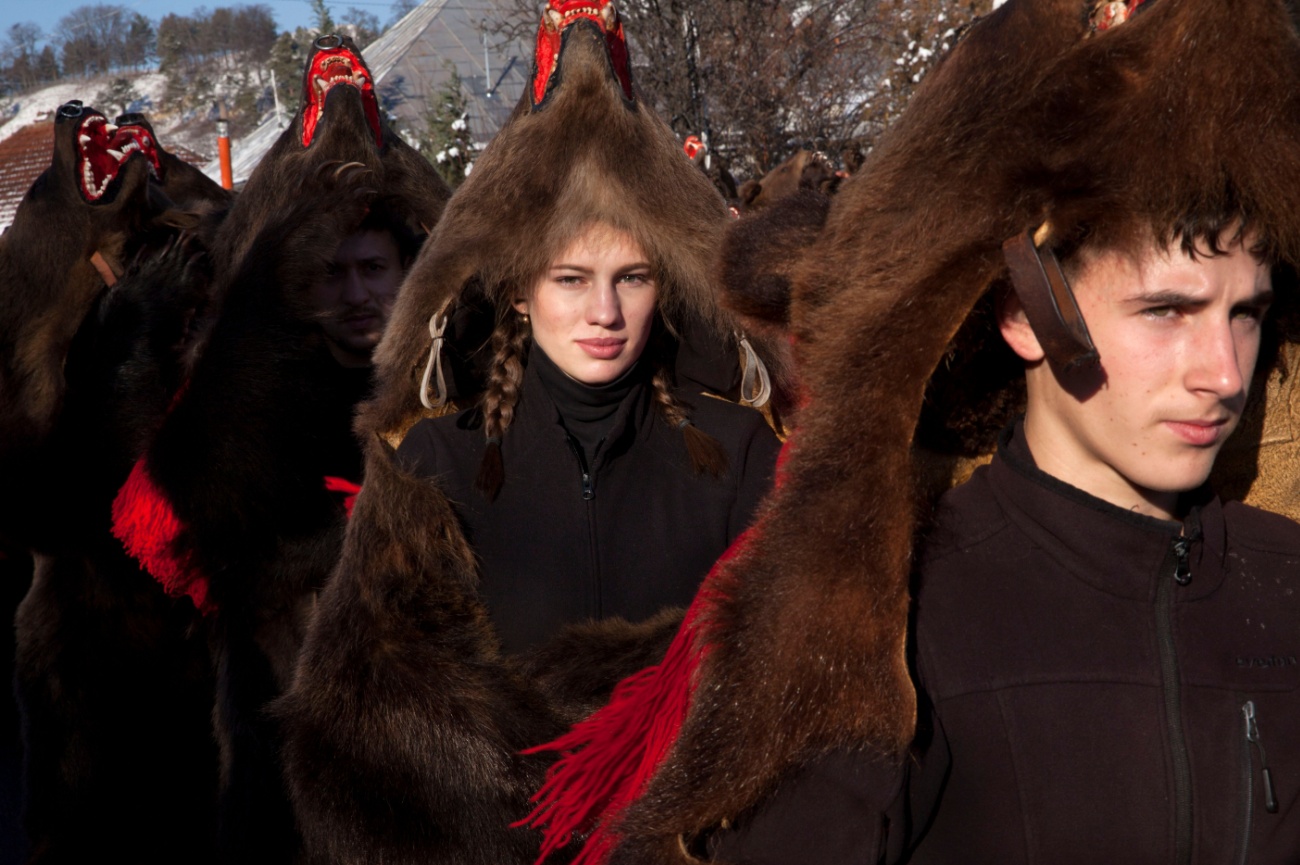Pyrenees Road Trip: From San Sebastian to Perpignan
Sandwiched between Spain and France, the Pyrenees mountain range is a stunning stretch of snow-capped peaks, flower strewn meadows, high alpine lakes, and rich cultural tradition that’s just waiting to be explored.
You’ll start this road trip through the Pyrenees in the foodie mecca of San Sebastian, Spain. Skirt the Bay of Biscay up to Bayonne, the capital of the French Basque Country, before diving deeper into the interior towards the mountains.
Spend a day exploring the French Pyrenees towns of Pau and Lourdes, a renowned Catholic pilgrimage site, before discovering one of Europe’s smallest countries, Andorra. You’ll end it all at the Mediterranean Sea in the French Catalonian city of Perpignan.
This is the perfect road trip itinerary through the Pyrenees!
Route Map
Day 1: San Sebastian & Bayonne

Morning: San Sebastián
Kick off the first morning of your Pyrenees road trip in San Sebastián, the beating heart of Spain’s Basque Country and the densest concentration of Michelin restaurants in the world. You’ll start off exploring the Parte Vieja or Old Town.
- Museo San Telmo: Begin your walking tour at the Museo San Telmo. Opened in 1902, this is the oldest museum in the Basque Country and is dedicated to the history of the region. You’ll find everything from ancient artifacts to contemporary artwork, all housed in a 16th-century convent.
- Iglesia de San Vicente: Dating back to the 12th century, the Iglesia de San Vicente is one of the oldest churches in San Sebastian. Admire its twin towers before heading inside to see beautiful stained glass windows, a gold altarpiece, and soaring ceilings.
- Mercado de la Bretxa: Everything in San Sebastian revolves around Basque cuisine and that’s exactly what you’ll find at the Mercado de la Bretxa. Step inside to peruse the food stalls, from butchers to local produce providers. You’ll also be able to sample a pintxo or two, the Basque version of tapas.
- Plaza de la Constitución: First used as a bullring, Plaza de la Constitucion has been the center of San Sebastian since the early-1800s. Take your time, admiring the colorful and traditional Basque architecture and popping into one of the bars that line the square for a glass of wine or cafe con leche.
- Basilica de Santa Maria del Coro: Perhaps the most beautiful church in San Sebastian, the Basilica de Santa Maria del Coro combines Neo-Classical, Gothic, and Plateresque architecture to create its elaborate facade. While the exterior is stunning, head inside to see the altarpiece, dedicated to the city’s patron saint, Our Lady of the Choir.
- Monte Urgell: End your morning in San Sebastian by heading up to Monte Urgell. There are several paths to reach the top, but all offer panoramic views of the city and sea. Standing watch over the city is the golden statue of Christ, created by Federico Collaut, and the Castillo de la Mota. Soak up the scenery before heading back down into the city to grab lunch.
Grab lunch along Calle Fermin Calbeton or Calle Mayor, San Sebastian’s most famous pintxo streets, before heading off to your next stop, Bayonne.
Day 1, morning - San Sebastian Tour Map
Afternoon: Bayonne
Make the 50 minute drive to Bayonne next. The capital of French Basque Country, you’ll be spending the night here before making your way into the Pyrenees tomorrow.
- Musée Basque: The Musée Basque is a celebration of all things French Basque Country, tucked away in the Maison Dagourette. The museum now houses over 85,000 artifacts, artworks, photographs, and objects from the Basque region and was once the home of a wealthy port merchant.
- Jardin Botanique Bayonne: Sprawling 3,200 square feet, the Jardin Botanique Bayonne is full of botanical splendor, hidden near the Bayonne Cathedrale. With a strong influence from Japanese gardens, you’ll discover a bamboo grove, aromatic Asian plants, a garden dedicated solely to red blooms, and more.
- Cathédrale Sainte-Marie de Bayonne: The Cathedrale Sainte-Marie de Bayonne is one of the most important places of worship in the French Basque Country. Built over hundreds of years, beginning in the 13th century and finally ending in the 17th century, this UNESCO World Heritage Site holds the Shrine of Saint Leo and a pristine, 13th century cloister. Step inside to see the soaring nave and choir, an impressive organ, bell system, stained glass windows, and more.
- Carreau des Halles: A 19th century gathering place that now houses 20 different shops and small restaurants, the Carreau des Halles is the heartbeat of Bayonne. Sample Basque bites as you peruse local produce, cheese, and more.
- Eglise Saint-Andre: Built in the Neo-Gothic style, Eglise Saint-Andre sits perched on the edge of the Adour River. While more humble than the Bayonne Cathedral, its towers and rose window are still well worth admiring.
Day 1, afternoon - Bayonne Tour Map
Where to Eat in Bayonne
- Goxoki: Step aside San Sebastian, Bayonne has its own fine-dining ode to Basque cuisine. Tucked in the Petit Bayonne neighborhood, Goxoki highlights seasonal produce and wild game with delicious set menus in three, five, or six courses. There’s even a children’s menu!
- La Grange: Tuck into classic French bistro fare with a Basque twist at La Grange. Just some of the dishes you can look forward to include the perfect egg, beef cheek bourguignon, and haddock tartare. While the dishes are wonderful, the true highlight of La Grange is its spacious terrace which overlooks the Nive River.
Where to Stay in Bayonne
- Villa La Renaissance (4*): Situated south of the city center in Bayonne, the Villa La Renaissance is a four star boutique property, housed in an early 20th century home. Guests will find cozy yet spacious rooms, equipped with soaking tubs and amenities like daily, continental breakfast and a pool.
- Hotel Villa KOEGUI Bayonne (4-star): A four-star property in the heart of the French Basque Country, Bayonne, Hotel Villa KOEGUI is an ultra-modern accommodation option with plush rooms designed by Jean Philippe Nuel. Amenities include daily continental breakfast, a fitness center, sauna, room service, concierge, work space, and more.
Day 2: Pau & Lourdes

Morning: Pau
Make the 1 hour and 20 minute drive from Bayonne to Pau, getting your first glimpses of the Pyrenees. Once the capital of the Bearn region, Pau is known for its stunning mountain views, rich history, and delicious Bearnaise cuisine.
- National Museum and the Chateau de Pau: Start your tour of Pau at the city’s most important monument, the Chateau de Pau and National Museum. Likely built sometime in the 10th century, the castle has seen countless iterations over the centuries. King Henri IV was born within these castle walls and it was occupied by members of the royal family until the fall of the Second Empire. Take a tour to see magnificently preserved furniture and other artifacts and to admire its masterful architecture. Fifty four acres of lush forest surround the castle if you’d like to go for a stroll around the grounds.
- Boulevard des Pyrenees: Get panoramic views of the Pyrenees mountains from Pau’s elevated Boulevard des Pyrenees. Stretching almost 2 km through the city, this walkway offers multiple places to stop for a glass of wine and drink in the scenery.
- Funicular: Because Pau is divided into two levels due to its rocky geography, the city has both an upper and lower section of town. To remedy the issue of having to take dozens of stairs from one tier of the city to the other, Pau installed a free funicular that connects them and also happens to offer beautiful views along the way.
- Musee des Beaux-Arts: Lovers of art can’t miss Pau’s Musee des Beaux-Arts which highlights a collection of artwork from the 15th to 20th centuries. The museum's centerpiece is a painting by Degas, although there are sculptures, paintings, and other works of art from across the European continent.
- Palais Beaumont: A winter palace turned convention center, the Palais Beaumont sits overlooking a sprawling English garden of the same name. Built in 1895, this huge gathering space was designed in the Belle-Epoque style but was refurbished following WWII. The park and English gardens are well worth a stroll with views of the mountains in the distance.
Day 2, morning - Pau Tour Map
Afternoon: Lourdes
Make the 55 minute drive from Pau to Lourdes in the afternoon, one of the most famous places of pilgrimage for Catholics in the world. Tucked in the shadow of the Pyrenees, Lourdes is known for its healing waters and frequent miracles. Spend the rest of your day exploring the city’s historic and religious sites before spending the night either back in Pau or in Lourdes.
You’ll start your tour at the Sanctuary of Our Lady of Lourdes, before continuing on in the center of town.
- Basilica of the Immaculate Conception: Start your tour of majestic Lourdes at the Basilica of the Immaculate Conception, the oldest of the three. Also known as the Upper Basilica, this Neo-Gothic church was built between 1862 and 1871 above the Grotto of Massabielle, where the Virgin Mary appeared to Saint Bernadette. The stunning stained glass windows depict these apparitions and key moments in the life of the Virgin Mary, illuminating the basilica with breathtaking color and light.
- Basilica of Our Lady of the Rosary: Possibly the most famous of the basilicas, the Basilica of Our Lady of the Rosary is the main place of worship in the sanctuary and the most impressive at 2,000 square meters in size. Built between 1883 and 1889, it features a striking Neo-Byzantine design in the shape of a Greek cross, adorned with golden mosaics that illustrate the 15 Mysteries of the Rosary. Located on the ground level of the Sanctuary of Our Lady of Lourdes, this basilica serves as the focal point for many of Lourdes' large religious ceremonies and outdoor processions.
- Massabielle Grotto: The Massabielle Grotto is perhaps the most important site at Lourdes. This is the location where all 18 apparitions of the Virgin Mary appeared to Saint Bernadette, starting on February 11, 1858.
- Basilica of Saint Pius X: The most contemporary of Lourdes’ basilicas, the Basilica of Saint Pius X is located beneath the esplanade of the Sanctuary of Our Lady of Lourdes. Built in 1958 for the centenary of the Marian apparitions, this vast underground church holds up to 25,000 worshippers and hosts the daily Eucharistic procession. Its modern elliptical design and subdued lighting create a solemn yet intimate atmosphere for pilgrims.
- Musee des Miracles: The Musee des Miracles is an entire museum dedicated to the 70 healing miracles that are said to have occurred in Lourdes. Learn more about what constitutes a miracle, the 70 miracles themselves, and the process to have each miracle sanctified along the way.
- Château Fort de Lourdes: Tucked in the town of Lourdes, the Chateau Fort de Lourdes looks out over the city and nearby mountains. Over 1,000 years old, this rocky military fortress provides a glimpse into the region's history and has exhibits on art and folk traditions in the Pyrenees.
- Le Cachot: Learn more about Bernadette Soubirous and her family at Le Cachot. Also known as the Dungeon, this dark and dusty room was once her home, shared by her parents, a sister, and two brothers, following her fathers bout of unemployment.
- Molino de Bouly: Last on the itinerary is another of Bernadette Soubirous’ old stomping grounds, the home where she was born. This spacious home and water mill also offers a glimpse into Pyreneen life in the 1800s. Take a tour of the bedroom she was born in, traditional grindstones, and the kitchen.
Day 2, Afternoon - Lourdes Tour Map
Where to Eat in Pau & Lourdes
- Maison Ruffet (*): Pau’s only Michelin-star restaurant, Maison Ruffet offers beautifully crafted dishes in the Bernaise style in their cozy dining room. With only six tables, make sure you book your reservation well in advance!
- Jumo & Co: A Bib Gourmand restaurant in the center of Pau, Jumo & Co is run by a brother duo, one a chef, the other a pastry chef. Set menus are offered at a wonderful price point for breakfast, lunch, and dinner. There’s also a lovely bakery counter that offers up classic French patisserie for take away or served in their Tea Room.
- L’Ami Toulousain: A no frills restaurant serving up delicious Pyrenean fare in the heart of Lourdes, L’Ami Toulousain offers three course meals for lunch and dinner to high acclaim.
- O Piment Rouge: Looking for traditional Basque cuisine? Look no further than O Piment Rouge. A charming restaurant in Lourdes with traditional Basque chili’s hanging from the ceiling, you’ll find everything from French Basque wine to plates of Pyrenees cheeses.
Where to Stay in Pau & Lourdes
- Parc Beaumont Hotel & Spa (5*): Tucked on the edge of the gorgeous Parc Beaumont, the Parc Beaumont Hotel & Spa is the perfect property for a luxurious stay in the Pyrenees. Rooms live up to the hotel's five-star reputation with contemporary furnishings and design. Guests will also find an onsite restaurant and cafe, while the spa offers massage, facial care, a pool, and body treatments.
- Grand Hotel Moderne (4*): Situated in the heart of Lourdes at the entrance to the grotto, the Grand Hotel Moderne was originally built by the nephew of Saint Bernadette and offers 106 elegant rooms, two restaurants, and a bar. Be sure to book a room with a balcony that overlooks the candlelit procession that takes place each night through Lourdes.
Day 3: Andorra la Vella

Barri Antic - Historic Centre
Day three has the longest drive of the trip in store. Make your way four hours from Lourdes or Pau to the capital of the tiny country of Andorra, Andorra la Vella. Andorra la Vella’s historic centre dates back to the founding of the city in the 13th-century. Known as the Barri Antic, this is the perfect place to start your tour.
- Església de Sant Esteve: One of the oldest churches in Andorra la Vella, Església de Sant Esteve was built in the 12th-century. The church’s Romanesque architecture, including the asp, and rose window, are beautiful exterior elements while the Baroque altarpiece is worth going inside to see. Visitors will also discover biblical artwork like the Painting of the Souls, created in the 18th-century.
- Plaça del Poble: Head up to Plaça del Poble next, for panoramic views of the surrounding mountains and the Church of Sant Esteve’s Romanesque stone tower.
- Plaça dels Set Poetes: The Plaça dels Set Poetes statue commemorates poets, as the name suggests, with seven fiberglass figures that represent Andorra’s seven provinces in various positions including the “see no evil, hear no evil, speak no evil” stance. Come back at night to see the statues light up in different colors.
- La Casa de la Vall: Continue weaving your way through the winding alleyways of the Barri Antic as you make your way to La Casa de la Vall. Now used as a meeting place for government officials, this building was built in 1580 and was once the home of Andorra la Vella’s vicar, Antoni Busquet, before becoming the seat of the Consell General in 1701. Visitors can explore the building’s two stories, including the traditional kitchen, chapel, and grand hall.
- El Ball del Contrapas: A stone sculpture created by the artist Sergio Mas Balaguer, this beautiful work of art commemorates a traditional Catalan dance, known as contrapàs, and is engulfed in flowers in the warmer months.
Day 3 - Andorra la Vella Tour Map
Where to Eat in Andorra la Vella
- Celler d’en Toni: The first Michelin Guide restaurant in Andorra, Celler d’en Toni has been a staple on the Andorra la Vella restaurant scene for well over half a century. Using seasonal products from local producers, Celler d’en Toni has an impressive wine cellar with thousands of bottles, as its name might suggest. You’ll find mouthwatering dishes like cod fritters, prawn carpaccio, and slow roasted goat shoulder.
- Kökosnøt: Kökosnøt is another Michelin Guide restaurant located in downtown Andorra la Vella. This fine dining establishment takes inspiration from local ingredients and dishes while displaying them in an elevated way.
- La Casa Restaurant & Gastrobar: Specializing in small plates, La Casa Restaurant & Gastrobar is located in the heart of the Barri Antic and has a wonderful atmosphere to dine in no matter if you’re sitting inside or outside.
Where to Stay in Andorra la Vella
- Hotel MIM Andorra (5-star): Located right between Les Escaldes and Andorra la Vella, Hotel MIM Andorra is the perfect base in Andorra’s capital. You’ll find spacious luxury suites with amenities like private balconies, king beds, and hydromassage showers alongside the HINCHA restaurant, offering wood-fired dishes, and the Wellness Cabin which provides massages and beauty treatments.
- Grand Plaza Hotel & Wellness (5-star): Situated in the heart of Andorra la Vella, the Grand Plaza Hotel & Wellness offers guests a stay in the lap of luxury. This property has 90 rooms to choose from, including Double Rooms all the way to Penthouse Suites. Guests will find amenities like breakfast in bed, plush slippers and bathrobes, and coffee machines in their rooms, while the onsite restaurant and spa provide further luxury with treatments like hydrotherapy, a hammam and sauna, and hot stone beds.
Day 4: Perpignan

Rise and shine early this morning! You’ll make the three hour drive from Andorra la Vella to the coastal city of Perpignan. Once the capital of the Kingdom of Majorca, Perpignan is dripping with ancient history and Mediterranean flair.
- Palace of the Kings of Majorca: Start your morning at the most important monument in Perpignan. Formerly known as the Château de Perpignan, the Palace of the Kings of Majorca is a fortified castle, originally built in 1274 for Jacques II, the King of Majorca. Go on a guided tour, exploring the megalithic banquet hall, the Sainte Croix chapel, and King and Queen’s chambers. Don’t forget to climb up to the top of the palace for panoramic views of the city and Pyrenees in the distance.
- Hyacinthe Rigaud Art Museum: Highlighting artwork from Gothic Perpignan all the way up to Modern Perpignan, the Hyacinthe Rigaud Art Museum is a must visit for lovers of European masterpieces. Named for the artist Hyacinthe Rigaud, who painted French nobility, you’ll find plenty of his work alongside Picasso, Maillol, andmore.
- Plaça de la Republica: The colorful center of Perpignan, stop at the Plaça de la Republica for a drink and to watch the fountains.
- Le Castillet: A 14th-century gateway tower that simultaneously houses the Casa Pairal Museum, Le Castillet is a vestige of a bygone era in Perpignan. Originally part of the fortifications of the city and later a prison, the tower also holds a flame that is used to light the Midsummer fires during the summer festival. Head inside to see exhibits on the city’s history and temporary, revolving exhibits about the region.
- Basilica-Cathedral of Saint John the Baptist: The largest and most important cathedral in Perpignan, the Basilica-Cathedral of Saint John the Baptist is a Gothic beauty. Situated in the city's historic center, the cathedral’s clock tower can be seen across the city while the interior hides beautiful stained glass and an 11th-century baptismal front.
- Campo Santo: Attached to the Basilica-Cathedral of Saint John the Baptist, the Campo Santo is a unique cloister cemetery. Burial vaults line the cloister while the funerary chapel sits at the north-eastern end of the cloister.
Day 4 - Perpignan Tour Map
Where to Eat in Perpignan
- La Galinette (**): Earning both a Michelin Star and a Green Michelin Star, La Galinette focuses on local, seasonal produce and plant-based dishes, while also mixing in traditional Basque and Pyrenean cuisine. Using ingredients from the restaurant's vegetable gardens, citrus, and olive groves. Three unique menus are offered, including lunch.
- Le Garriane: Offering up a global cuisine, Le Garriane serves both lunch and dinner in a cozy yet unassuming dining room. If you happen to be stopping by in the early morning or late afternoon, the restaurant transforms into a cafe that's perfect for a pick me up.
Where to Stay in Perpignan
- La Villa Duflot Perpignan (4*): A four-star property situated on the southern outskirts of Perpignan, La Villa Duflot is a Mediterranean oasis. Surrounded by an ancient olive grove, this beautiful hotel also includes a spa, swimming pool, restaurant, and a coworking space. Rooms are spacious and decorated in a colorful, Mid-Century Modern style with balconies that overlook the central courtyard.
- La Maison Gaïa Hotel & Spa: Tucked on the outskirts of Perpignan in the small village of Torreilles, La Maison Gala Hotel & Spa is a charming, four-star property and perfect for those that are craving serenity. With just 15 rooms onsite, La Maison Gala is a boutique hotel with Boho-chic, light-filled suites to call home. Guests will also find daily breakfast, a heated swimming pool, hammam, spa, massage room, and electric bike rental.
Other Things to See and Do in the Pyrenees
- Grotte du Mas d’Azil: Another series of caves in the foothills of the Pyrenees, the Grotte du Mas d’Azil was once home to prehistoric humans. Head inside to see large caverns, illuminated by colorful lights, and pay a visit to the Museum of Prehistory to learn more about the prehistoric humans, and animals, who once lived here.
- Grottes de Betharram: Situated just west of Lourdes, the Grottes de Betharram are part of a massive series of caves that can be explored both on foot, by train, and by boat. Make your way through the illuminated caverns, discovering megalithic stalactites and stalagmites along the way.
- Caldea Thermal Spas: Located in Escaldes-Engordany, near the capital of Andorra la Vella, the Caldea Thermal Spas are a wonderful respite from the cold in winter. As the largest thermal spa in Southern Europe, visitors will find several lagoons, including indoor and outdoor pools, hydromassage, hammam, Nordic saunas, Indo-Roman baths, a lemon bath, jacuzzi solarium and so much more.
- Hiking: There are hundreds of hiking trails that weave their way through the Pyrenees peaks and valleys. Some of the best trails include the Ayous Lake Circuit, Carros de Foc, and the hike to the Borda de Sorteny Hut in Andorra.
- Via Ferrata: Continue your mountain explorations by experiencing the thrilling via ferratas, sprinkled throughout the Pyrenees. These exposed climbing routes are bolted into the side of the mountain, but you’ll need some rock climbing knowledge to access them. Some of the best via ferratas are in Canillo and Erts in Andorra.
- Visit a mountain refuge: Many of the hiking trails in the Pyrenees lead to mountain refuges. Open in the summer months, these cabins provide weary trekkers with food, drink, panoramic mountain views, and a place to spend the night. Twenty refuges are located in Andorra alone!
- Cirque de Gavarnie (France): A UNESCO-listed natural amphitheatre, Cirque de Gavarnie is a masterpiece of the Pyrenees, carved by glaciers over millennia. Towering 1,500-metre cliffs frame Europe’s highest waterfall, plunging 422 metres in a breathtaking cascade. Once admired by Romantic poets, this dramatic landscape remains one of France’s most awe-inspiring sights. Follow the scenic trail from Gavarnie village to witness sheer rock faces, wildflower meadows, and the distant roar of rushing water.
- San Juan de la Peña Monastery (Spain): Nestled beneath a towering rock overhang, San Juan de la Peña Monastery is a 10th-century architectural gem steeped in legend—some believe it once housed the Holy Grail. Its Romanesque cloister, with beautifully carved capitals, contrasts with the rugged cliffs that shelter it. Visitors can explore its ancient halls, once home to secluded monks, and climb to the 18th-century monastery above for sweeping views of the Aragonese countryside.
- Aigüestortes i Estany de Sant Maurici National Park (Spain): One of Spain’s most spectacular national parks, this high Pyrenees landscape features over 200 glacial lakes, rugged peaks, and ancient forests. Its crown jewel, Estany de Sant Maurici, sits beneath the dramatic Els Encantats peaks. Hikers can explore lush valleys, while wildlife lovers may spot ibex, golden eagles, or marmots. Whether on foot or by 4x4, it’s an adventurer’s paradise.
- Pont d’Espagne (France): Once a vital crossing for shepherds and traders, Pont d’Espagne now offers a stunning view of one of the Pyrenees’ most spectacular waterfalls. Surrounded by pine forests and rugged cliffs, it serves as a gateway to Lac de Gaube, where the alpine lake reflects the towering peaks above.
- Lac de Gaube (France): At 1,725 metres, Lac de Gaube is one of the Pyrenees’ most stunning alpine lakes, known for its turquoise waters. Hike through pine forests and rocky trails or take a chairlift from Pont d’Espagne for a scenic ascent. Once there, relax by the shore and admire Vignemale, the highest peak in the French Pyrenees.
- Canigou Peak (France): A sacred Catalan mountain, Canigou Peak rises 2,784 metres, offering sweeping views from the Pyrenees to the Mediterranean. Once thought the range’s highest peak, it remains a cultural symbol, with the Flame of Canigou ritual celebrating unity. The challenging trek to the summit winds through forests, rocky trails, and refuges, rewarding climbers with a breathtaking horizon stretching to the sea.
- Château de Foix (France): Standing proudly above the Ariège Valley, Château de Foix is a formidable medieval fortress that has watched over the region for nearly 1,000 years. Once home to the powerful Counts of Foix, the castle’s three imposing towers have survived sieges, revolts, and even the Cathar Crusades. Inside, visitors can explore interactive exhibits on medieval life, climb to the top of the towers for panoramic views, and watch demonstrations of medieval craftsmanship, from blacksmithing to siege weaponry.
- Fortress of Mont-Louis (France): Perched high in the Pyrenees, Fortress of Mont-Louis is a masterpiece of military engineering and a UNESCO-listed site. Built in 1679 by the famed architect Vauban, this imposing stronghold was designed to protect France’s borders under Louis XIV. Surrounded by dramatic mountain landscapes, the fortress remains remarkably well-preserved, with its fortified ramparts, underground passages, and strategic bastions offering a glimpse into 17th-century defensive architecture. Still partially used by the military, visitors can explore its historic interiors on a guided tour and take in panoramic views over the surrounding peaks.
- Roncesvalles (Spain): Steeped in history and legend, Roncesvalles is one of the most significant pilgrimage sites on the Camino de Santiago. Nestled in the foothills of the Pyrenees, this small village was the setting for the Battle of Roncevaux Pass in 778, where Charlemagne’s forces suffered a legendary defeat. Today, pilgrims and travellers alike are drawn to its 12th-century Gothic monastery, the Royal Collegiate Church, and the tomb of the first King of Navarre.
- Abbaye Saint-Martin-du-Canigou (France): Dramatically perched on a rocky outcrop, the Abbaye Saint-Martin-du-Canigou is a hidden treasure of the Pyrenees. Built in the 11th century, this Romanesque monastery was abandoned during the French Revolution but later restored, becoming a place of peace and contemplation. Accessible only by foot, the climb to the abbey is rewarded with stunning panoramic views of the surrounding mountains. Visitors can explore its intricate cloisters, stone-carved chapels, and the quiet beauty of its hilltop setting.
- Cité de Saint-Lizier (France): A beautifully preserved medieval village, Cité de Saint-Lizier is a journey back in time. Once an important Roman and religious centre, this charming town is home to a 12th-century cathedral, a Benedictine cloister, and an ancient bishop’s palace that now houses a fascinating museum. Cobblestone streets wind through half-timbered houses, leading to spectacular views over the Pyrenees.
- Gorges de la Fou (France): Carved by thousands of years of erosion, Gorges de la Fou is the narrowest gorge in the world, with towering cliffs rising over 200 metres on either side. A suspended walkway allows visitors to venture deep into this natural chasm, where cool mist and the sound of rushing water create an almost mystical atmosphere. The name “Fou”, derived from an old Catalan word meaning “abyss”, perfectly describes this dramatic landscape.
- Borda Sabaté 1944 Winery (Andorra): Set high in the Andorran mountains, Borda Sabaté 1944 is one of the country’s finest high-altitude vineyards. Situated at over 1,000 metres, this family-run winery produces organic wines, including the signature Torb and Escol varieties, known for their rich, mineral-infused flavours. The vineyard’s terraced slopes offer stunning views over the valleys, and visitors can enjoy guided tours, wine tastings, and even pairings with local cheeses.
- Artouste Train (France): Riding high above the Pyrenees, the Artouste Train is the highest railway in Europe, offering a journey like no other. Built in 1924, this narrow-gauge train winds its way through rugged mountain landscapes, crossing steep viaducts and deep valleys along its route. The open-air carriages provide breathtaking panoramic views, making it a must-do for travellers looking to experience the Pyrenees from a completely different perspective.
- The Yellow Train (France): One of the most scenic railway journeys in Europe, the Yellow Train—or "Train Jaune"—has been winding through the Pyrenees since 1910. Running from Villefranche-de-Conflent to Latour-de-Carol, this bright yellow train climbs to 1,592 metres, crossing viaducts, tunnels, and dramatic mountain landscapes along the way. With open-air carriages, passengers can take in panoramic views of deep gorges, lush valleys, and traditional Pyrenean villages. Often called the "Canary of the Pyrenees," this railway adventure offers a slow and scenic way to experience the region’s raw beauty.
Day Trips from the Pyrenees
- Parc National des Pyrénées: One of 11 national parks in France, the Parc National des Pyrenees makes up over 45,000 hectares of protected mountains, meadows, and waterfalls. Tucked between Lourdes and the Spanish border, this is a concentrated bite of the Pyrenees mountains, without the hustle and bustle of the city in sight. Hike the cirques, swim in high mountain lakes, and spot over 4,000 animal species along the way.
- Orgues of Ille-sur-Tet: Just a 30-minute drive from Perpignan, the Orgues of Ille-sur-Tet are one of France’s most unusual natural sights. Pale yellow basalt columns soar into the clouds, with the stunning backdrop of the Pyrenees in the distance. Spend a day hiking among these fairytale rock formations and lunar landscapes.
- Ax-les-Thermes: A spa town in the heart of the Pyrenees, Ax-les-Thermes is renowned for its healing, thermal waters and nearby ski resort. Tucked near the Spanish border, Ax-les-Thermes makes for the perfect base for a winter or summer day trip of endless outdoor activities.
- Col du Tourmalet: Famous for its position on the Tour de France, Col du Tourmalet is the French Pyrenees highest paved mountain pass, 17 km in length, and makes for a fun stop on a road trip through the Pyrenees. At the road's peak, a trail leads to the Pic du Midi Observatory, making for a fun additional detour.
- Toulouse: Known as France’s “Pink City”, Toulouse is about a two hours drive from Pau. Walk the tranquil, cobblestone streets, in search of the city’s towering cathedrals and languid greenspaces that flank the Garonne River. Of course you’ll want to seek out the culinary classics too like cassoulet, saucisse de Toulouse, and violettes.
- Carcassonne: The best preserved Medieval cities in the world, Carcassonne is a hilltop citadel surrounded by watchtowers and double-walled fortifications. Just 1.5 hours from Perpignan, this is one of the best day trips from the Pyrenees region.
- Cadaques: A gorgeous Catalonian fishing village, painted in white and blue, Cadaques is well worth the trip down from the mountains. Spend your day strolling along the city’s cobbled streets, explore the Dali Museum, and go hiking in the Cap de Creus National Park.
- Barcelona: The capital of Catalonia, Barcelona is a vibrant city that’s well worth the drive from the Pyrenees. Discover Gaudi’s whimsical masterpieces of architecture, witness the rainbow hues of the Sagrada Familia, and go in search of savory tapas and bubbly cava galore.
- Montserrat Monastery (Spain): Rising dramatically from a landscape of jagged, otherworldly rock formations, Montserrat Monastery is both a spiritual sanctuary and a natural wonder. Founded in 1025, this sacred site is home to the revered Black Madonna, a statue believed to hold miraculous powers. Pilgrims and visitors alike make the journey to witness its beauty, whether by rack railway, cable car, or hiking trail. The monastery is surrounded by breathtaking mountain scenery, offering panoramic views over Catalonia.
Things to Do with Kids in the Pyrenees
- Asson Zoo: Located in the village of Asson, tucked between Pau and Lourdes, the Asson Zoo is home to over 500 animals. Stop in to see white tigers, lemurs, monkeys, red pandas, zebras, leopards, and more.
- Oniria Aquarium: Tucked along the seafront in Canet-en-Roussillon and just minutes from Perpignan, the Oniria Aquarium is a sprawling space at over 3500 square meters in size. Over 83 tanks are home to 3500 sea creatures, from sharks to jellyfish, that children will love spotting.
- Animal Park of the Pyrenees: A semi-free animal park near Lourdes, the Animal Park of the Pyrenees is situated on 14 hectares and home to over 600 animals, many of which are indigenous to this mountainous region of France. Children will love seeing bears, lynx, wolves, and more, with beautiful mountain views to boot.
- Tobotronc: Check zooming down the world’s longest alpine toboggan off your bucket list on Tobotronc! One of the attractions inside Andorra’s Naturland Park, Tobotronc weaves its way down the mountainside for over 3 miles.
- Naturland Adventure Park: Located in Southern Andorra, the Naturland Adventure Park provides kids with endless fun activities to fill a day. Children can try out tubing down the mountain, the squirrel circuit complete with a giant trampoline, mini ziplines, pedal buggies, Nordic sleds, pony rides, a petting zoo, the N’Boscat rope circuit, and Airtrekkids climbing area, among countless other experiences.
- Pal Arinsal Mountain Park: Similar to Naturland, the Pal Arinsal Mountain Park might offer mountain biking trails and endless ski runs for adults, but there’s also plenty to do for the little ones, too! Kiddos on bikes are welcome at the Kids Bike Park and can take part in ski activities at the mini Wood Park. There are also fun activities like the mini-pedal car circuit, ropes park, zip line, e-kart circuit, electric train, archery, and the Pekepark, an amusement park for children ages 4-11.
- Aquarium in San Sebastián: Perched on the edge of the Bay of Biscay, San Sebastián’s Aquarium is an unmissable stop for those fascinated by the mysteries of the deep. One of the oldest aquariums in Spain, it blends history with cutting-edge marine exhibits, offering a captivating look at both local and exotic sea life. The showstopper is the 360-degree oceanarium tunnel, where sharks, rays, and shoals of fish glide effortlessly overhead, immersing visitors in an underwater world unlike any other. Interactive displays and detailed exhibits on Basque maritime heritage make it a perfect blend of education and adventure.
- Choco-Story Lourdes: In the heart of Lourdes, a town known for its sacred pilgrimage sites, Choco-Story offers a different kind of indulgence. This immersive chocolate museum invites visitors on a journey through the centuries-old history of cocoa, from its origins with the Mayans to its transformation into the sweet treat loved worldwide. Engaging displays, artisanal chocolate-making demonstrations, and, most importantly, unlimited tastings ensure a feast for the senses. Whether you’re a connoisseur or simply have a sweet tooth, this stop adds a delicious twist to your Pyrenean adventure.
- Frenzy Waterpark: As the Pyrenees give way to the Mediterranean coast, Frenzy Waterpark in Torreilles delivers an adrenaline-fuelled finale to the journey. A haven for thrill-seekers, this action-packed water park boasts a heated tropical pool, high-speed bodyboard surf tracks, and an inflatable obstacle course built for daring leaps and races. But its real claim to fame is one of Europe’s most extreme water jumps, where the bravest visitors can take the plunge. Whether you’re chasing high-energy fun or just looking to cool off, this coastal escape offers the perfect way to round off your adventure.
Ski Resorts In Andorra
- Grandvalira: The largest ski resort in Andorra, and all of Southern Europe, Grandvalira is the creme de la creme when it comes to hitting the Pyrenees slopes. Broken up into seven different sectors, including Grand Roig and Soldeu, there are several black pistes scattered around the park, as well as beginner ski areas and blue and red runs. In the summer months, Grandvalira becomes a mountain biking and hiking haven.
- Pal Arinsal: The most family friendly ski resort in Andorra, Pal Arinsal has over 63 km of slopes to experience. There are several restaurants serving delicious Andorran cuisine that make the perfect spot for aprés ski. Like most ski resorts, Pal Arinsal also has plenty of hiking trails and mountain bike routes in the summer months.
- Baqueira: The largest ski resort in Spain, Baqueira packs a punch with high altitude and high quality snow for most of the year. Skiers can look forward to 165 km of pistes and an apres ski scene that only Spain could conjure. There are ski areas for every level, including black runs and beginner slopes.
- Grand Tourmalet: Grand Tourmalet is the largest ski area in the Pyrenees. Situated on the French side of the mountains this sprawling ski resort has 50 lifts and 120 km of piste with a great variation in slopes for beginners and experts. Even those who don’t like skiing will love visiting the Pic du Midi Observatory, perched on the resort's highest peak.
Golf Courses in the Pyrenees
- Golf Club de l’Ariege: An 18-hole, PAR 71 golf course tucked in the Ariege region of the Pyrenees, Golf Club de l’Ariege is one of the most beautiful courses along your route from San Sebastian to Perpignan. Golfers will also find an onsite restaurant, pro shop, lessons, and a practice area. Despite its location in the mountains, the course is open year round.
- Golf Club de Luchon: A stunning 18-hole golf course tucked in the Pyrenees, Golf Club de Luchon is situated just outside the town of Luchon. You’ll also find a driving range and golf school if you’re interested in lessons.
- Pau Golf Club: Avid golfers can’t miss the chance to visit the oldest golf club on the European continent. The Pau Golf Club was opened in 1856, just outside the Chateau de Pau. Golfers can play either the nine or full 18-hole, PAR 69 course. You’ll also find a pro shop and the Restaurant Le Victoria.
Racecourses in the Pyrenees
- Hippodrome de Pau: A historic racecourse built in 1842, the Hippodrome de Pau holds hundreds of races on the outskirts of Biarritz throughout the year, including a Winter Meeting and the Grand Prix.
Wineries from San Sebastian to Perpignan
- Le Cave Irouleguy, France: Gathering together grapes from 30 winegrowers in the Irouleguy wine region, La Cave Irouleguy makes both red and white varietals. Tucked in the interior of the French Basque Country, visitors can take a tour of the caves, explore the vineyards by e-bike, and book an in-depth tasting.
- Domaine Lapeyre Guilhemas, France: Founded over 100 years ago, Domaine Lapeyre Guilhemas is a family-owned winery in the Bearnaise region. Visitors can sample their red, white, and rose wines but need to call ahead to make an appointment.
- Borda Sabaté 1944, Andorra: Known for their high-altitude wines, Borda Sabaté was started by the family patriarch, Joan Canturri who saw that Andorra might be a wonderful wine growing region. As one of the first certified organic vineyards in the entire country, Borda Sabaté prides itself on sustainability as well as crafting excellent wines, like their Torb and Escol, a red and white varietal. Cut into the side of the mountain, visitors can sip and taste with jaw-dropping alpine views.
- Casa Auvinya, Andorra: The grapevines at Casa Auvinya are grown on the steep slopes of Southern Andorra, producing exquisite bottles of Pinot Noir, Syrah, and Albarino. Guests can pop in to the winery, tucked high in the Pyrenees at over 1,200 meters, to see the intricate winemaking process including their fermentation tanks and wine cellar. This small winery is a family affair, producing only 3,000 bottles a year.
- Domaine Lafage, France: A seventh-generation winegrower tucked on the outskirts of Perpignan, Domaine Lafage on their Roussillon terroir and delicious portfolio of wines. Pop in to sip everything from bubbles to organic reds, produced from their micro-vineyards.
Best Time to Travel Between San Sebastian and Perpignan
Summer is the best time to take a road trip through the Pyrenees. Most of the snow has melted, meaning that hiking trails and high elevation passes are just waiting to be explored. This is also a great time of year to visit San Sebastian as it's typically less rainy and Perpignan’s sunny, Mediterranean shores.
Spring and fall can also be good times of year to visit with changing foliage and snow capped peaks. You’ll want to check weather conditions, especially at high elevations.
Winter can be difficult in terms of driving through the Pyrenees at high elevations. Still, if you’re looking to ski this is obviously the best time of year to do so.
Driving at this time of year might require snow chains, so be sure to check road conditions before you head out.
Festivals in the Pyrenees Region
- Andorra la Vella Festa Major: Held every year over the first weekend in August, the Fest Major is one of the largest festivals of the year in Andorra la Vella. The city comes to life in an array of parades, music, dance, and cultural performances that’s well worth planning a trip around.
- Summer Solstice Fire Festivals: Taking place every June on the evening of summer solstice, fire festivals are in full swing across the Pyrenees region. Also known as the Falles dels Pirineus, most of these festivals take place on the Spanish side of the mountains although Perpignan also joins in with revelers carrying torches and lighting a huge bonfire in the city center. UNESCO also declared these celebrations as intangible cultural heritage events.
- Salt Festival: Held every fall in the French village of Salies-de-Bearn, La Fete du Sel is a vibrant Bearn tradition that includes exhibitions and workshops on salt making, games, a craft market, parades, and singing.
- Bear Festival: February brings the Bear Festival back to French Catalonia, taking place in the villages of Arles-sur-Tech, Prats-de-Mollo-La-Preste, and Saint-Laurent-de-Cerdans. Best on local legend, several select villagers wear a bear costume, some also covering themselves in soot, and parade through town.
